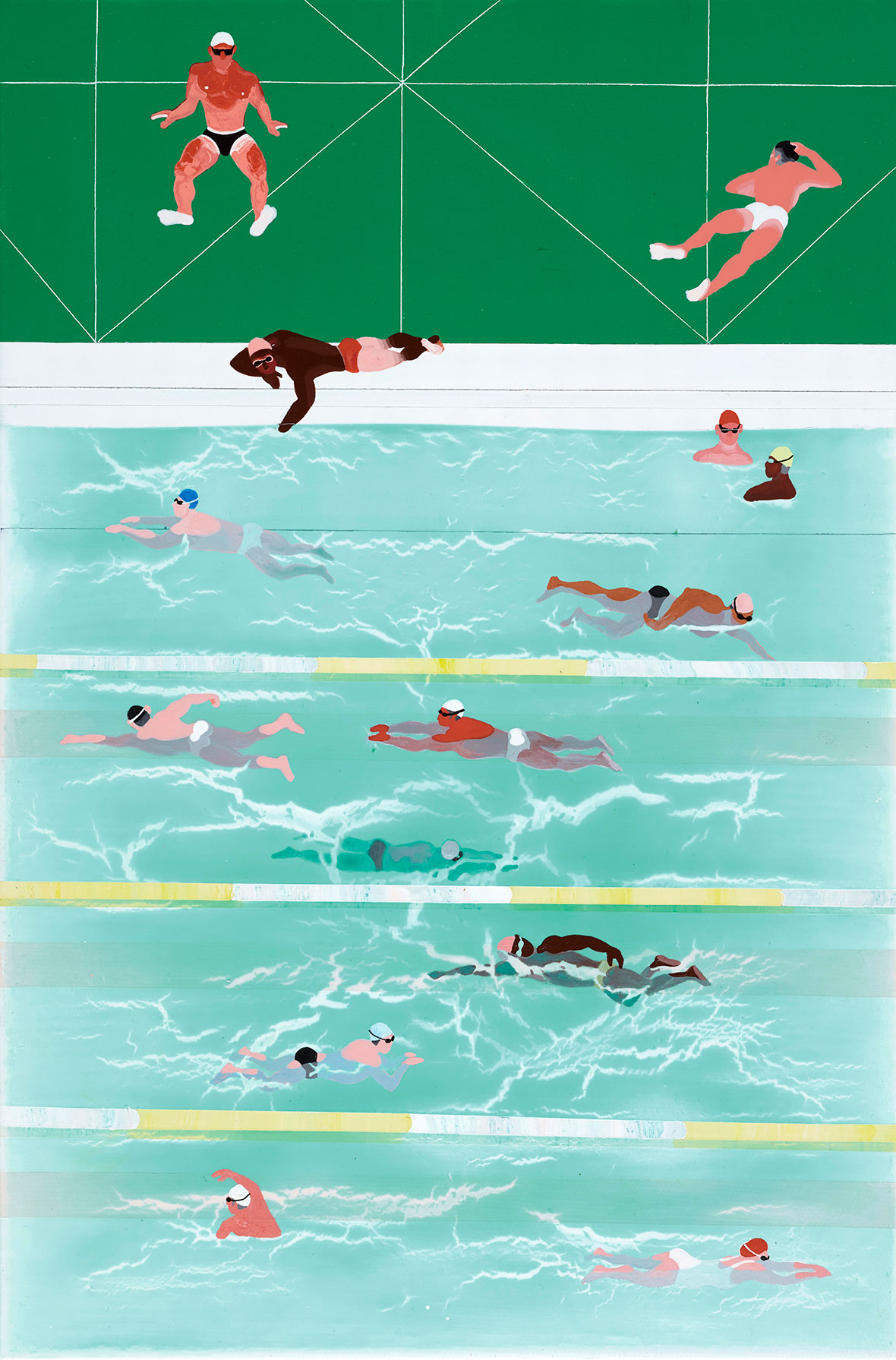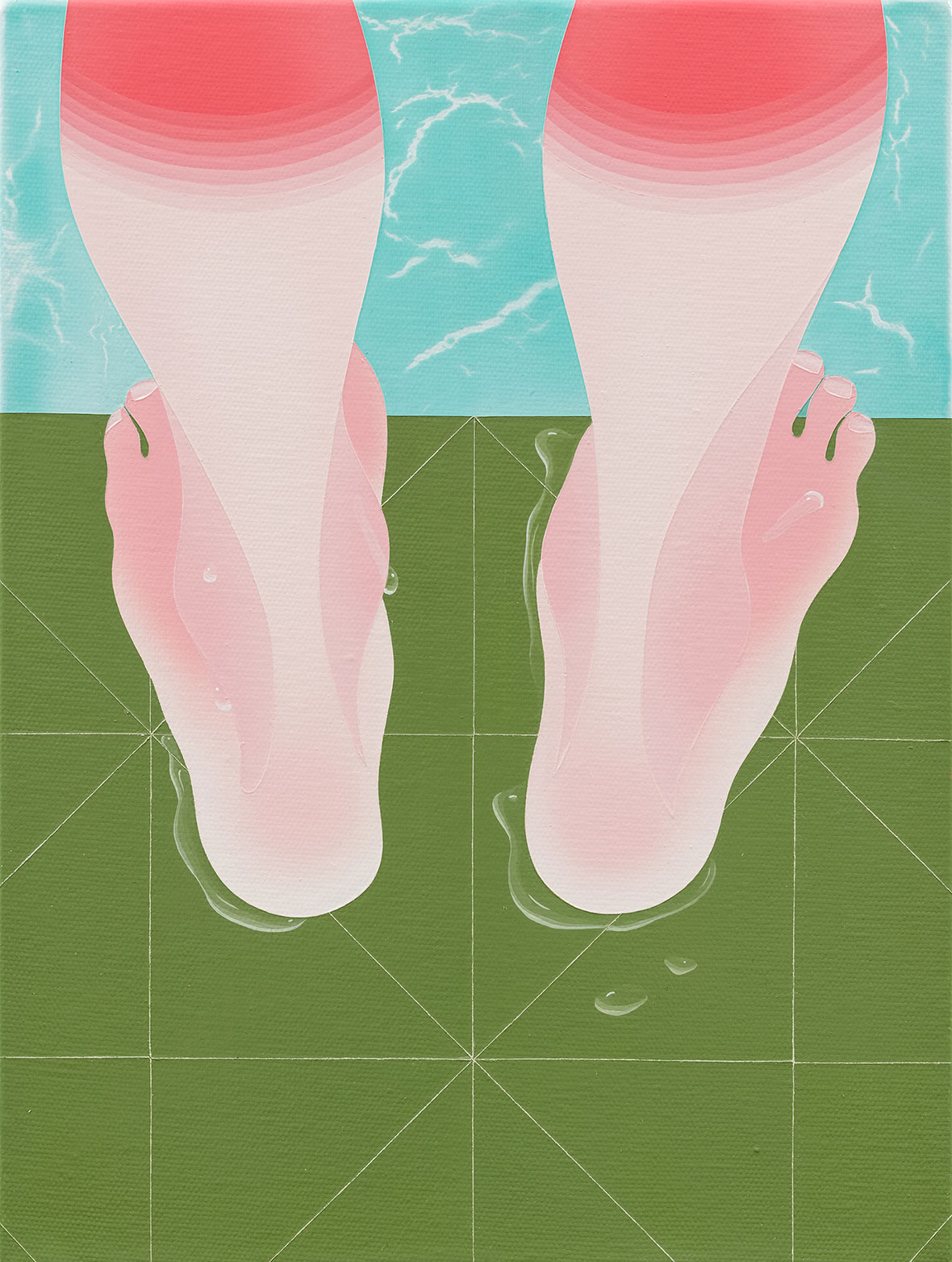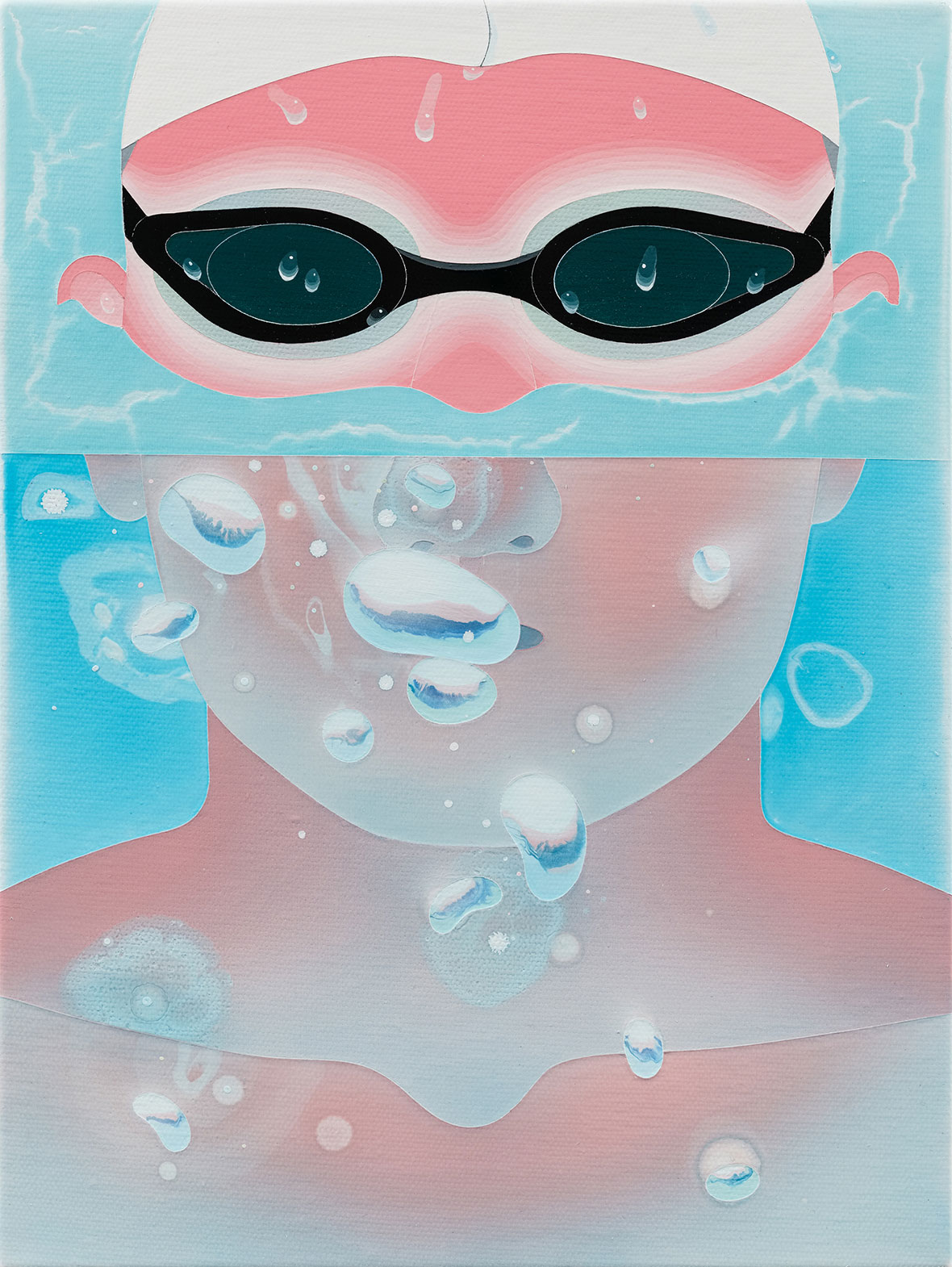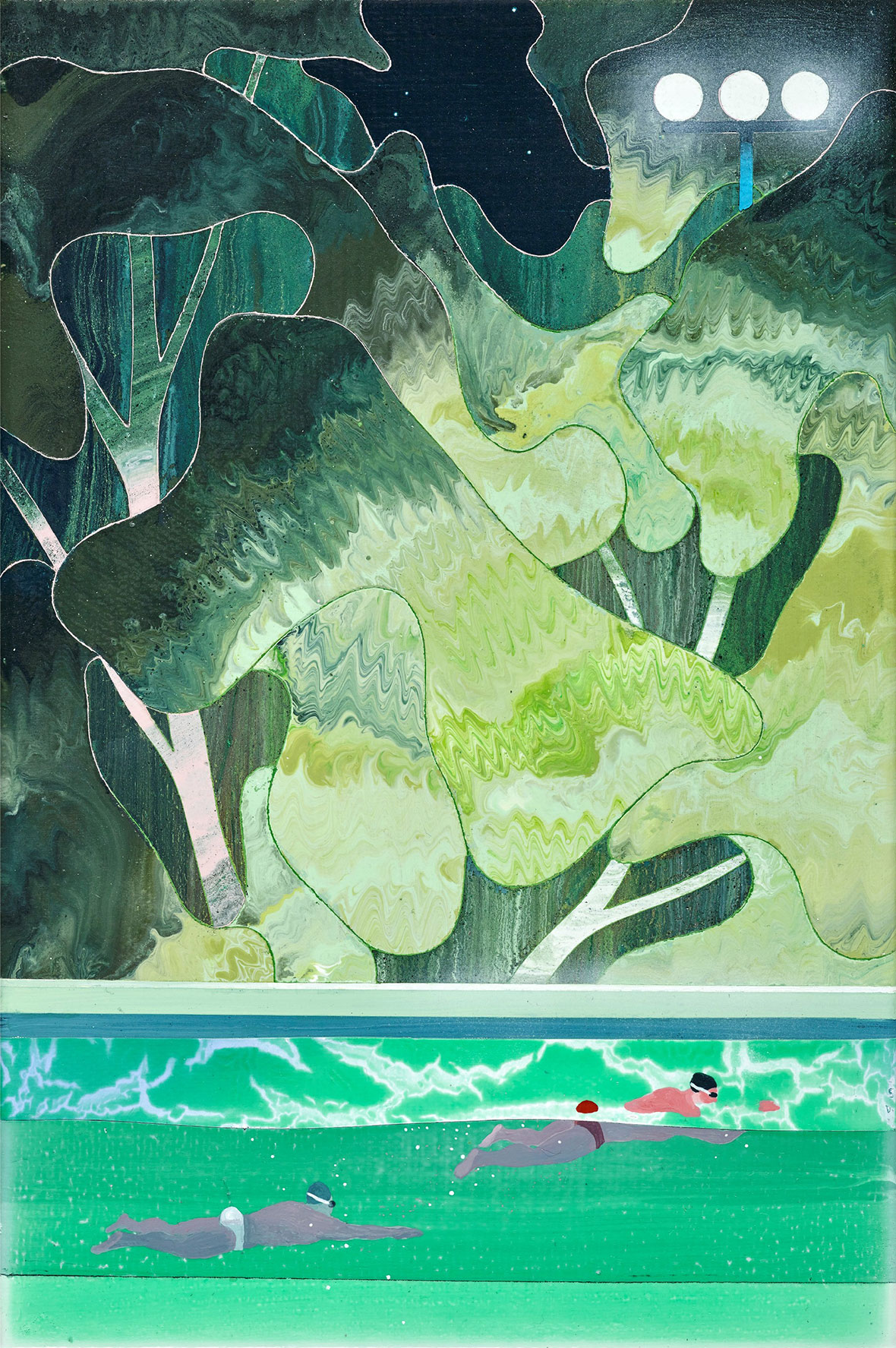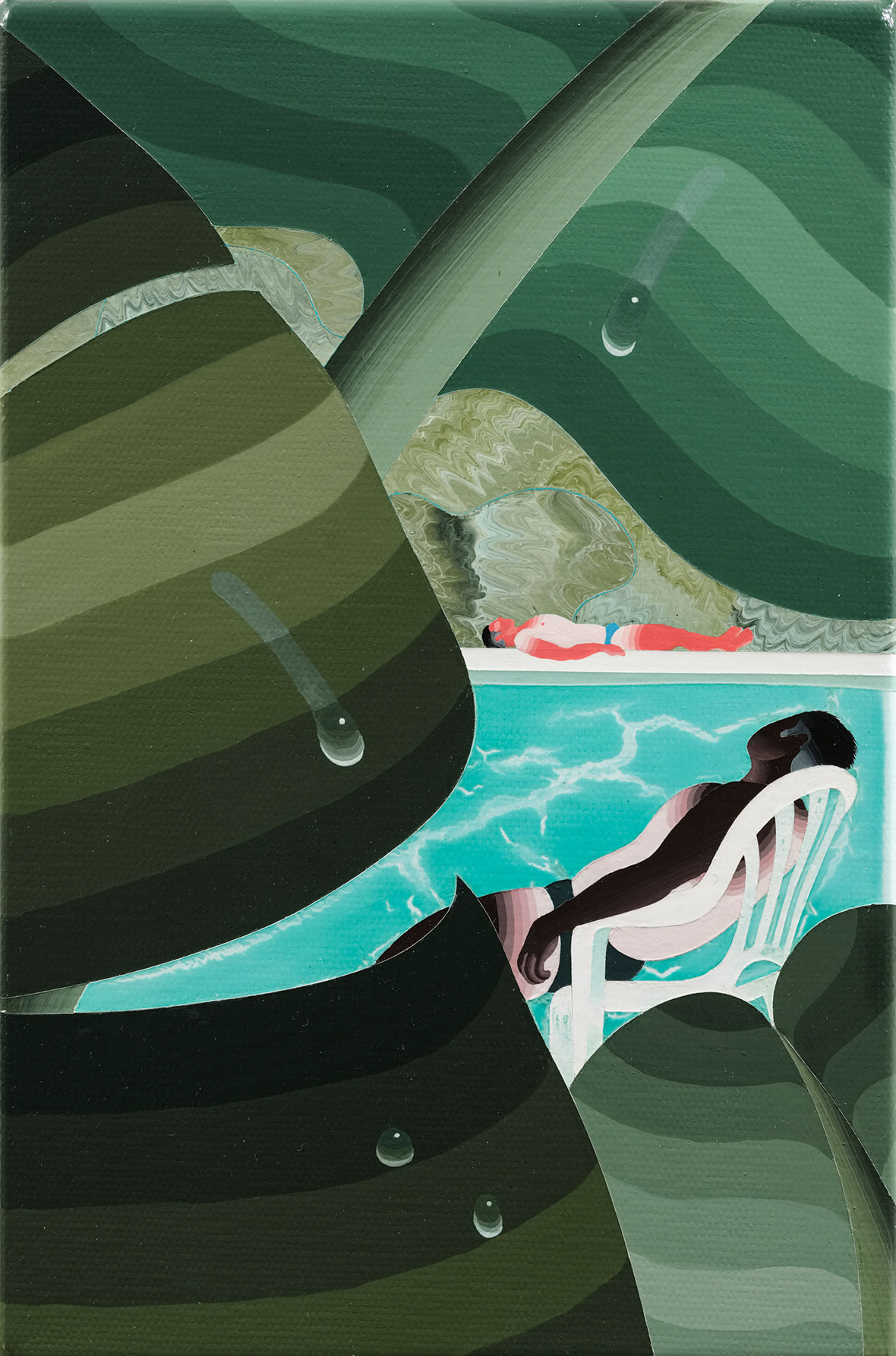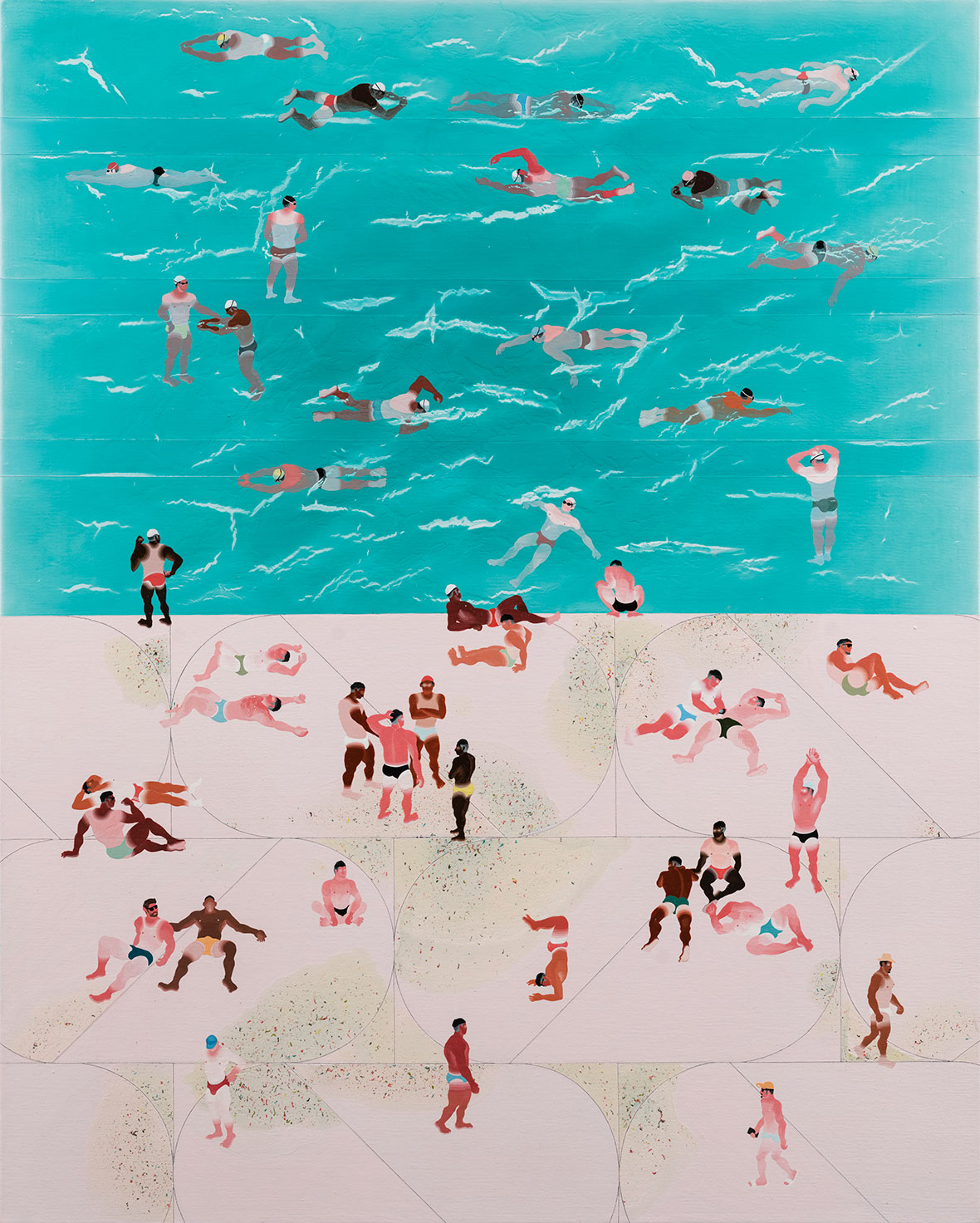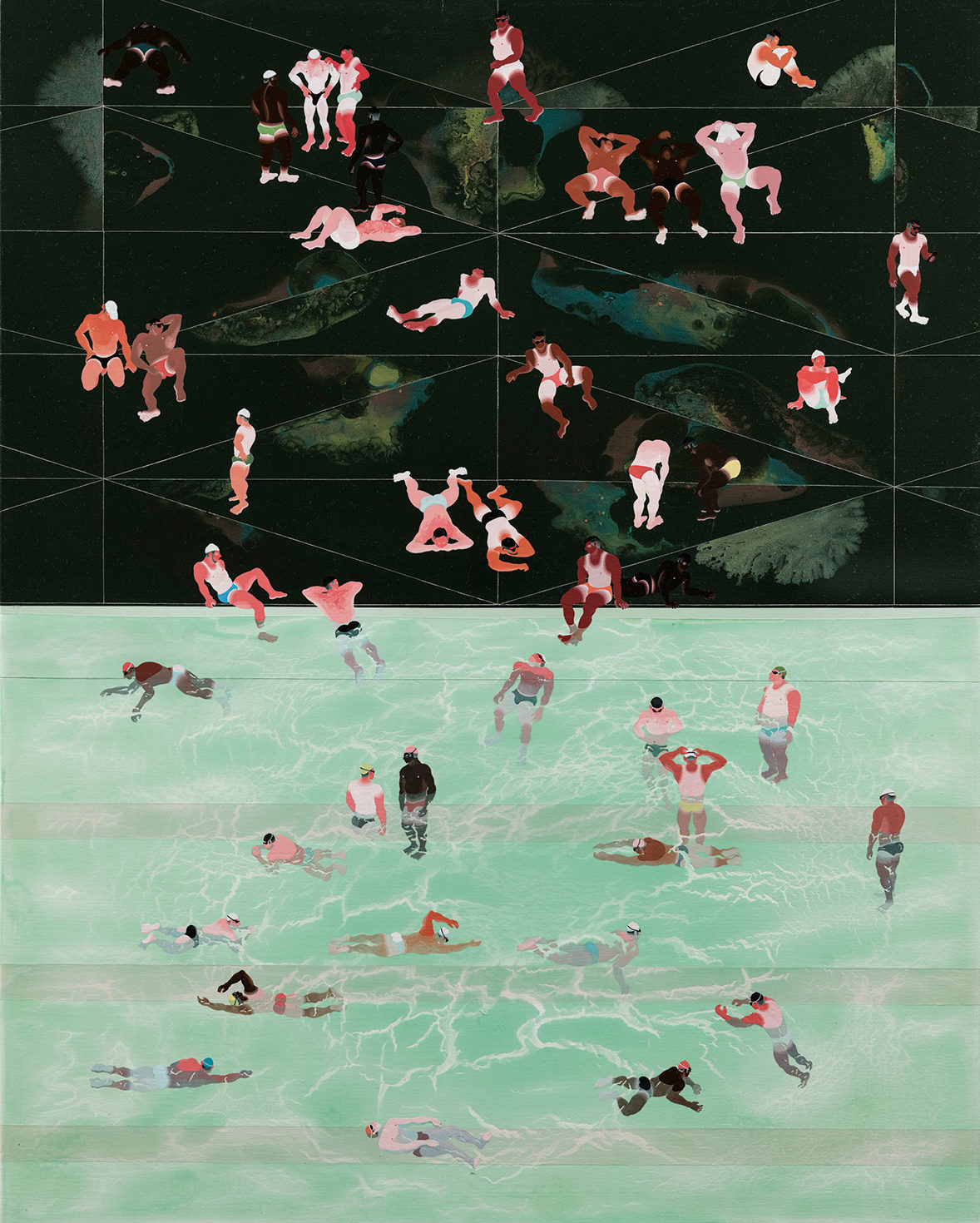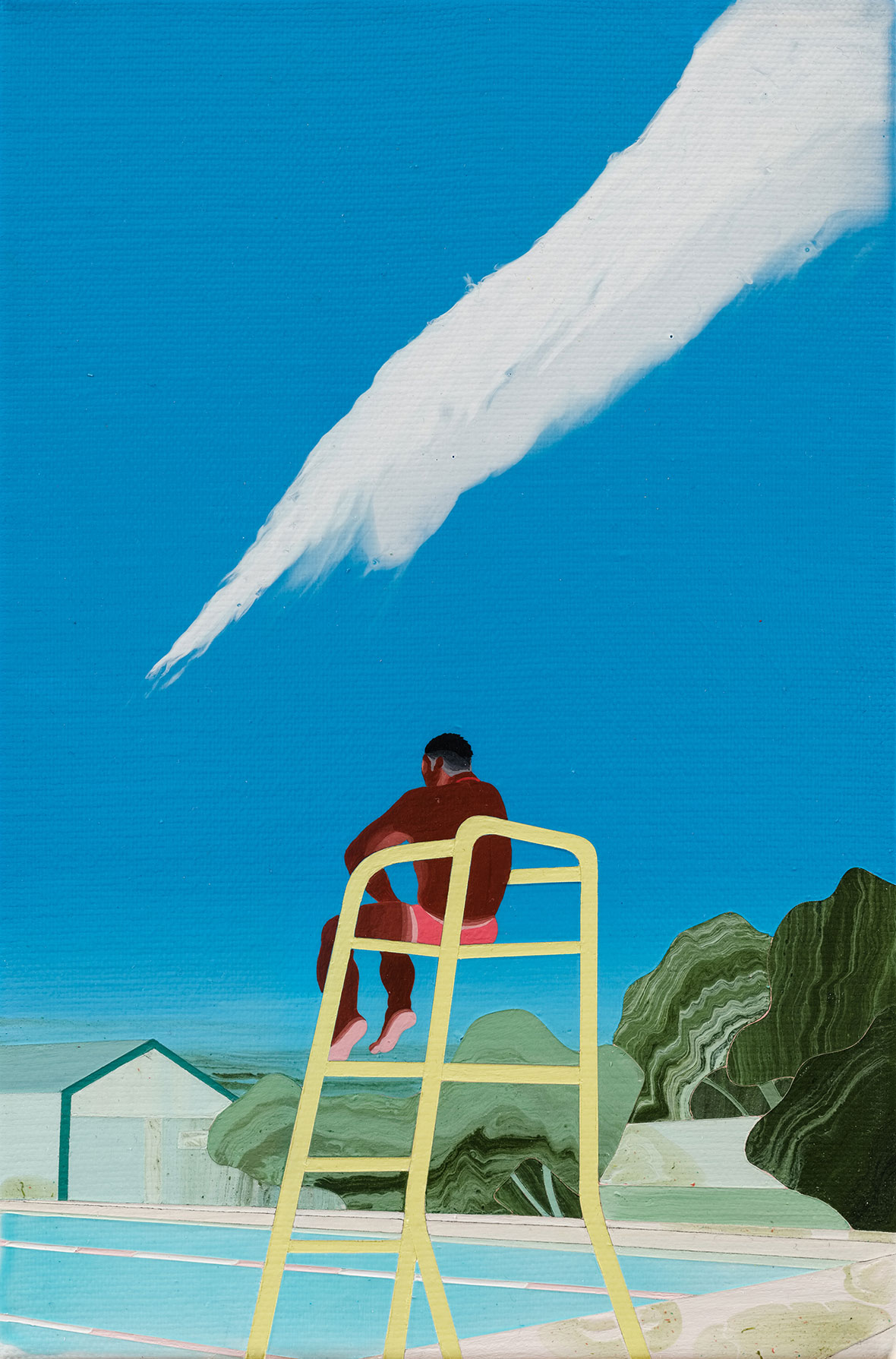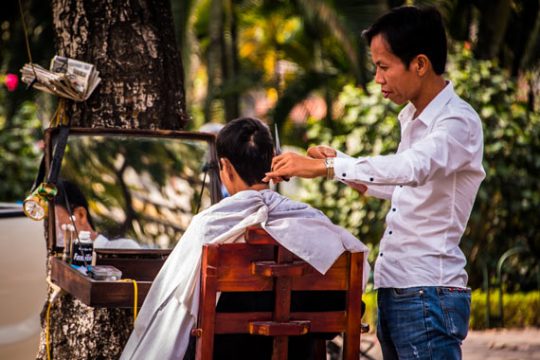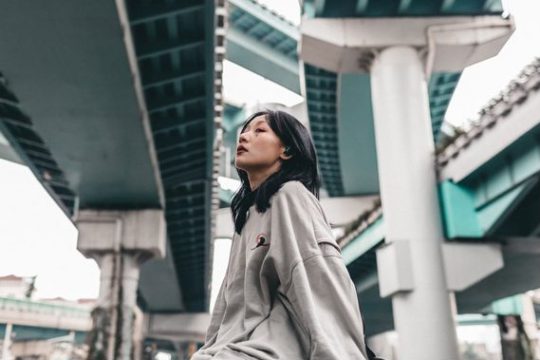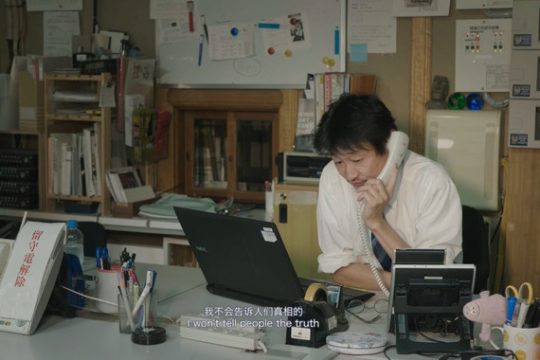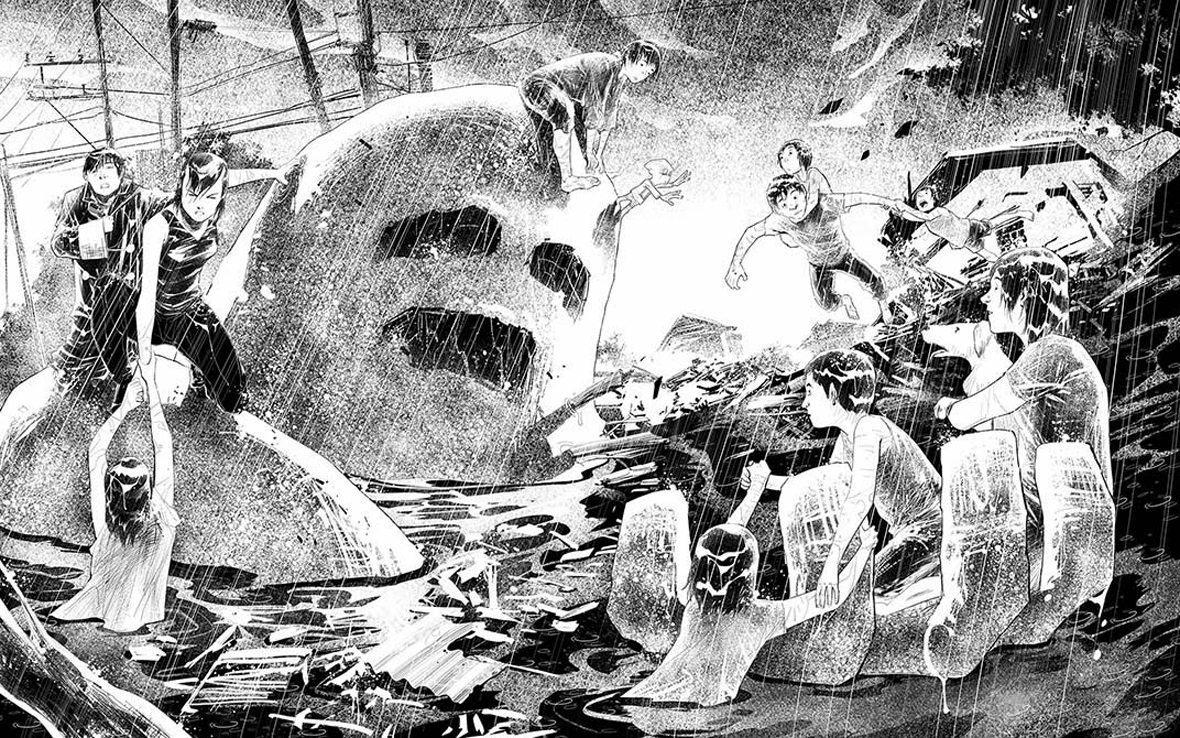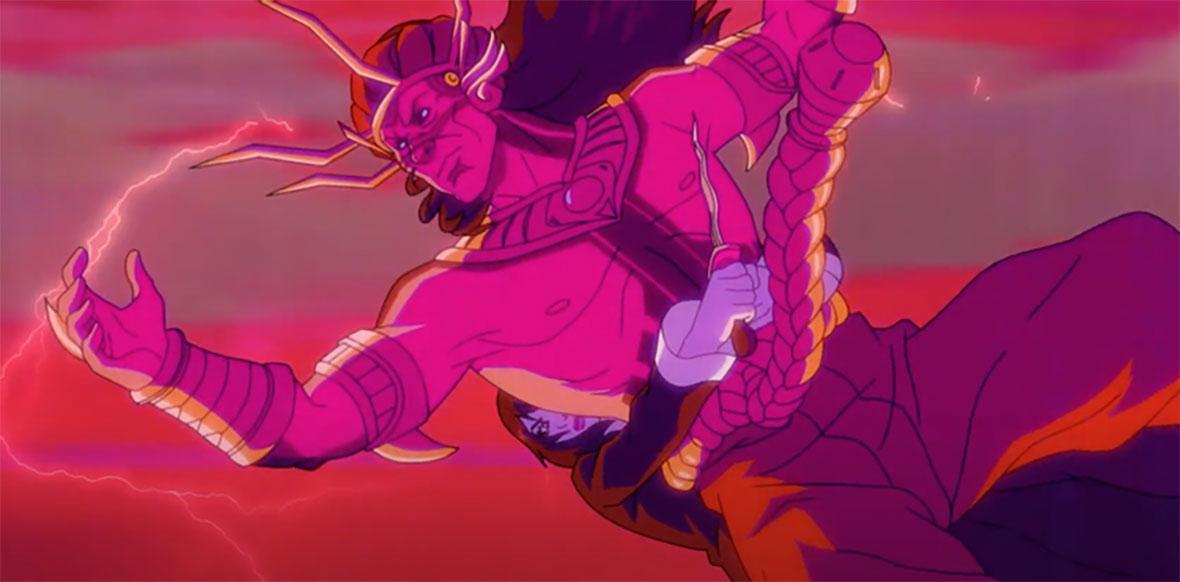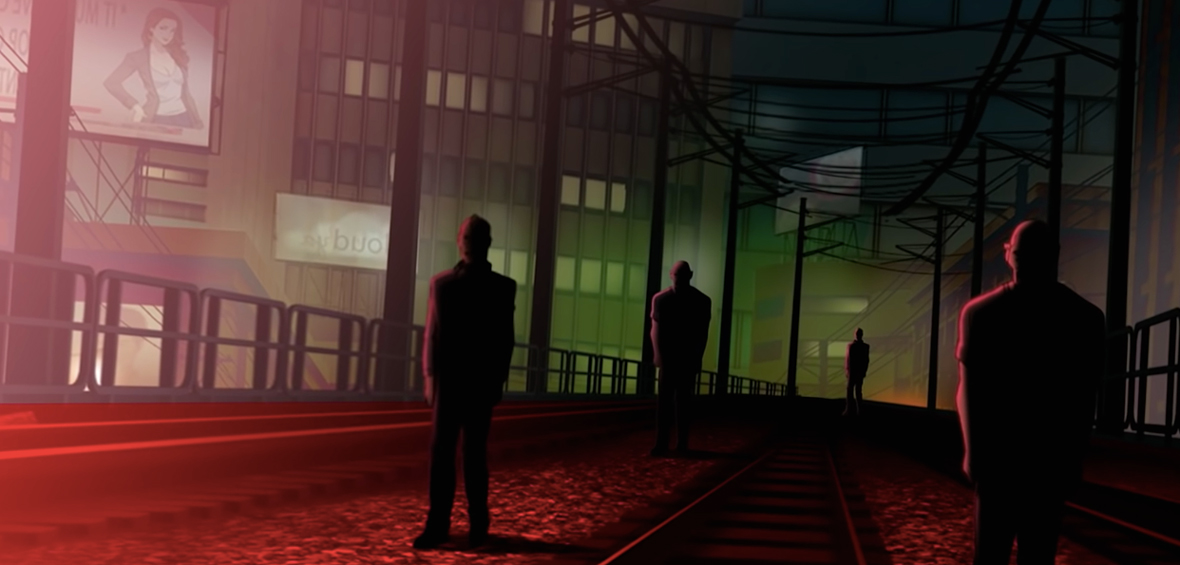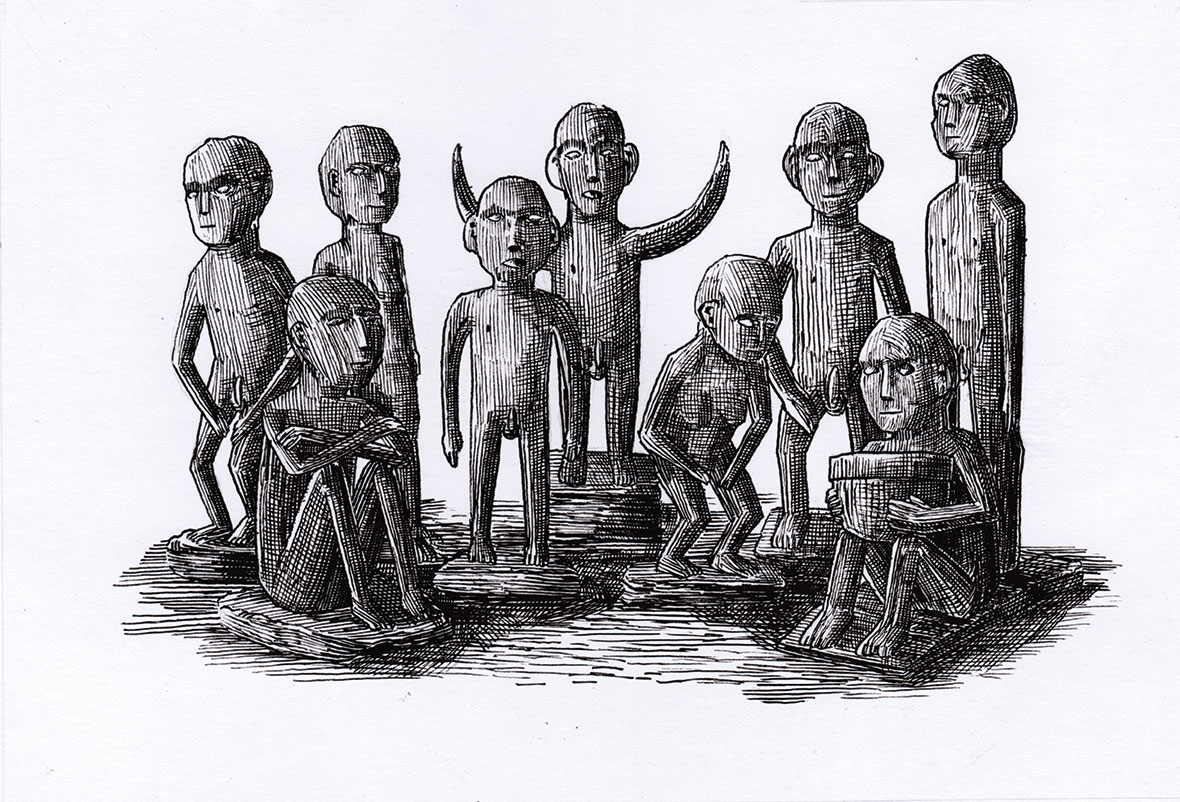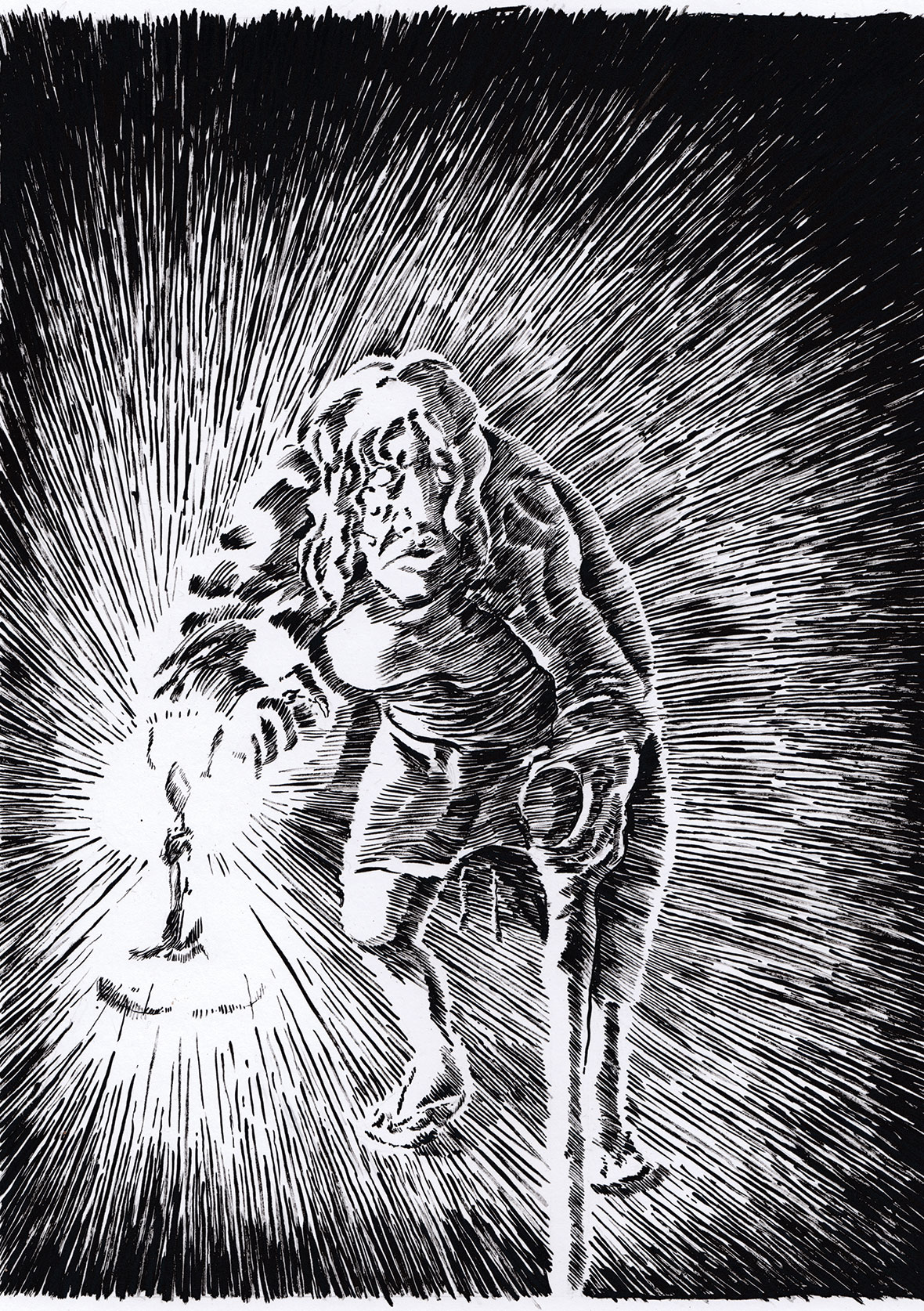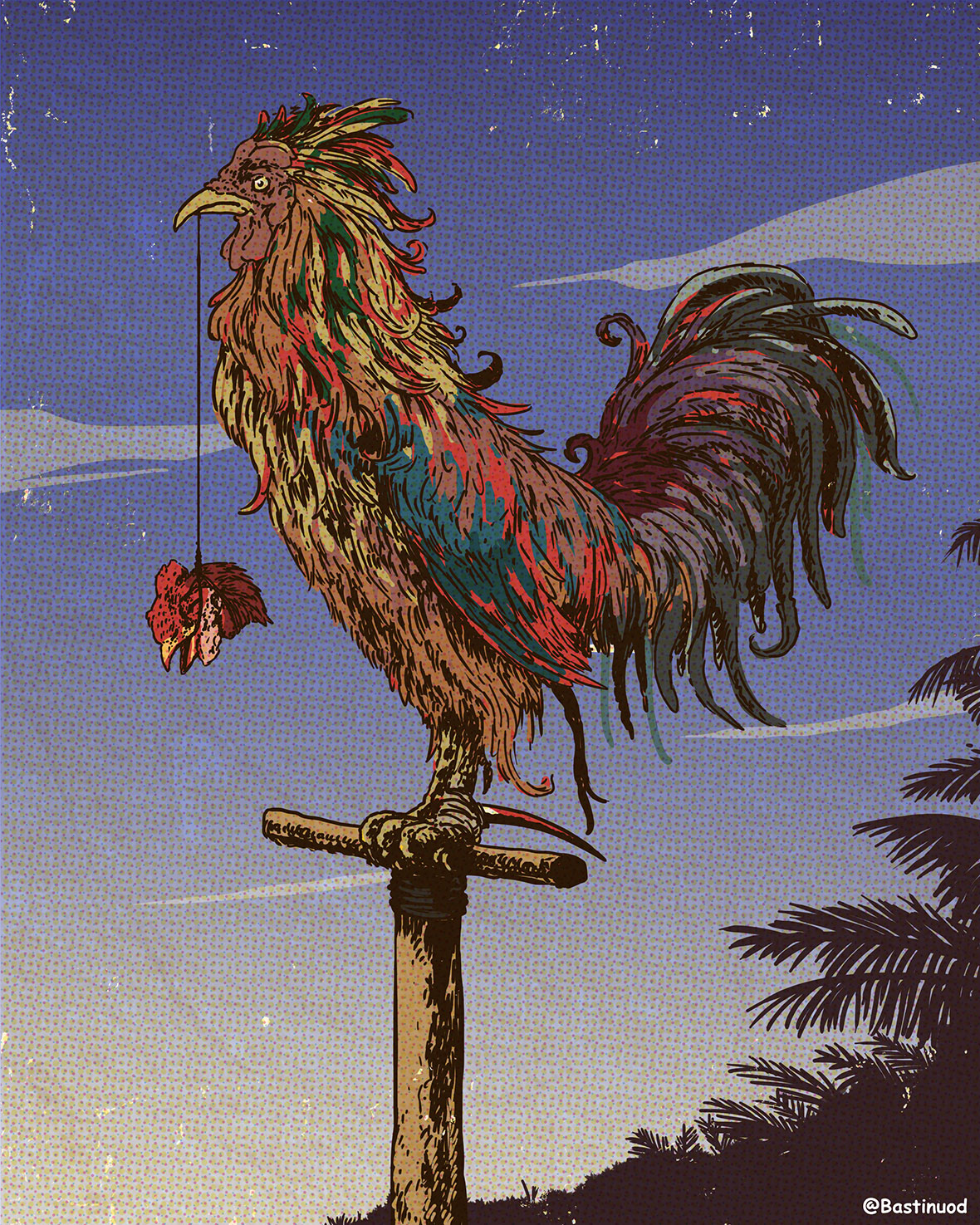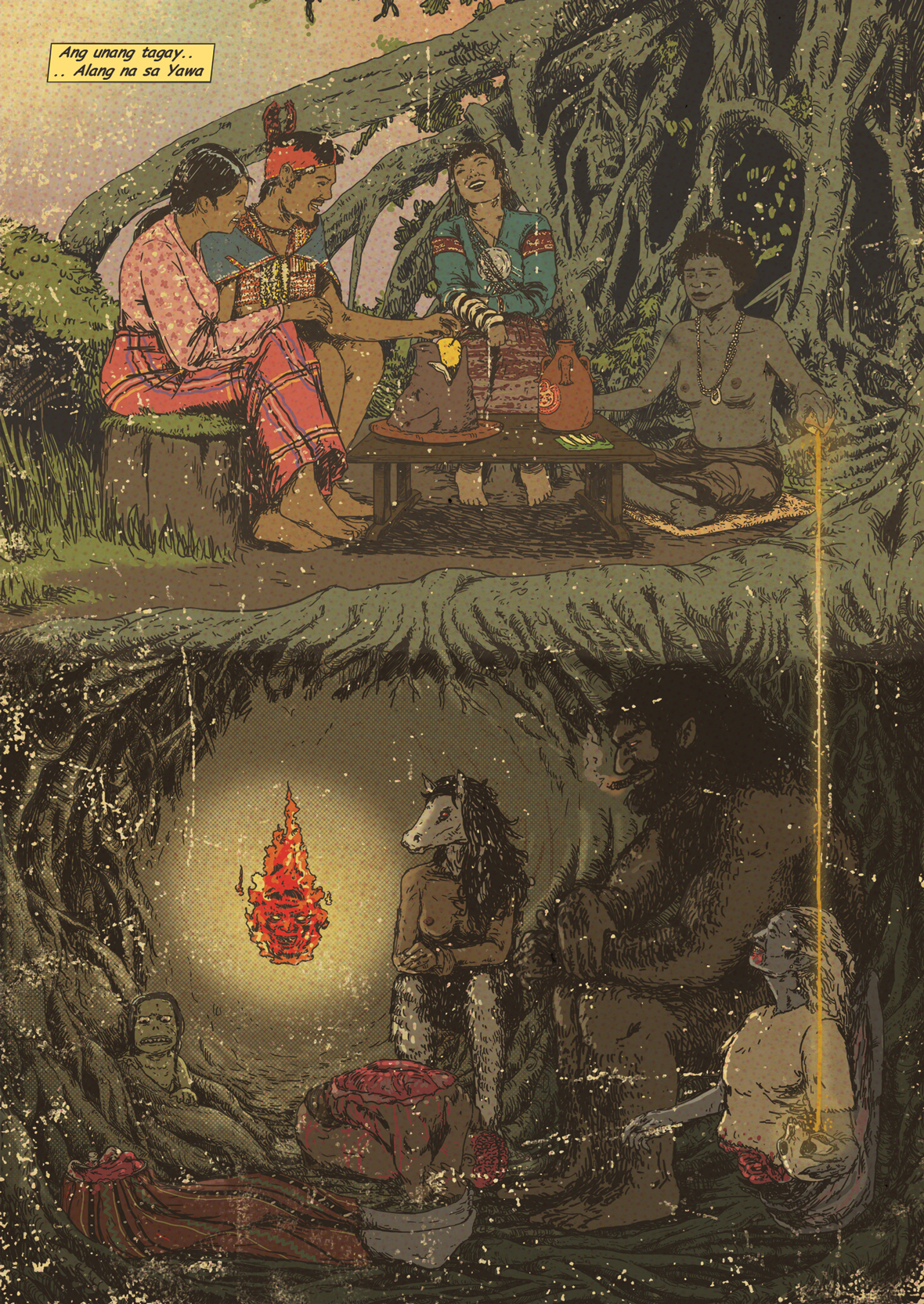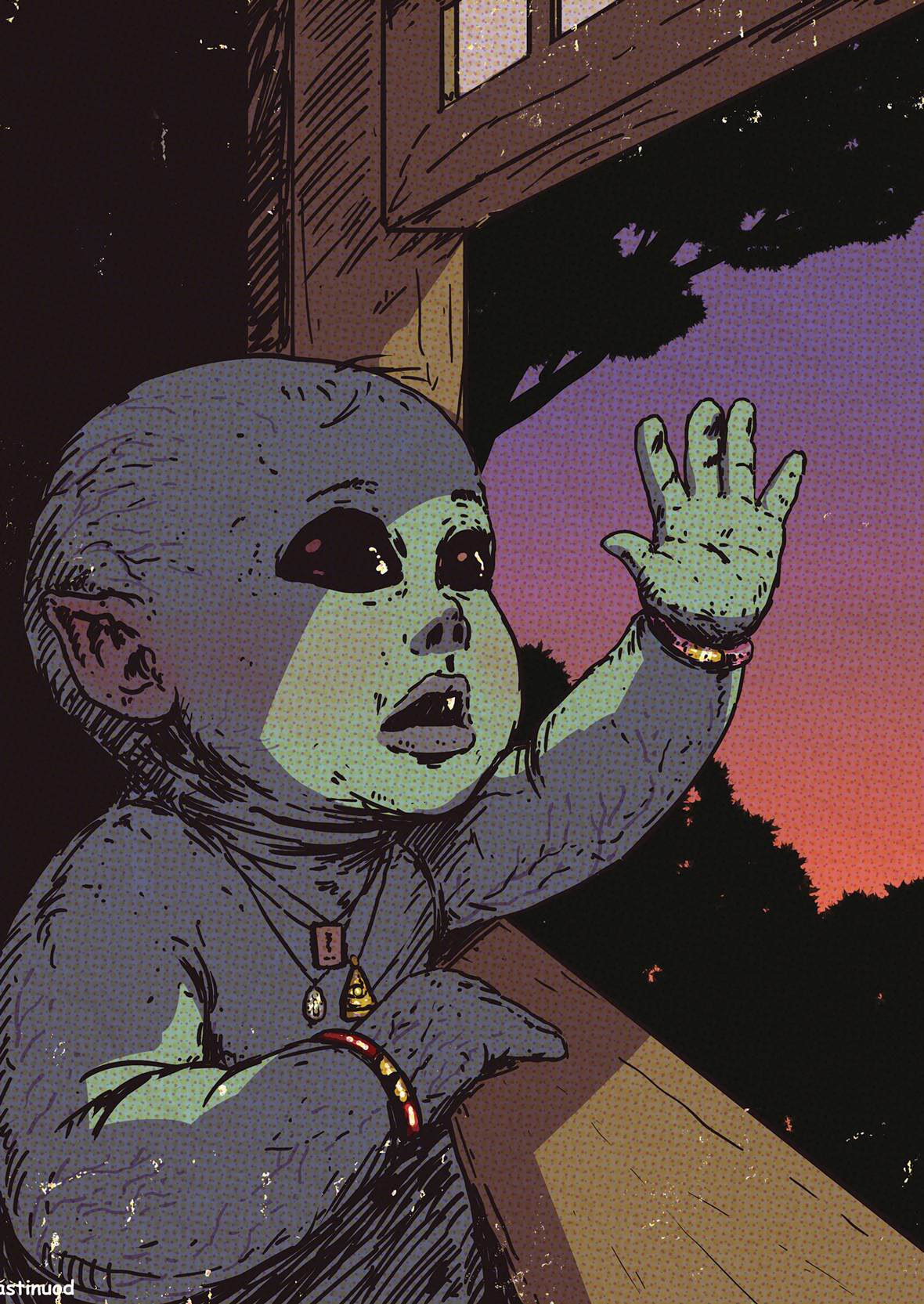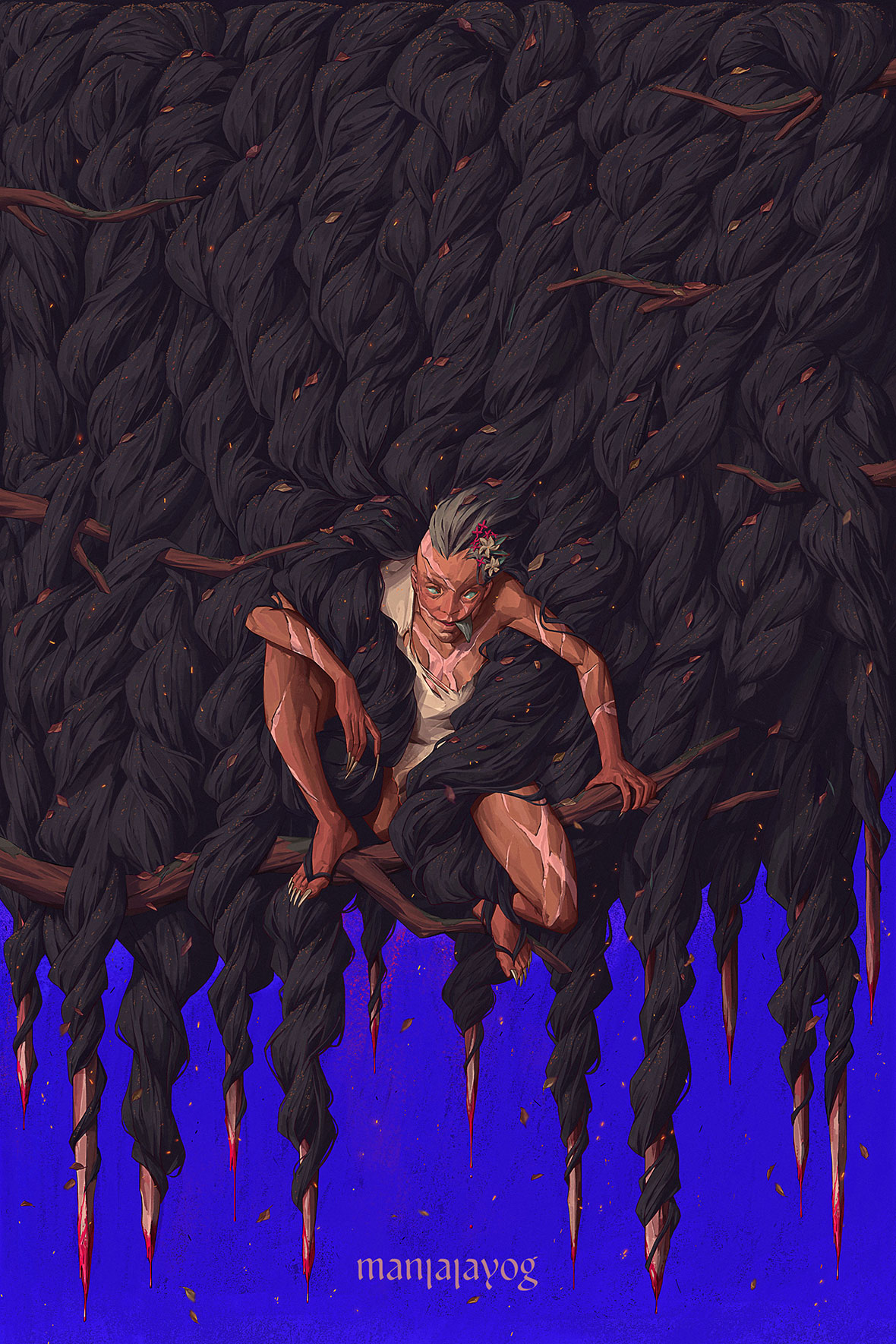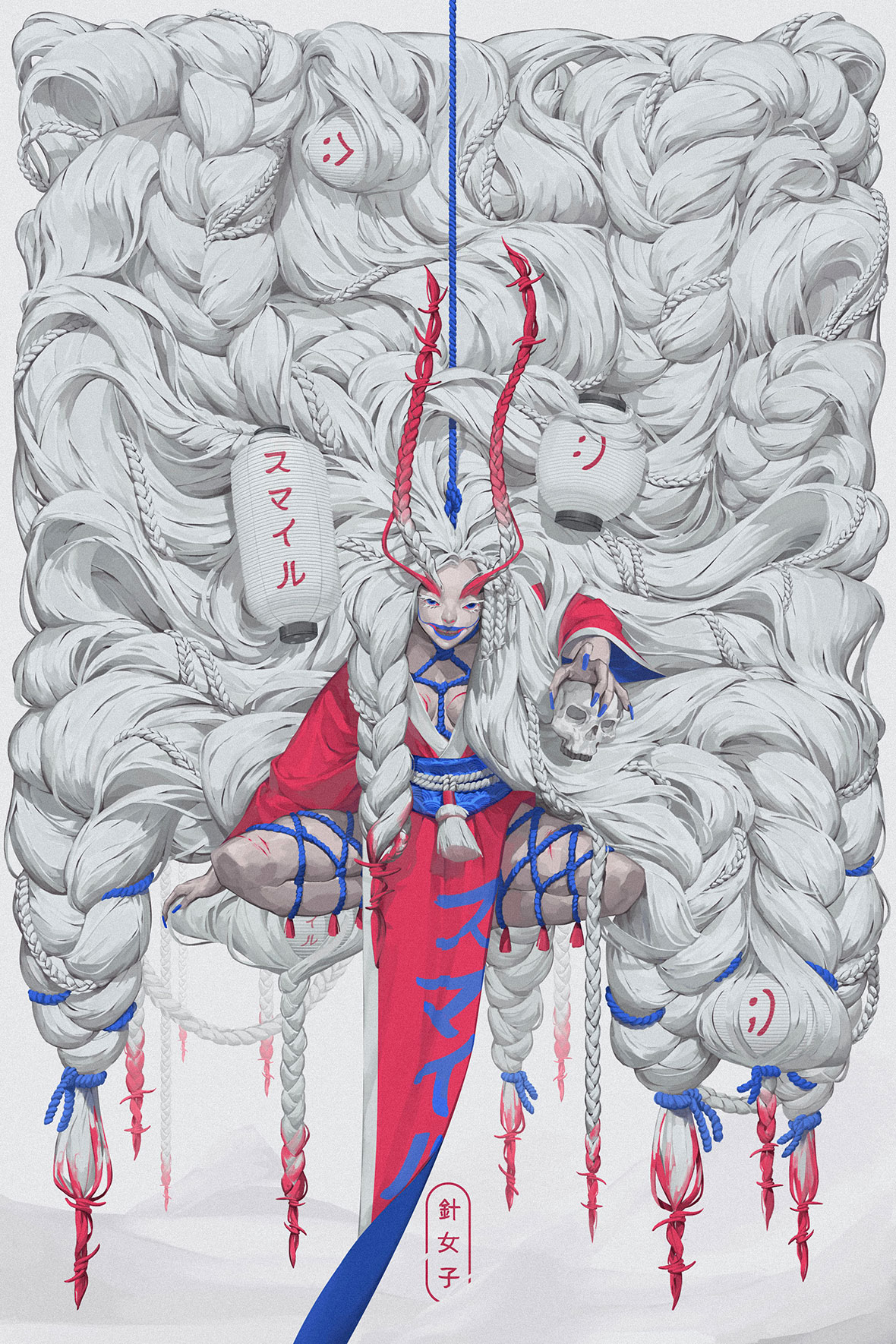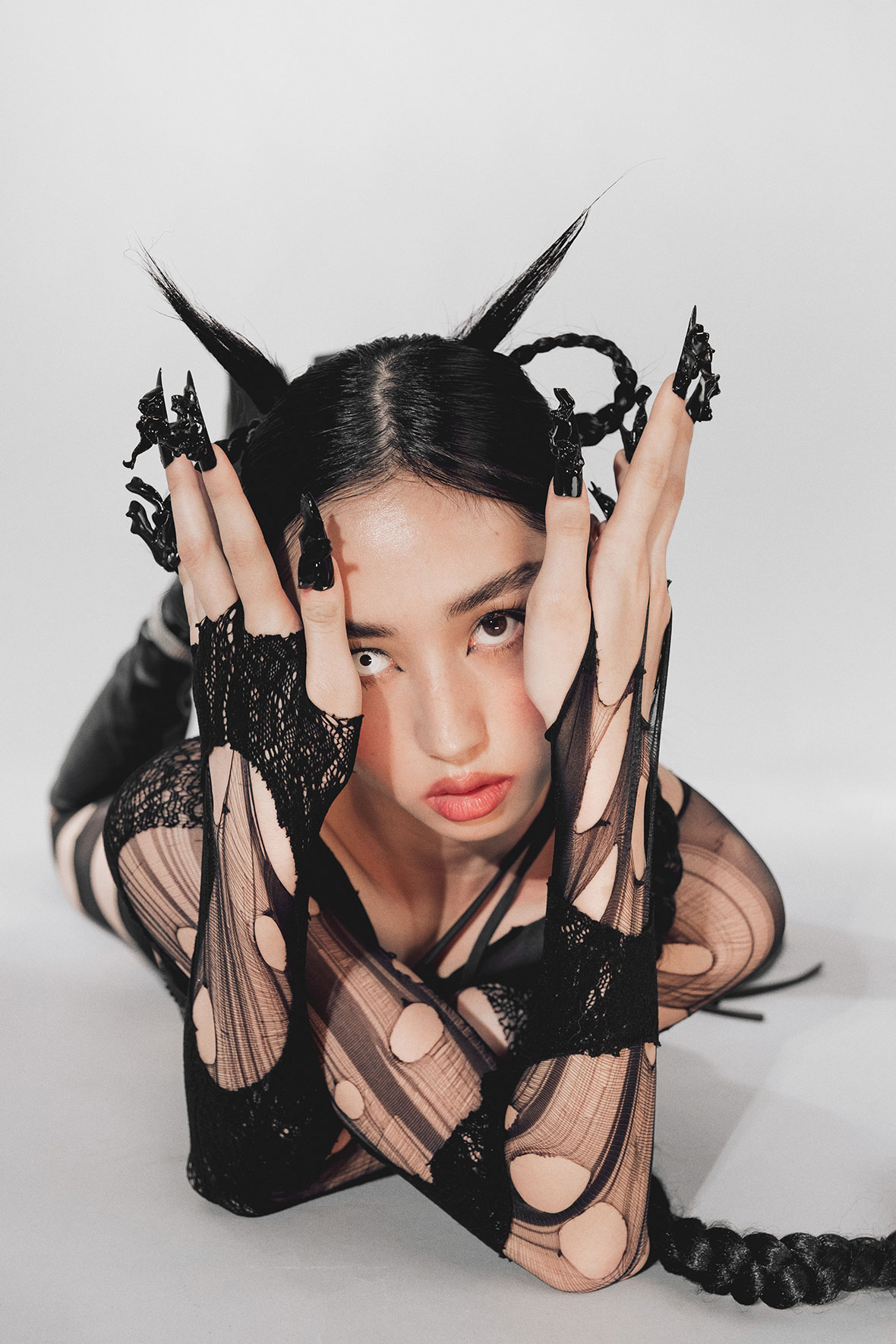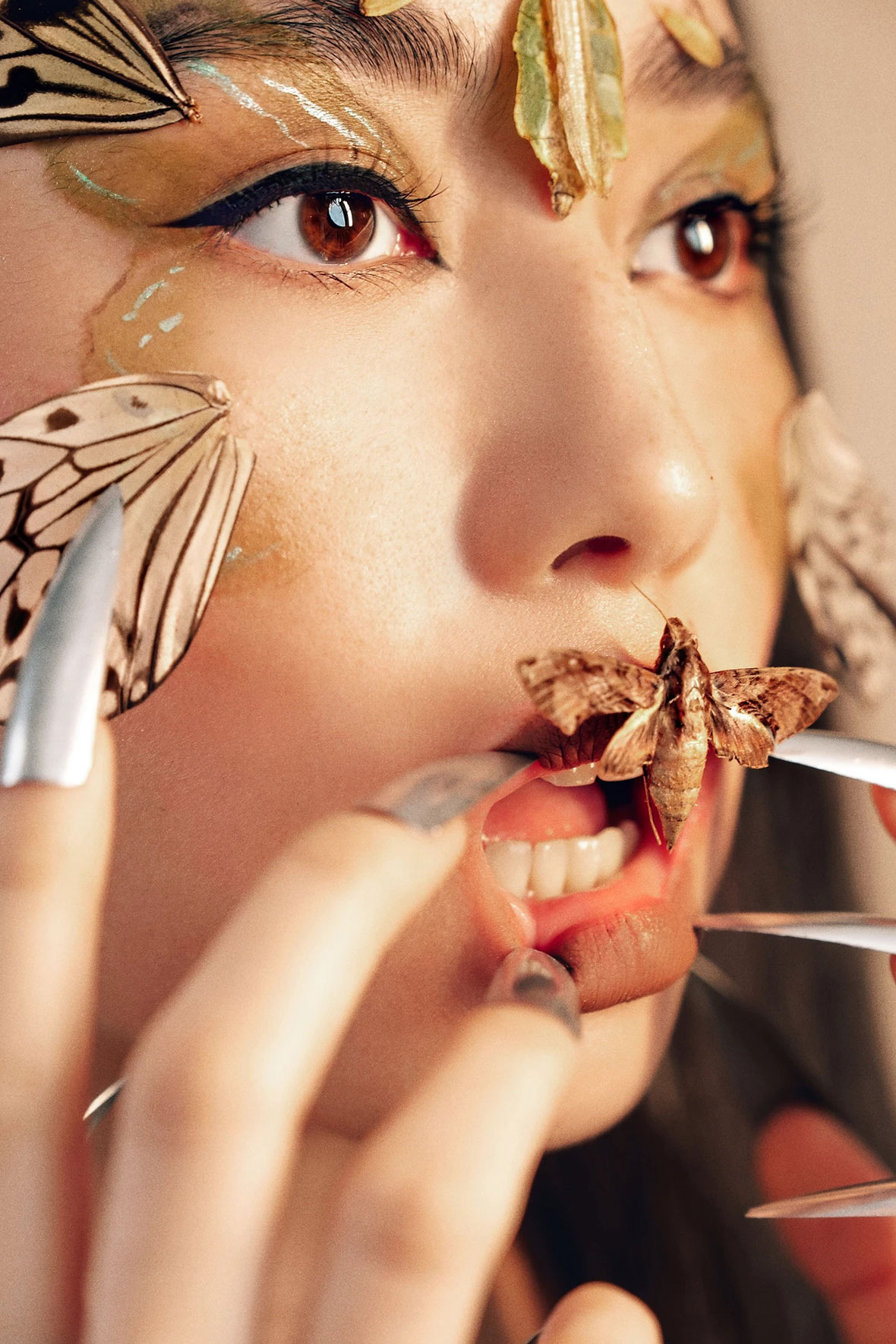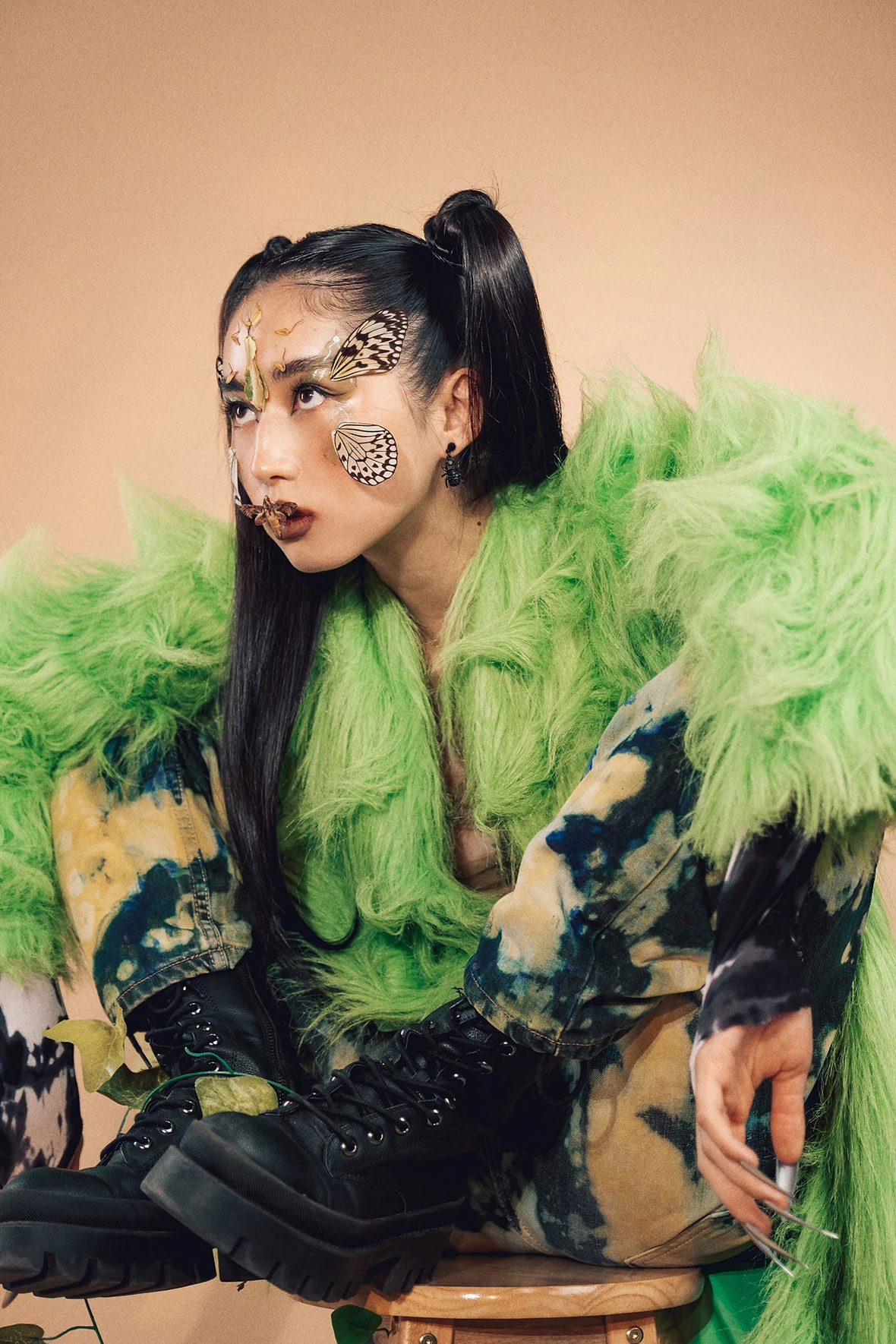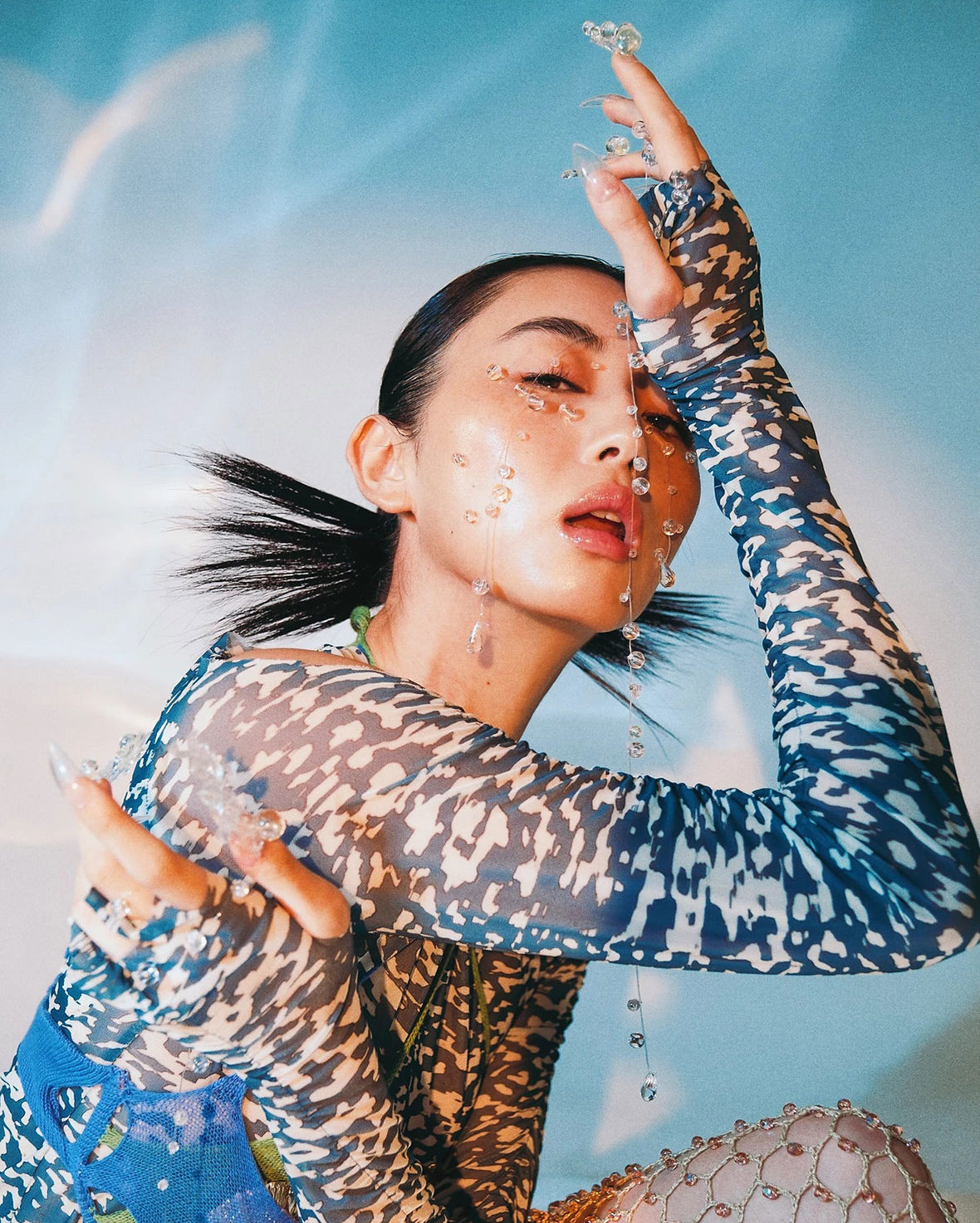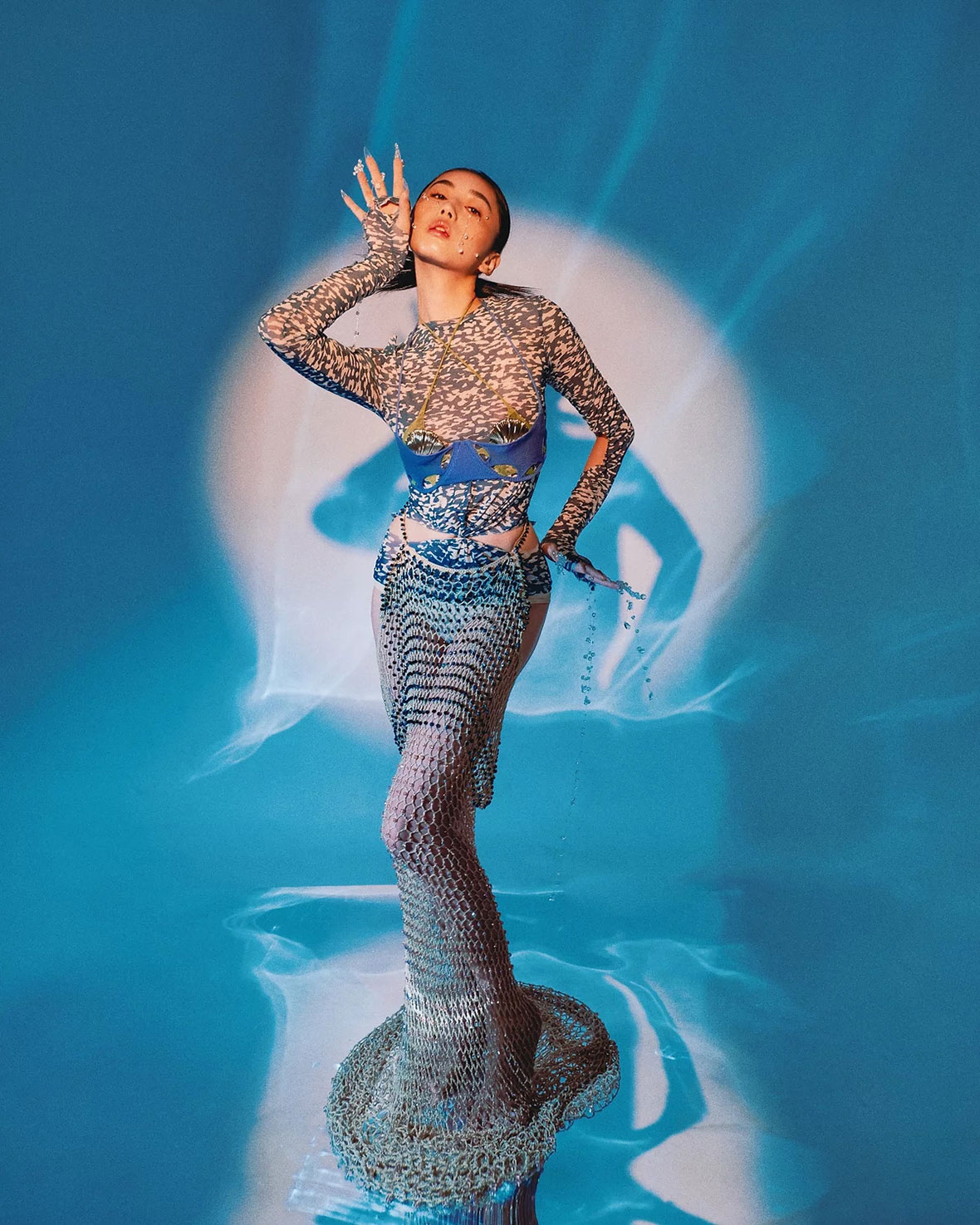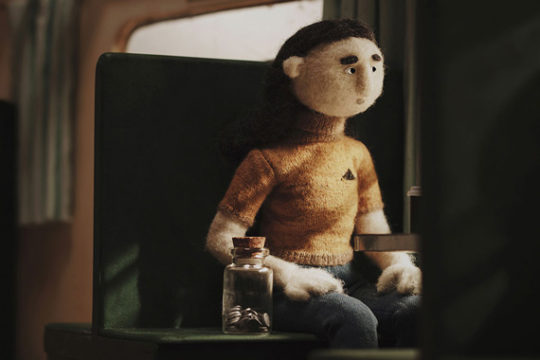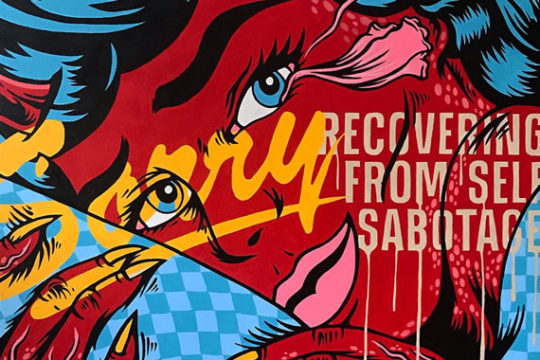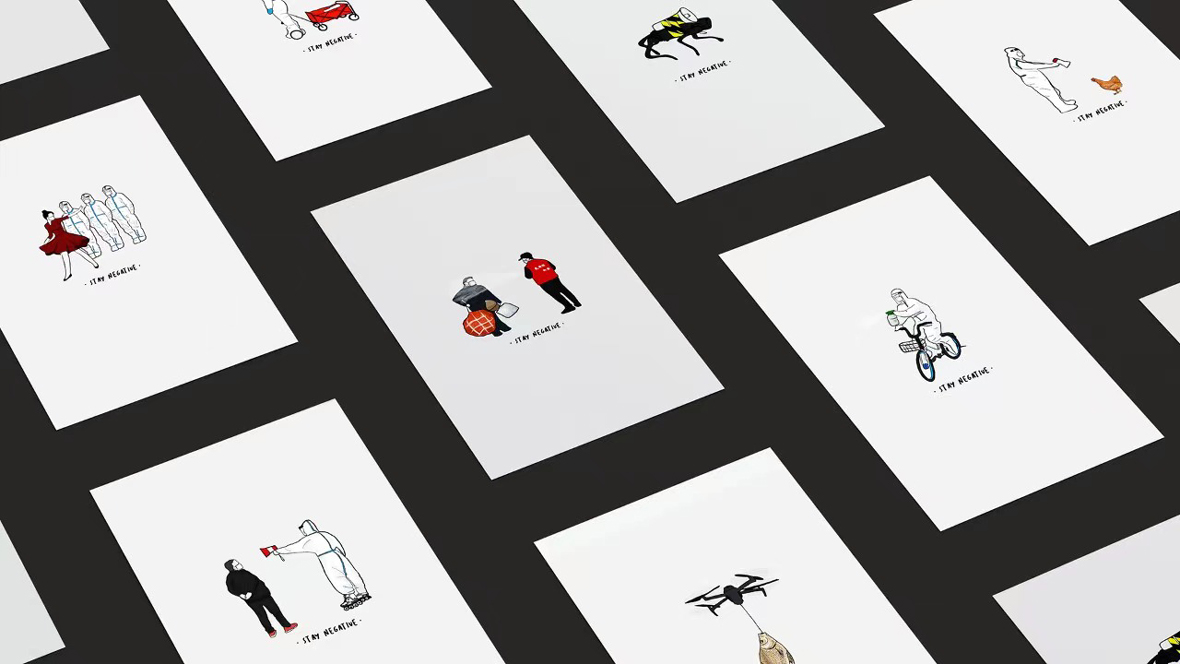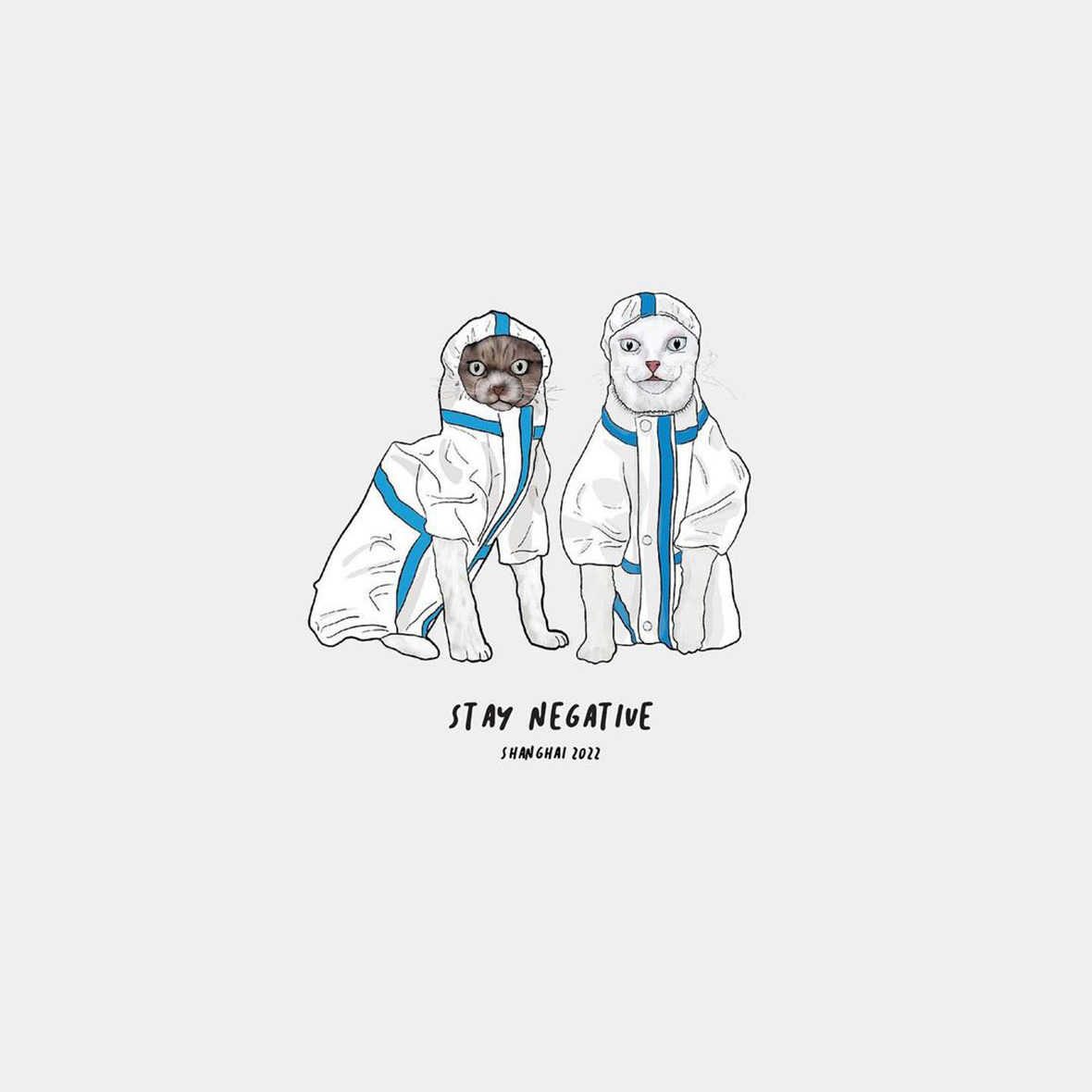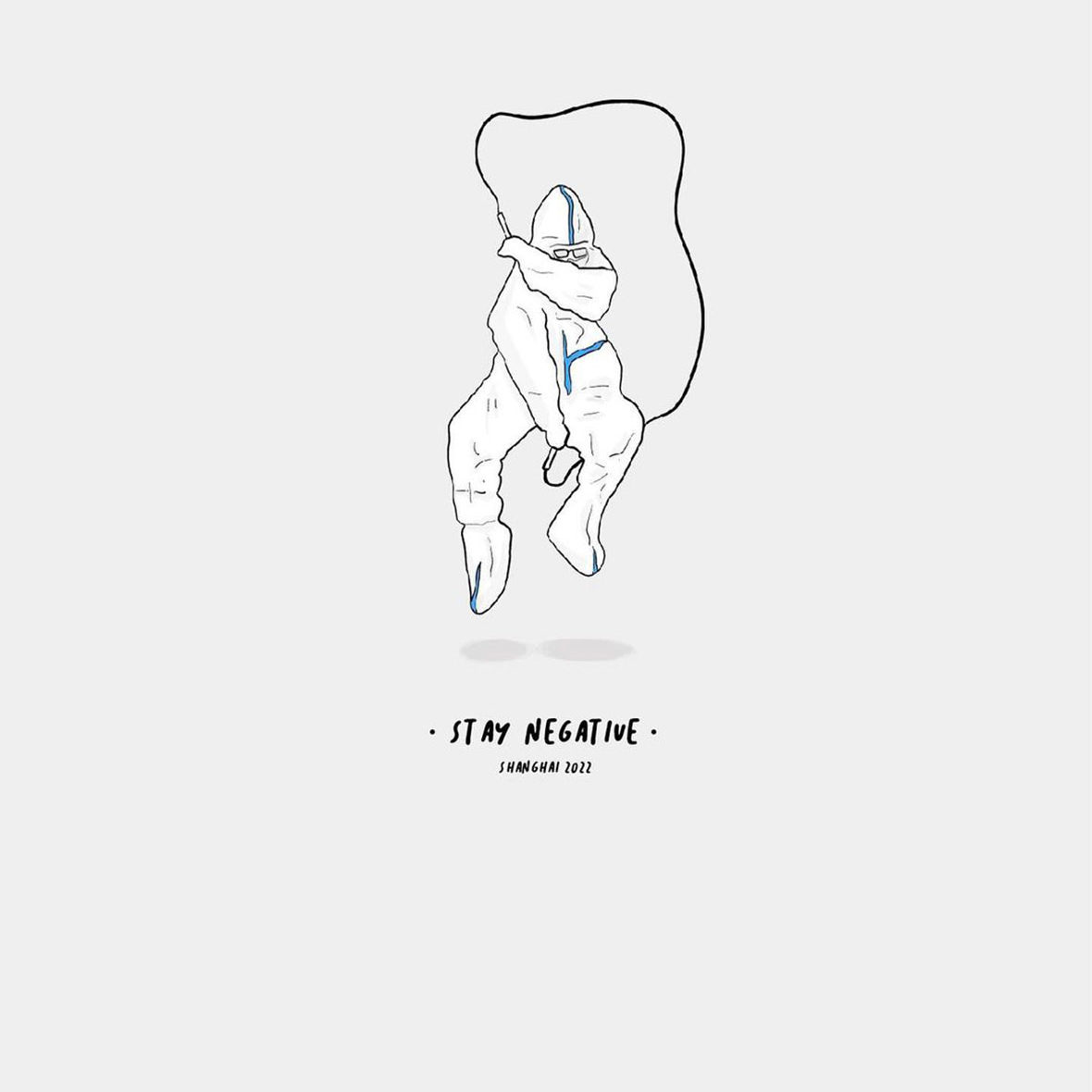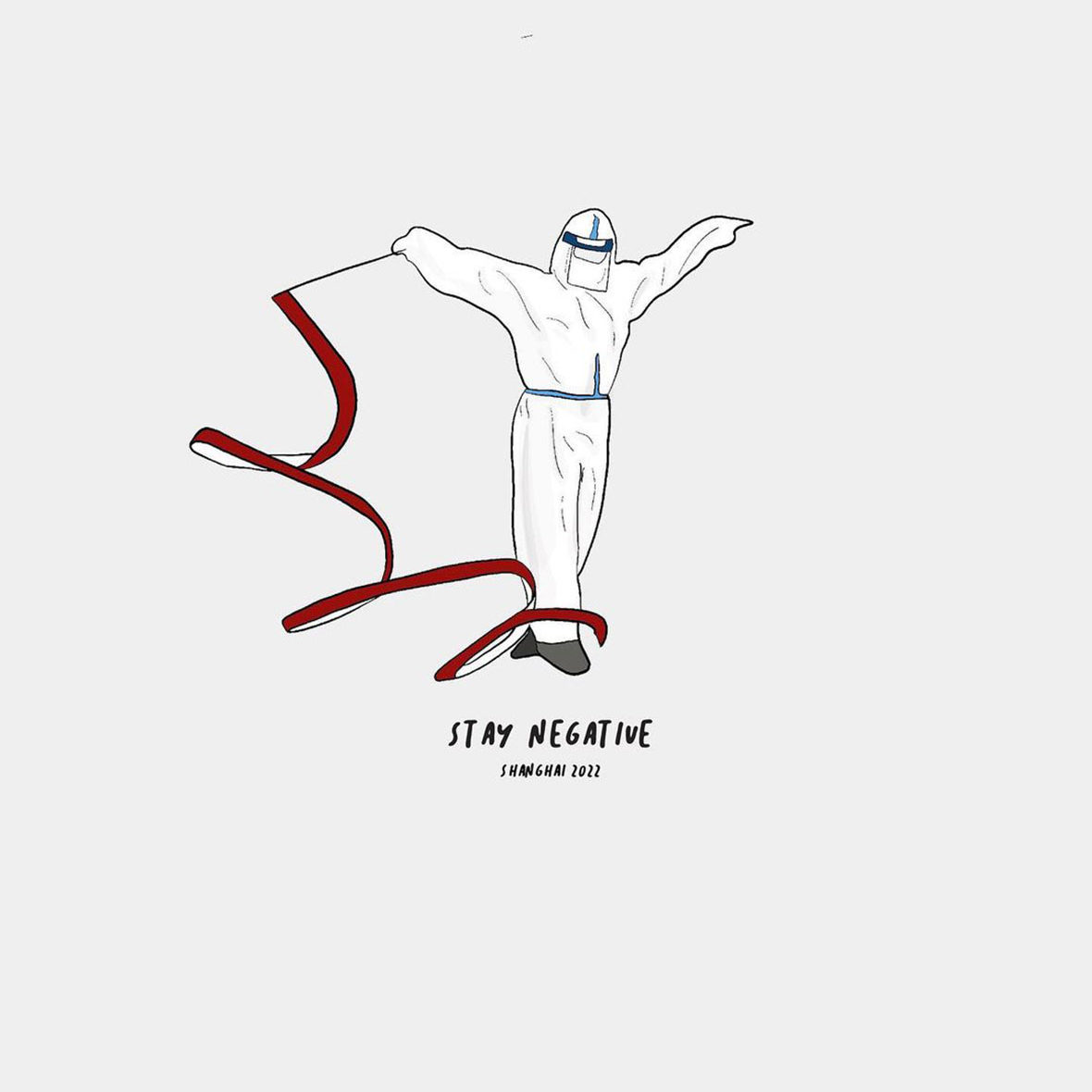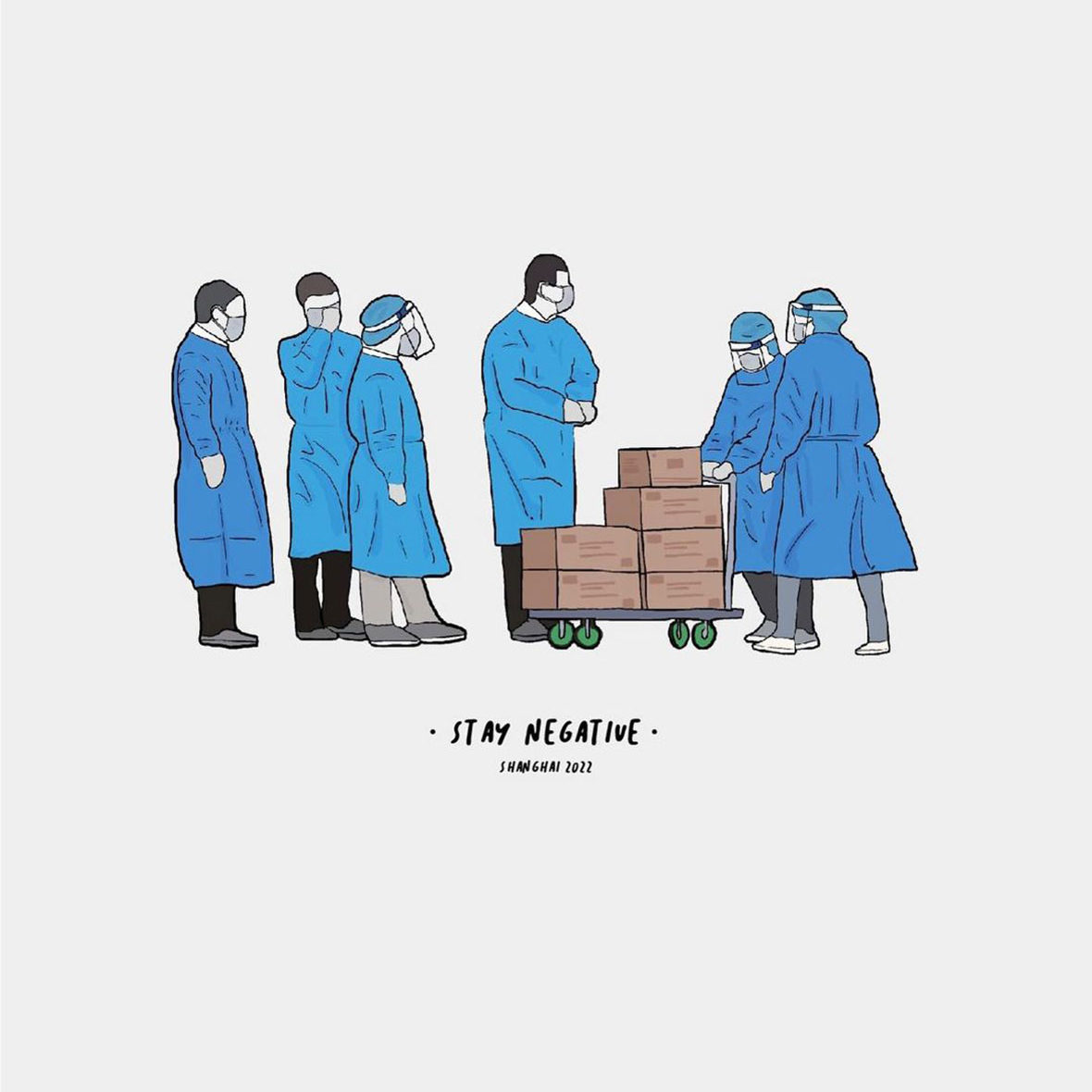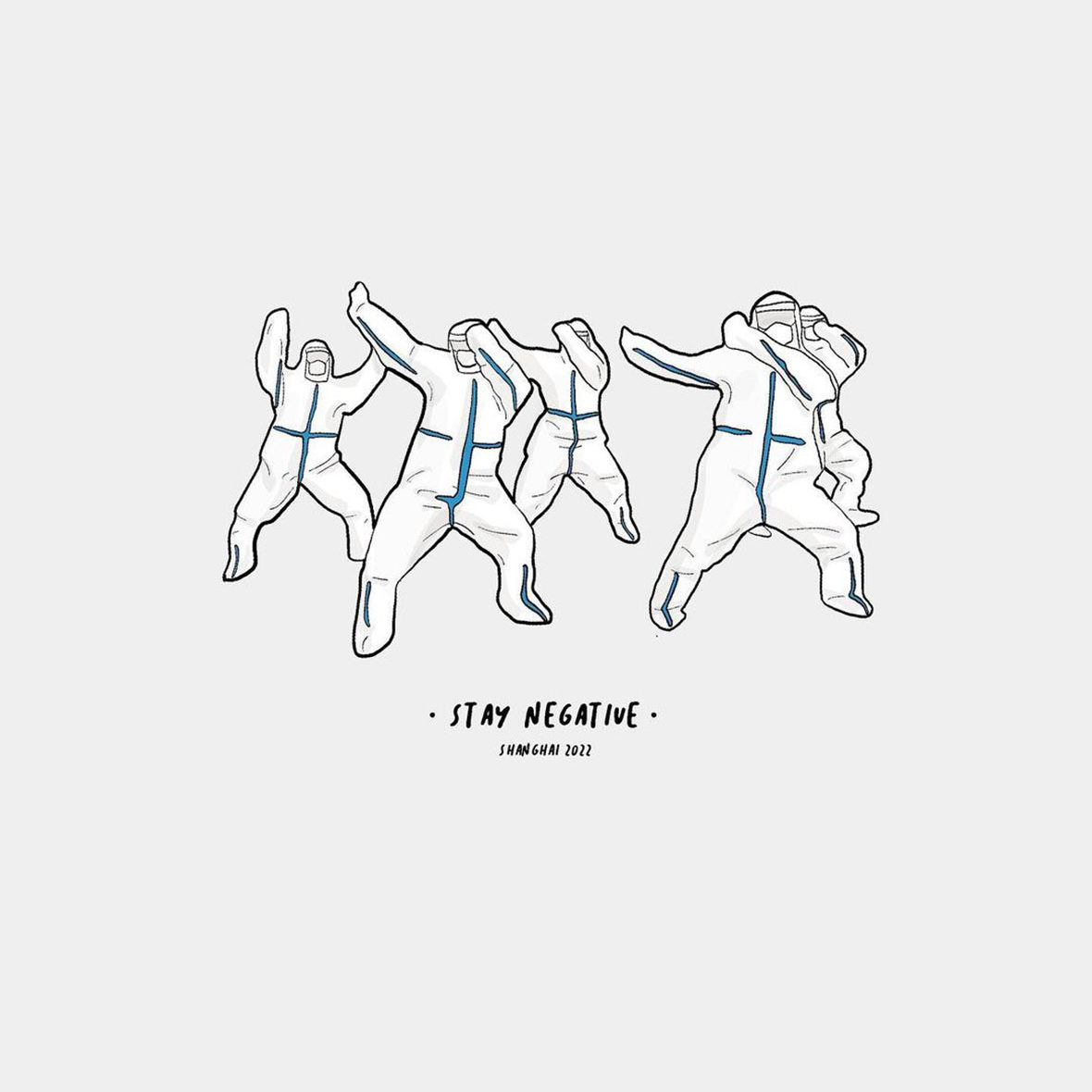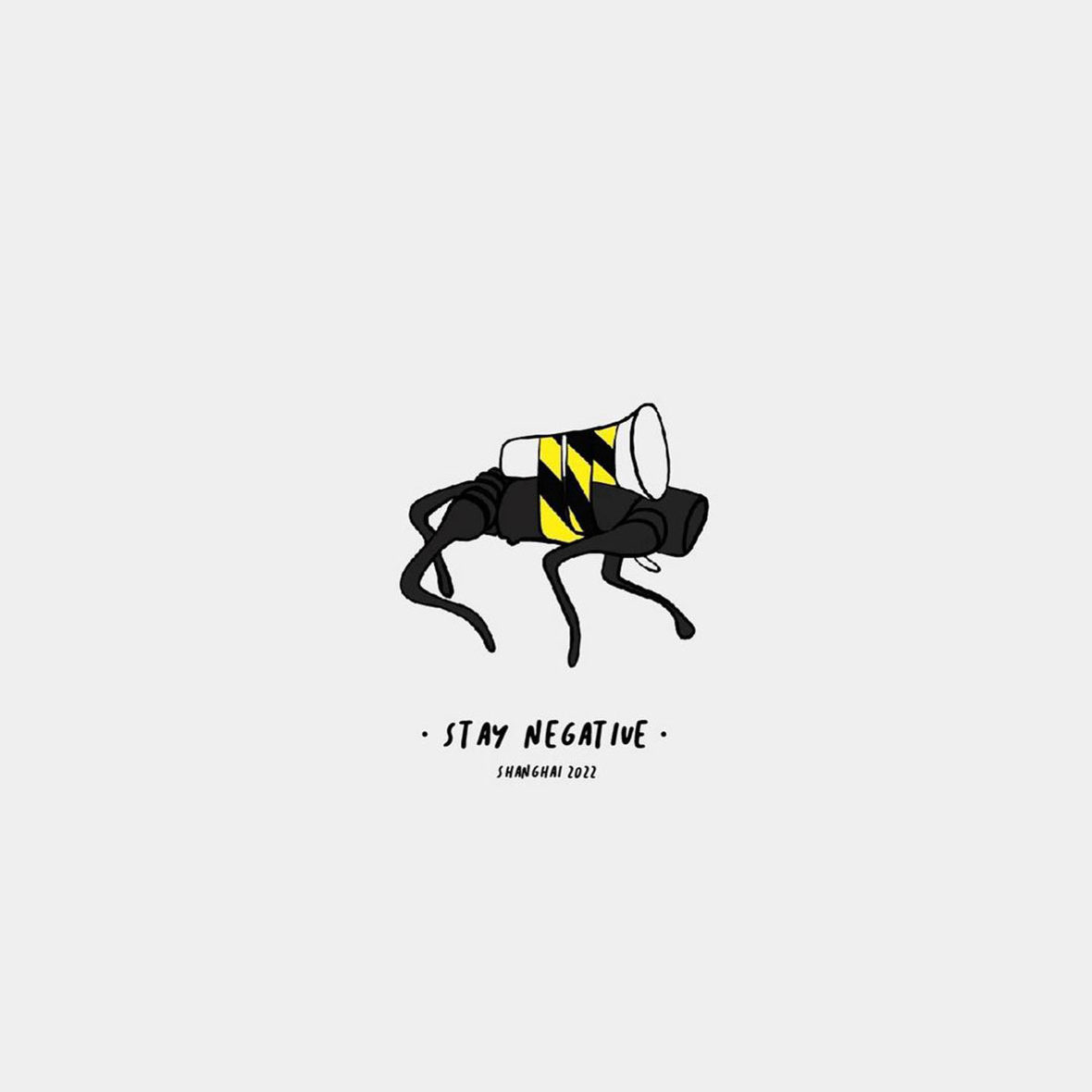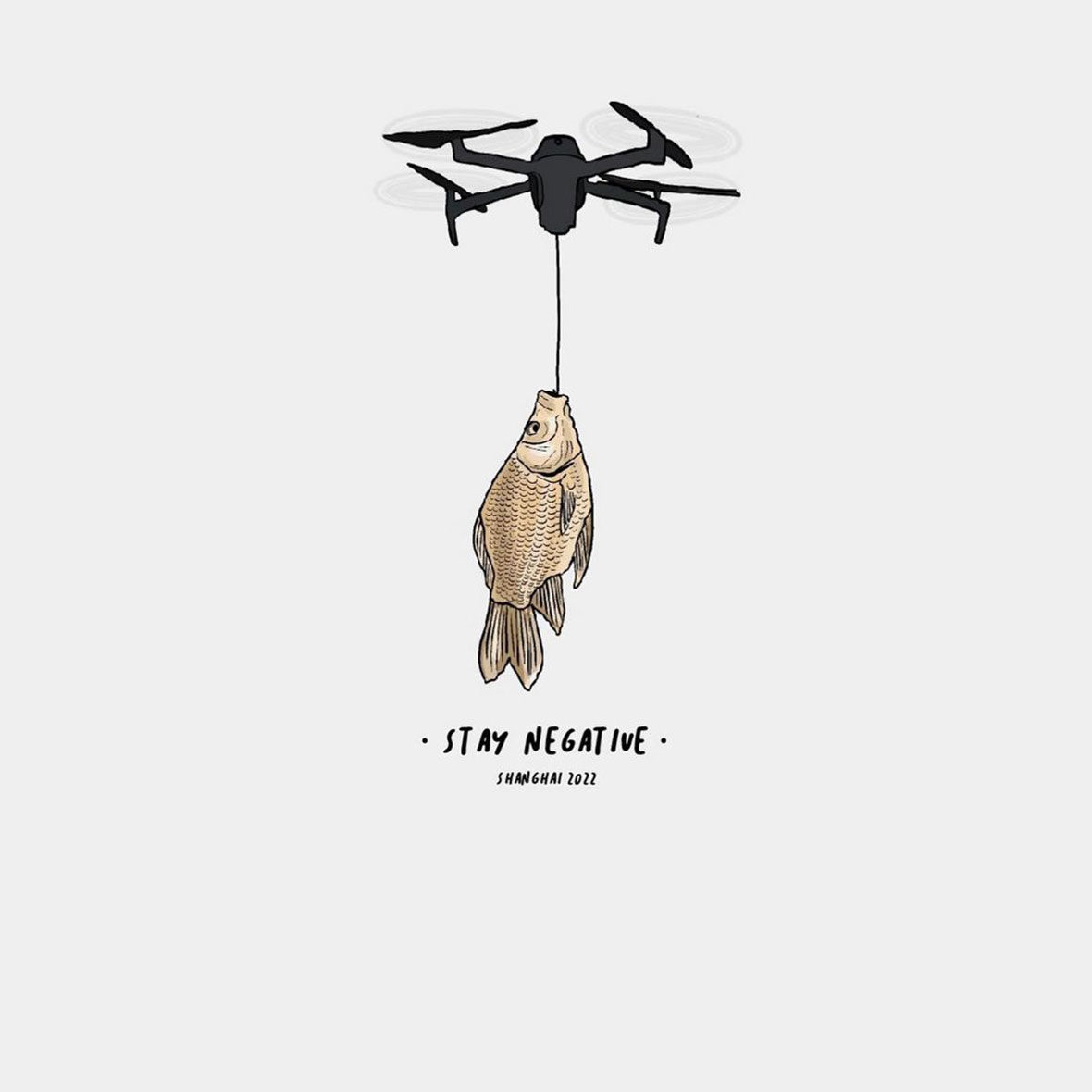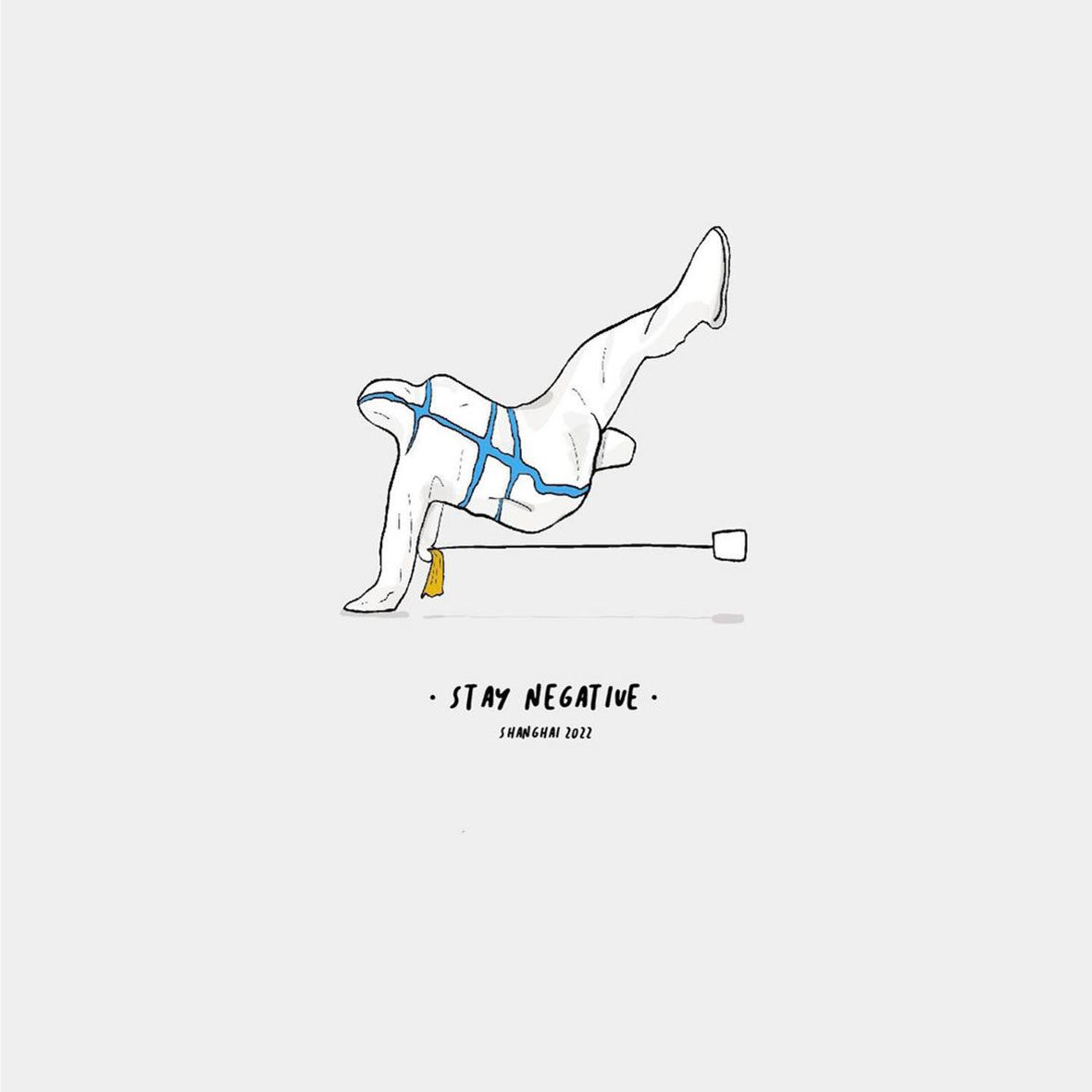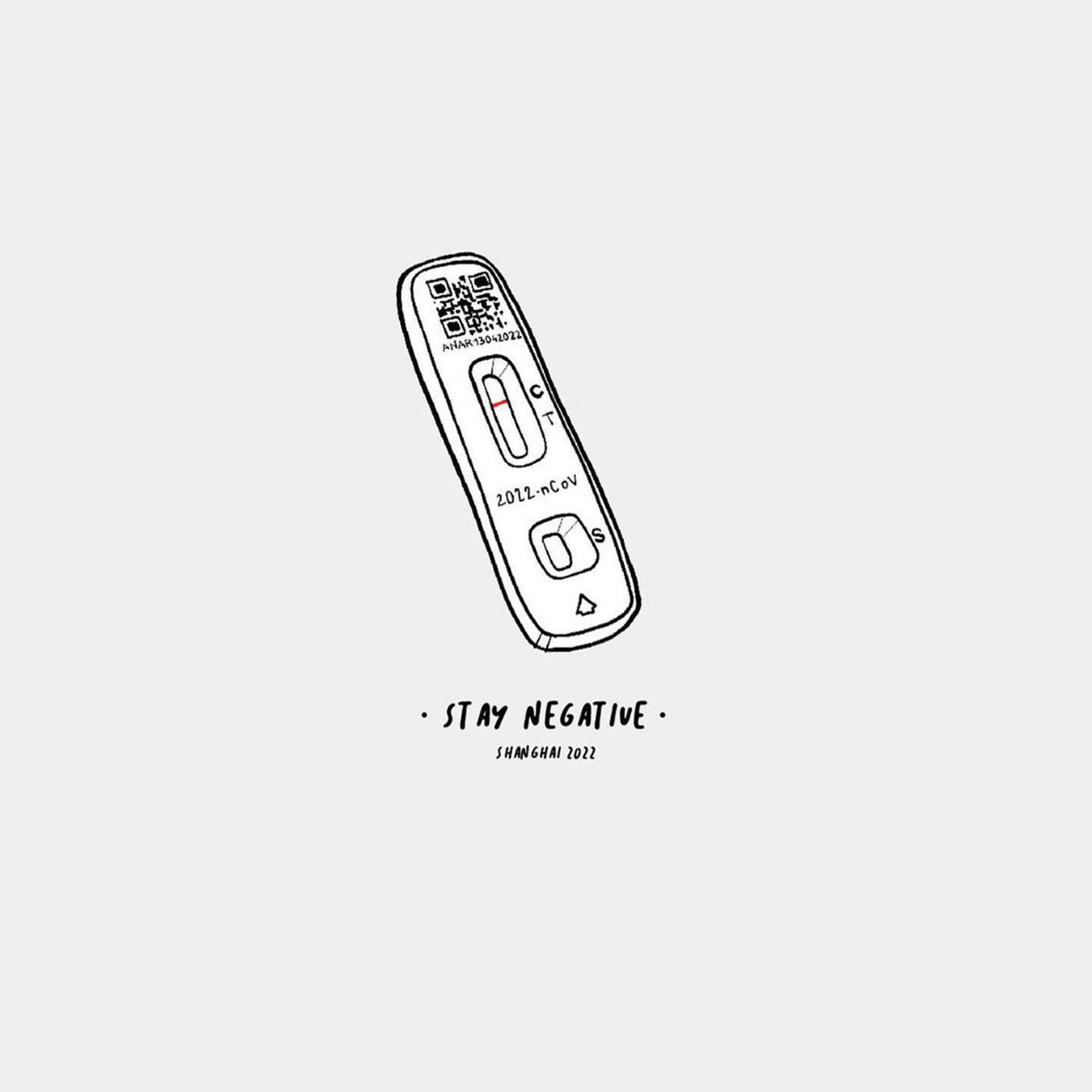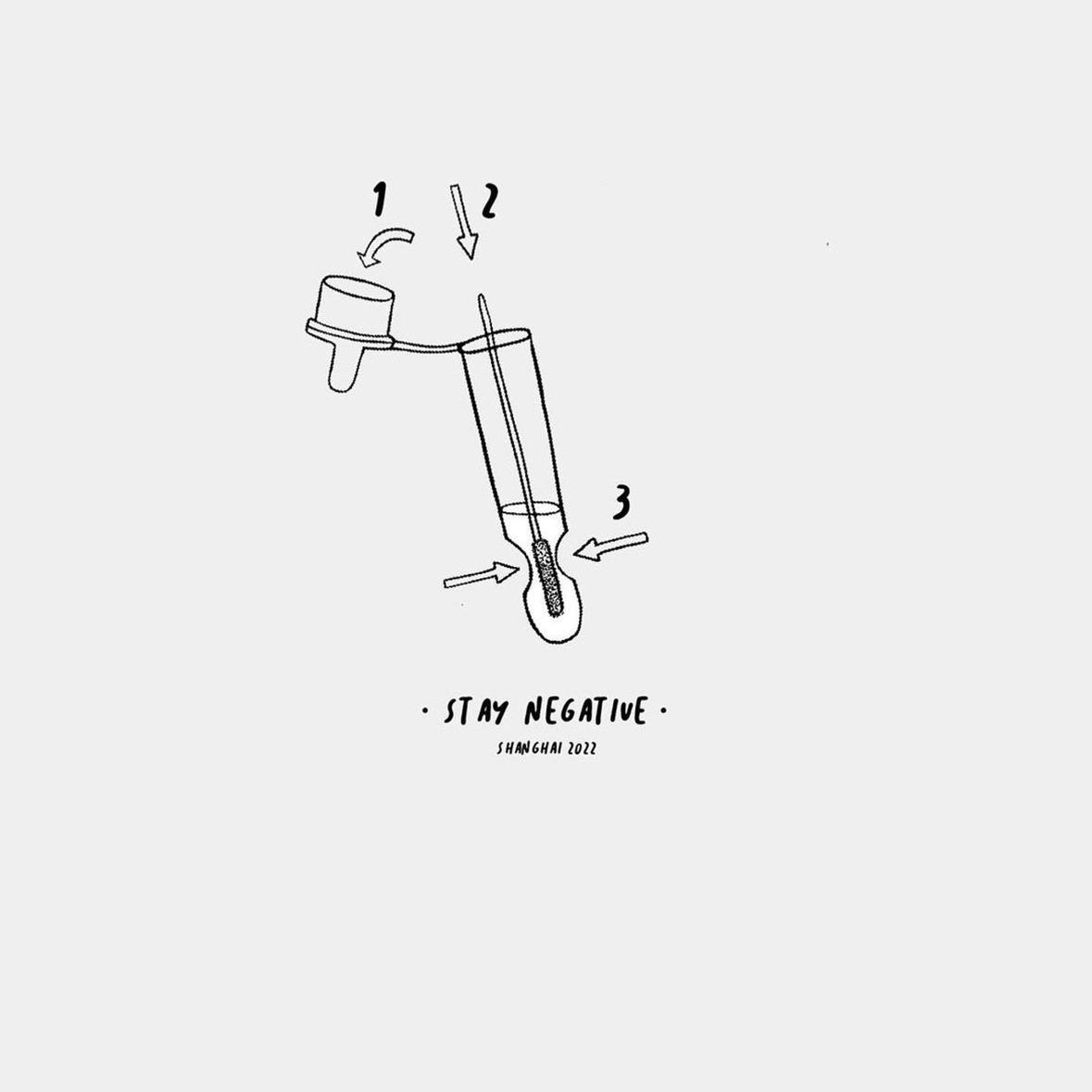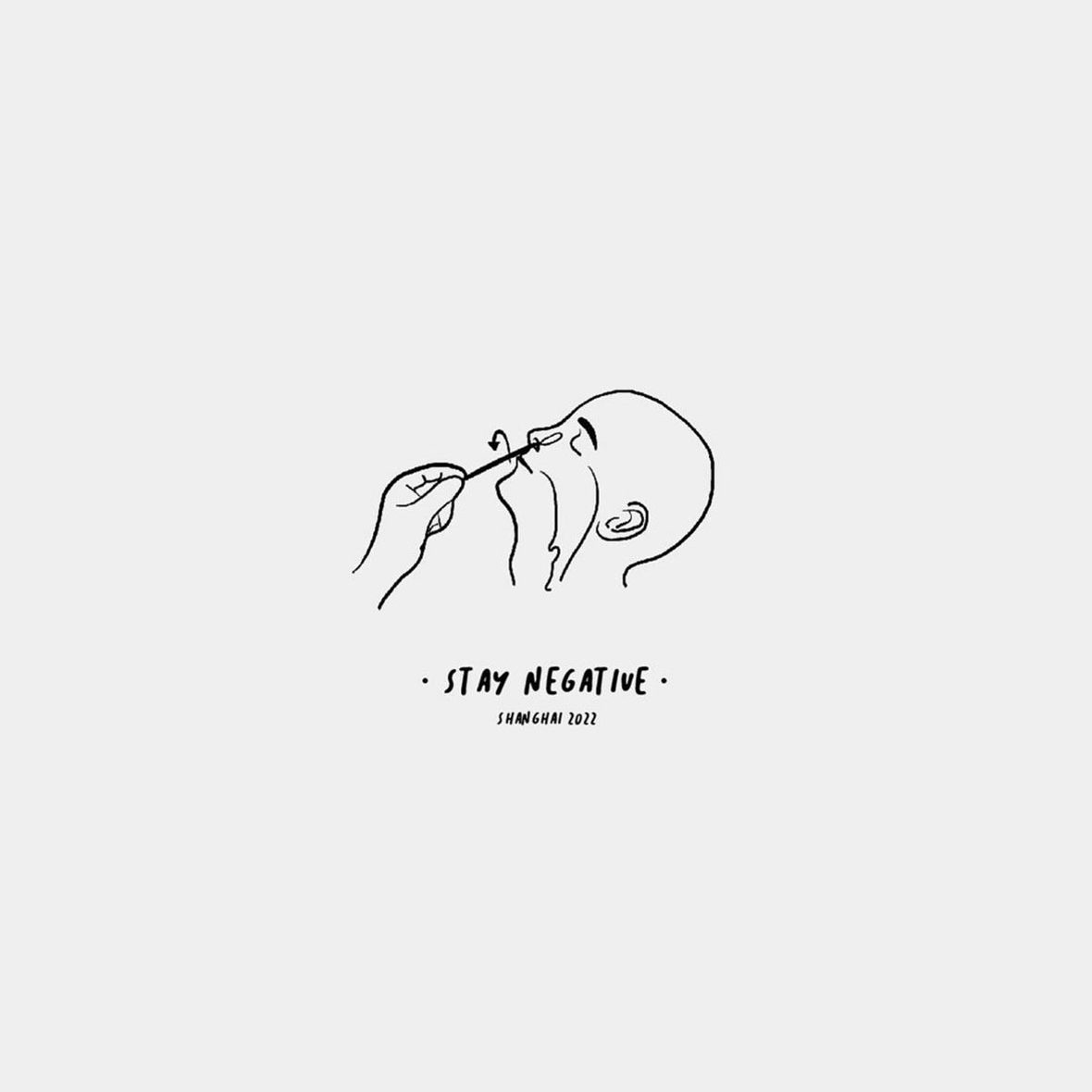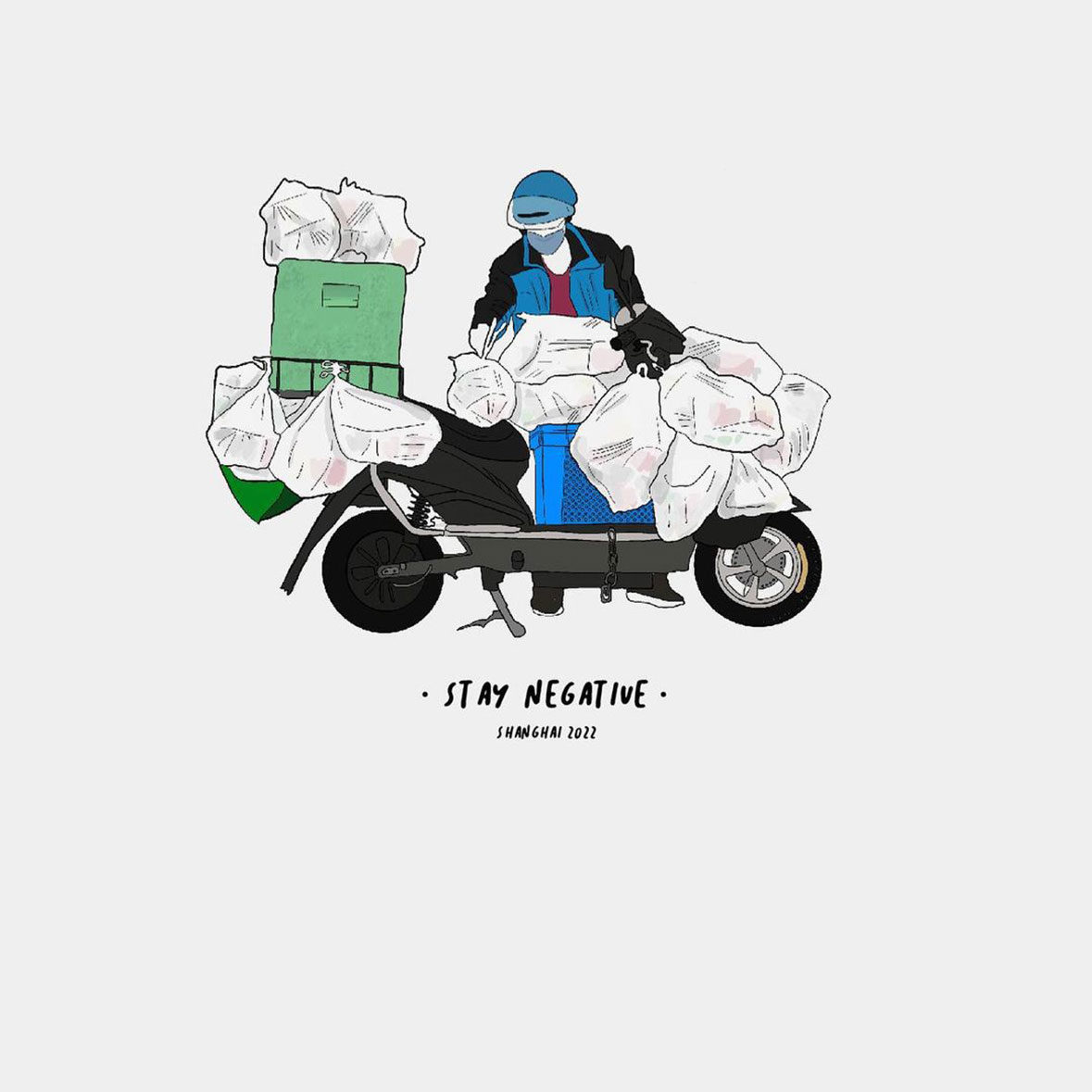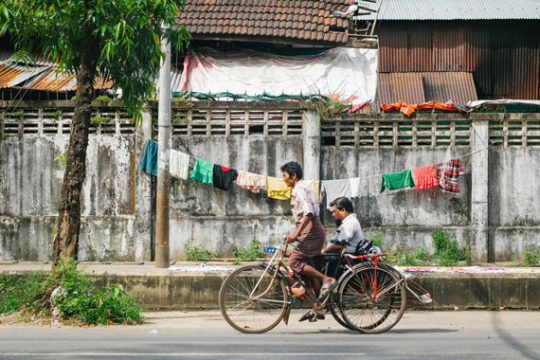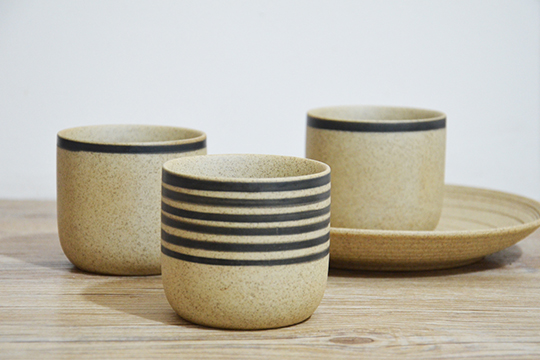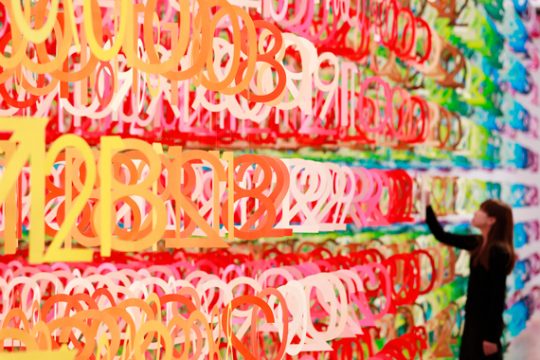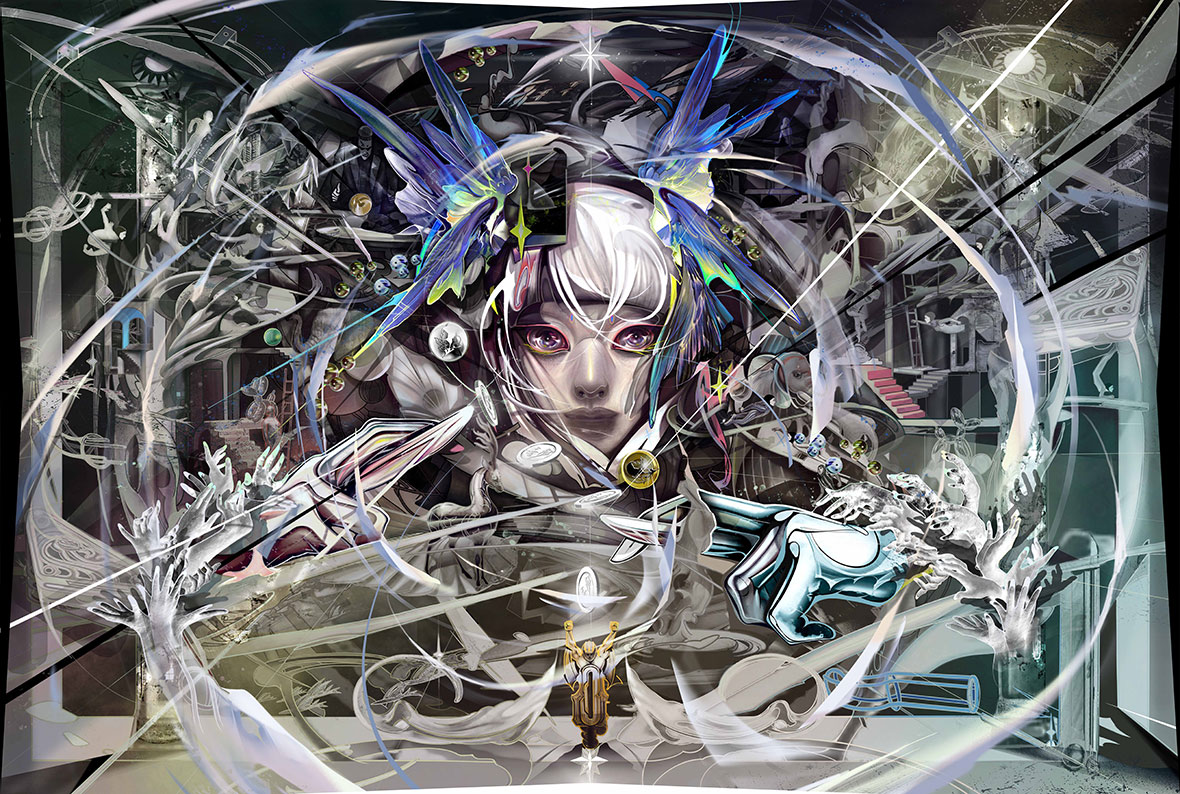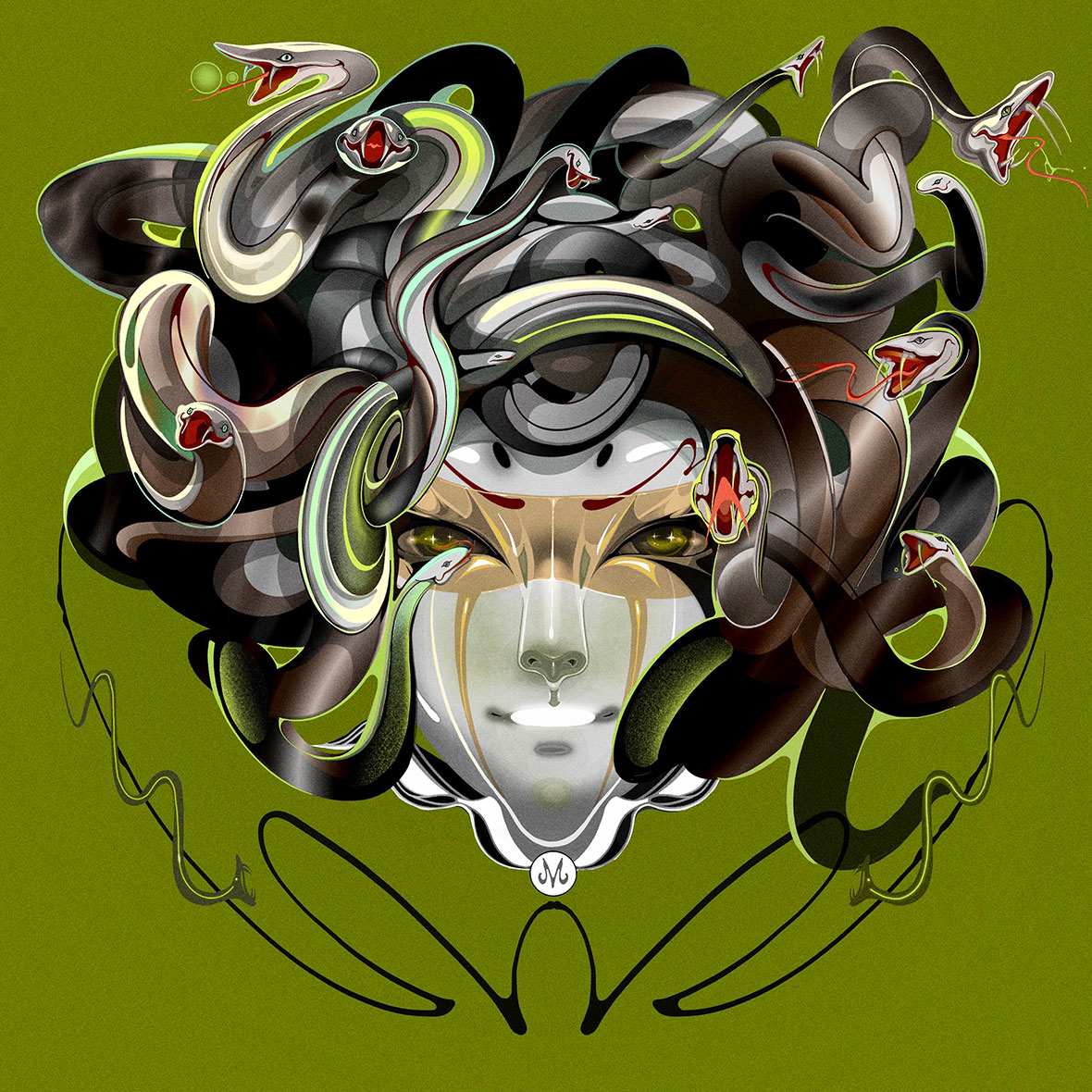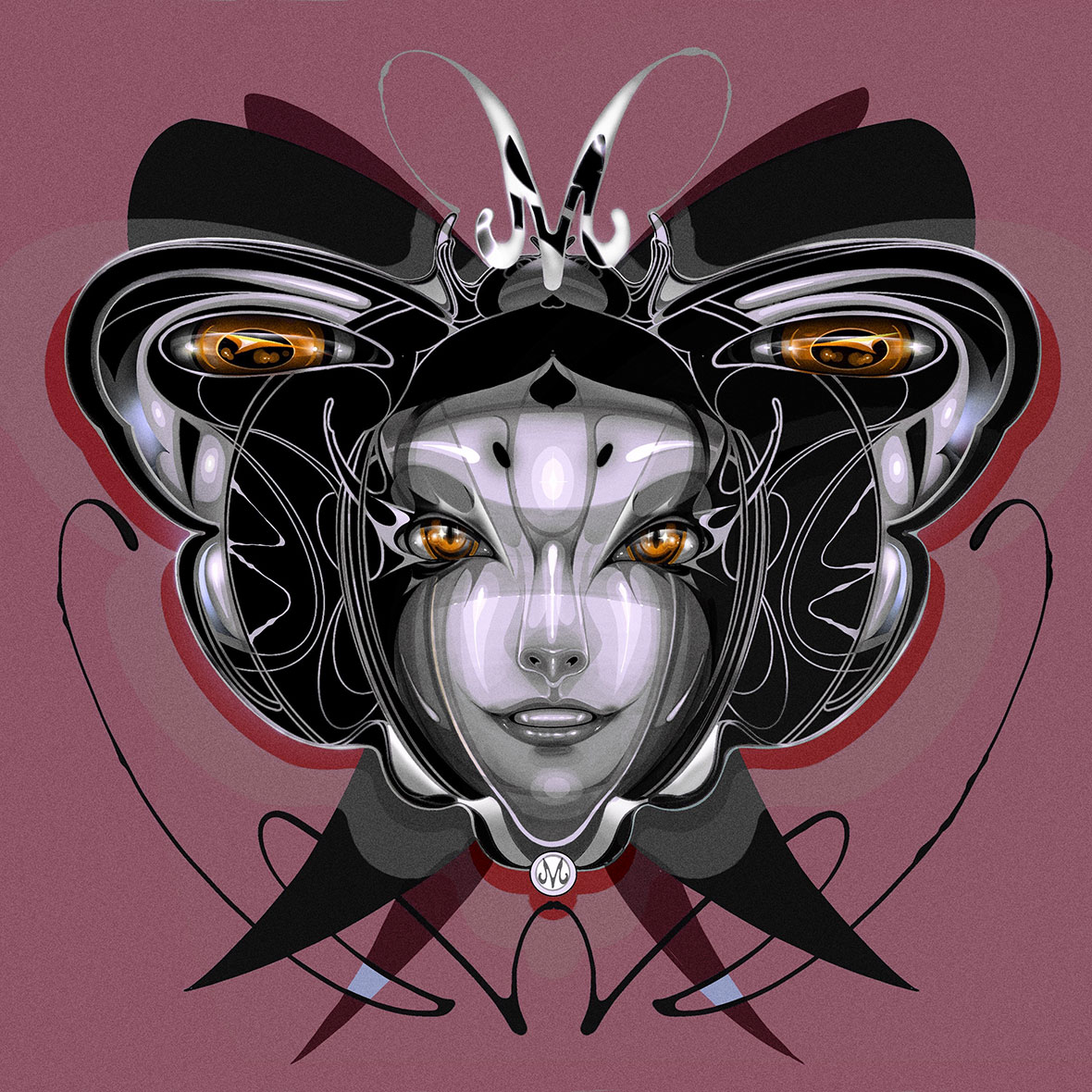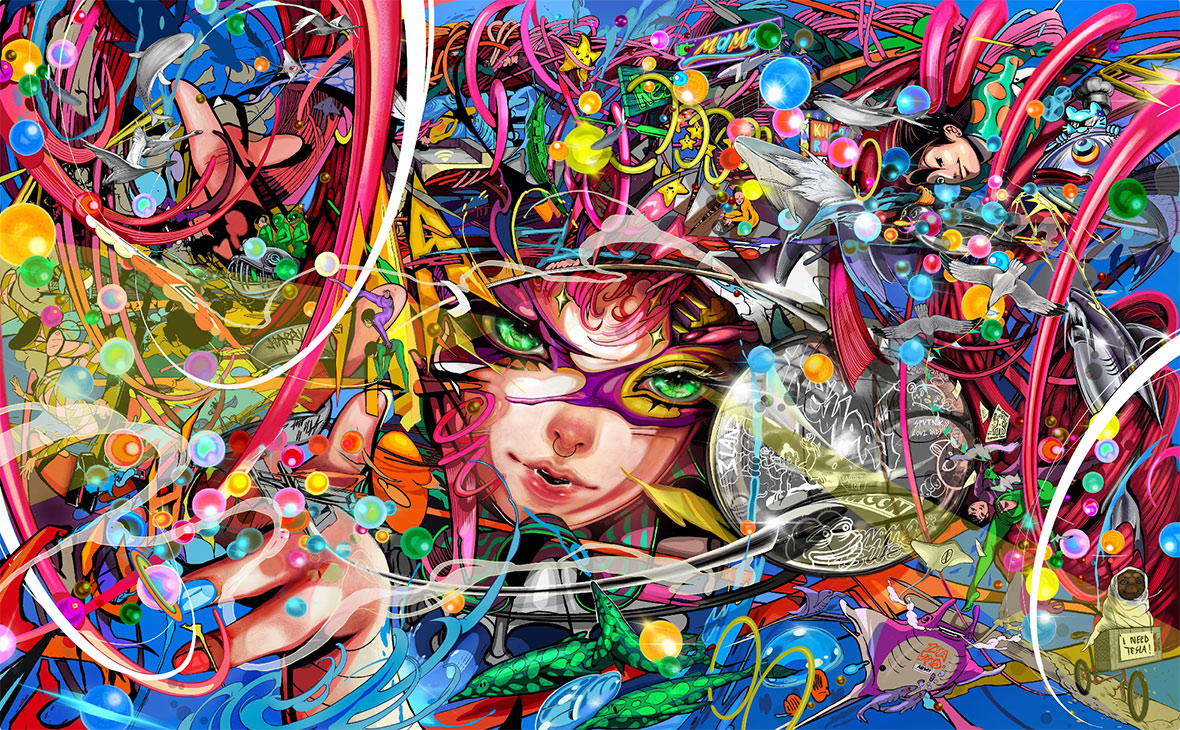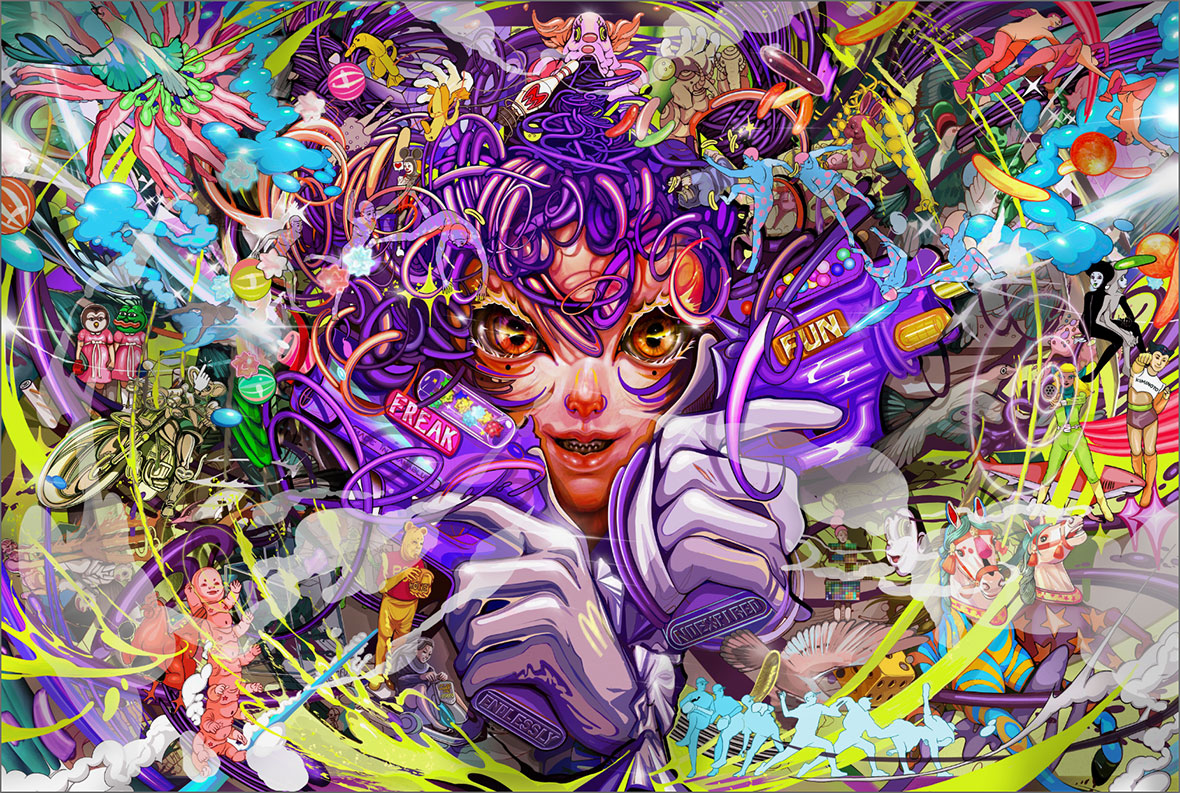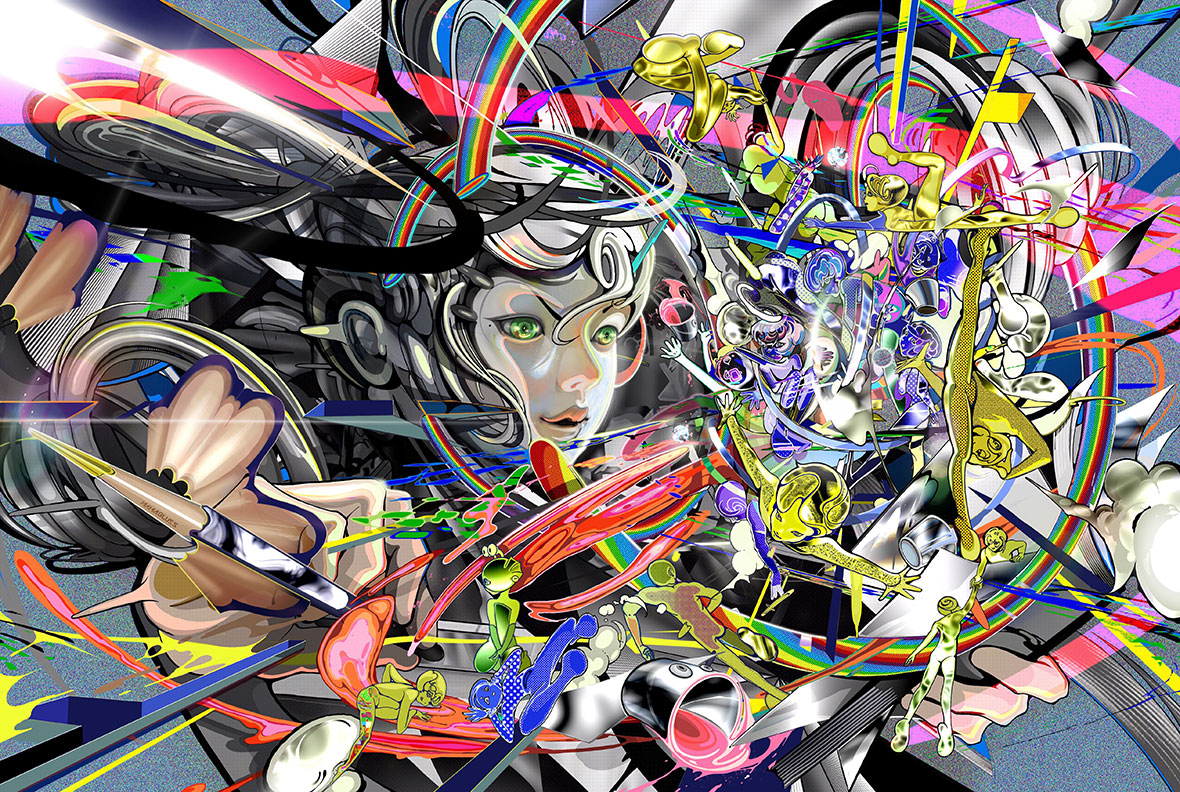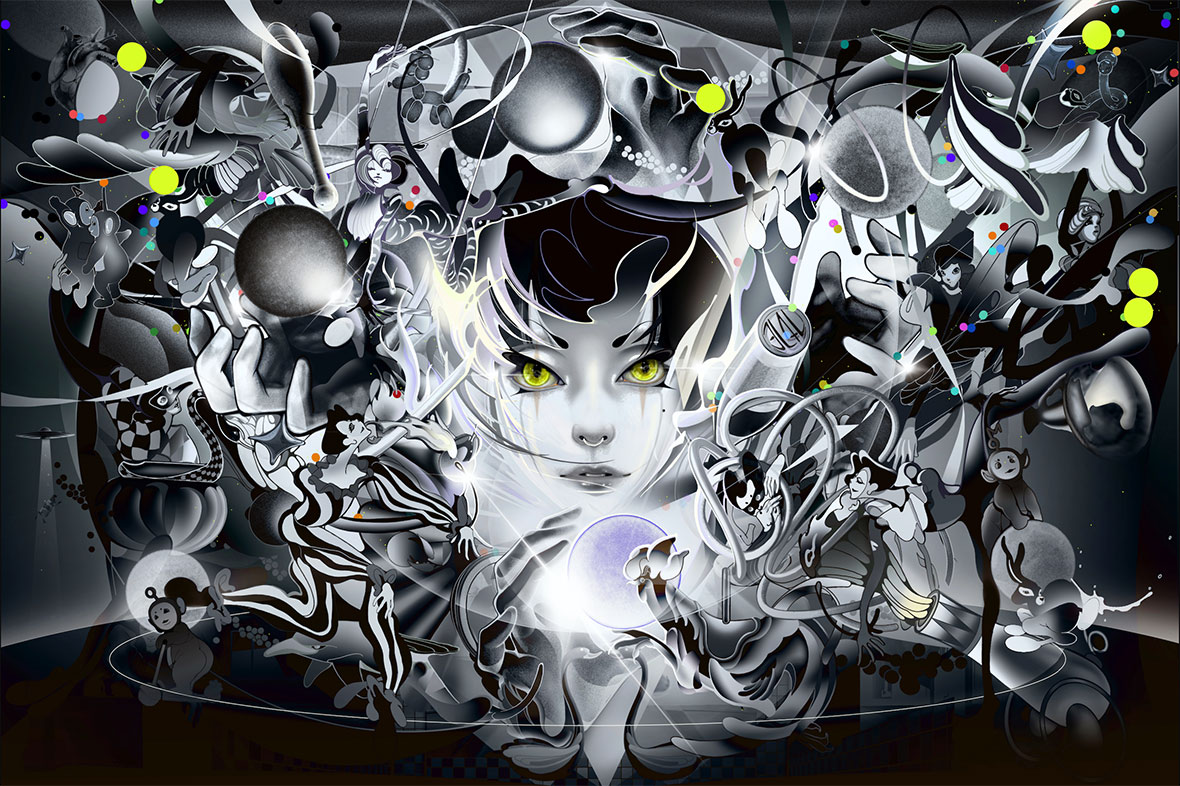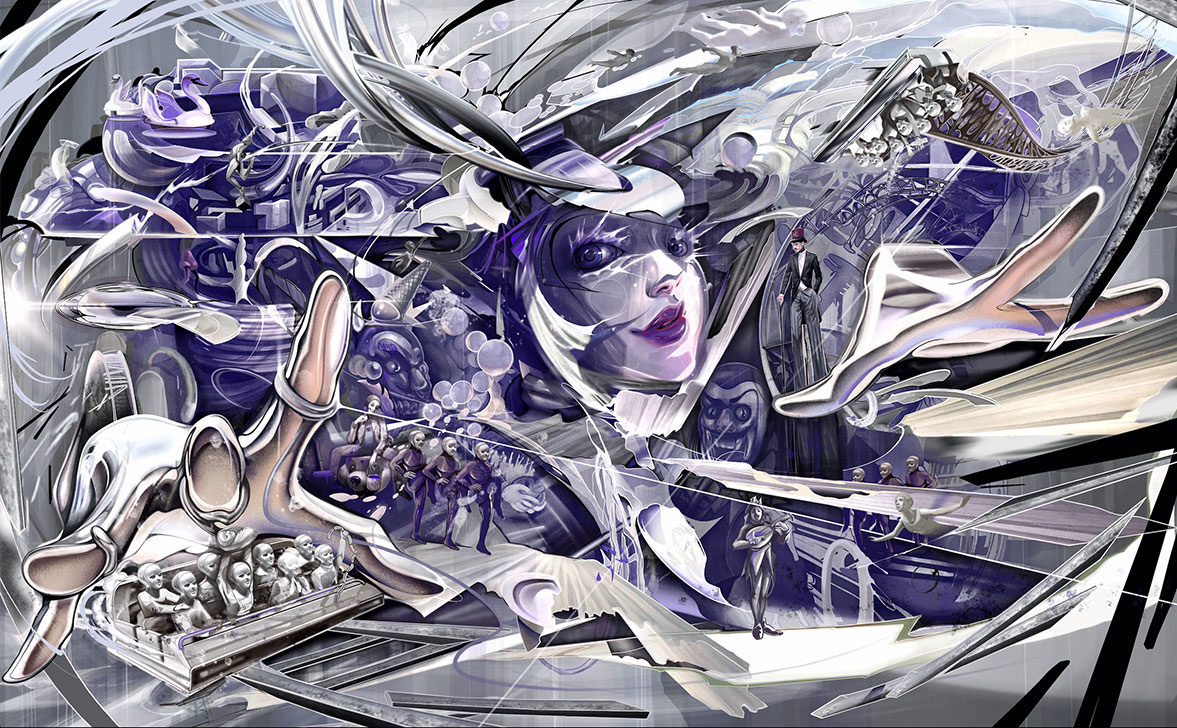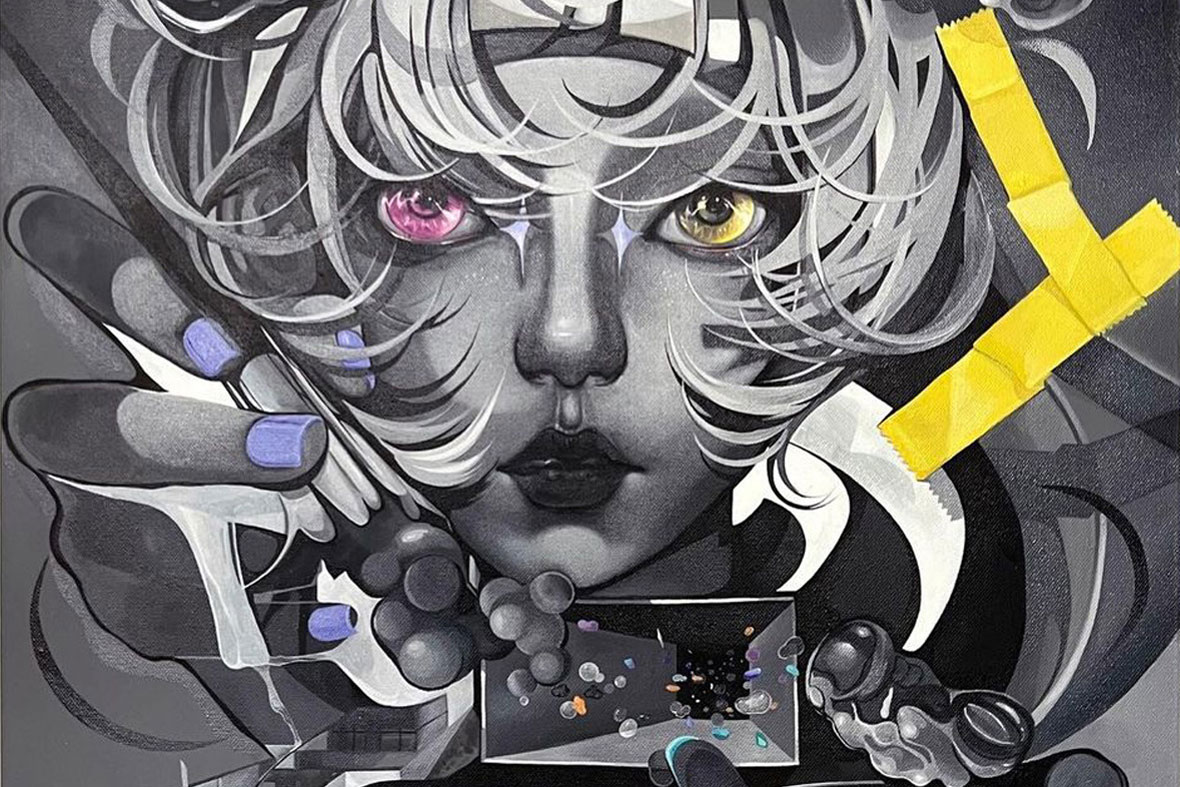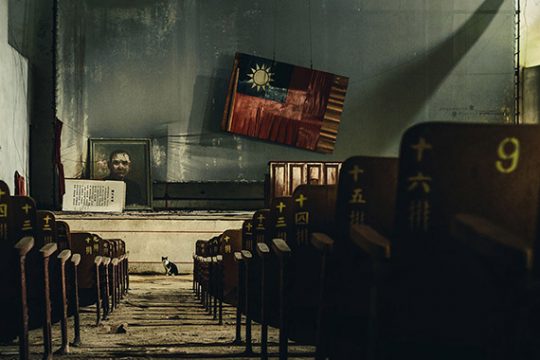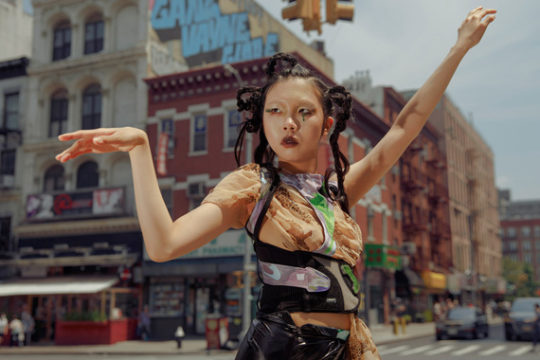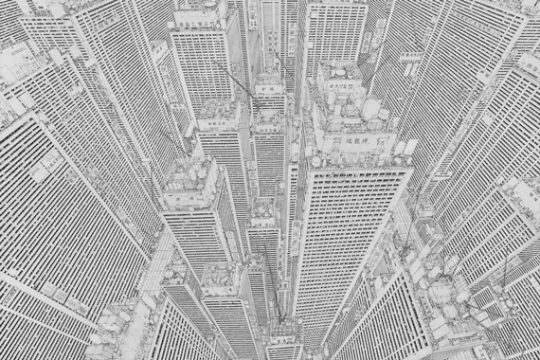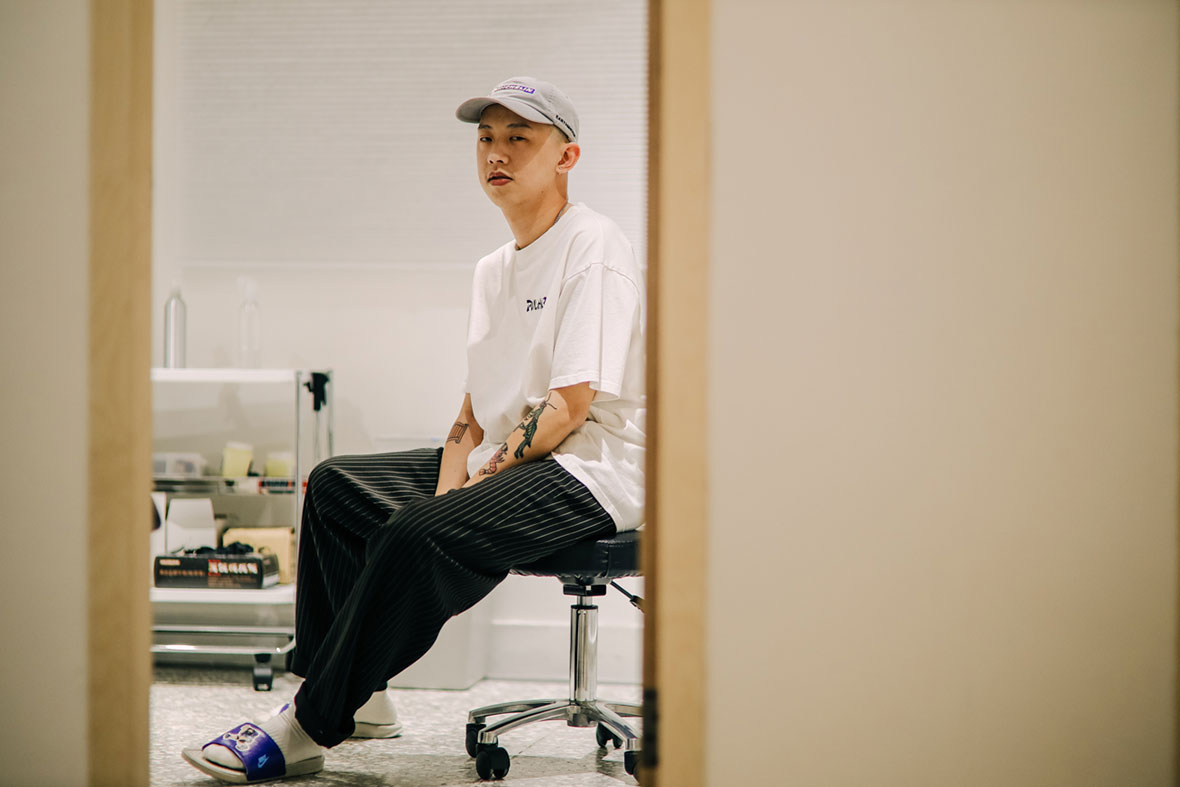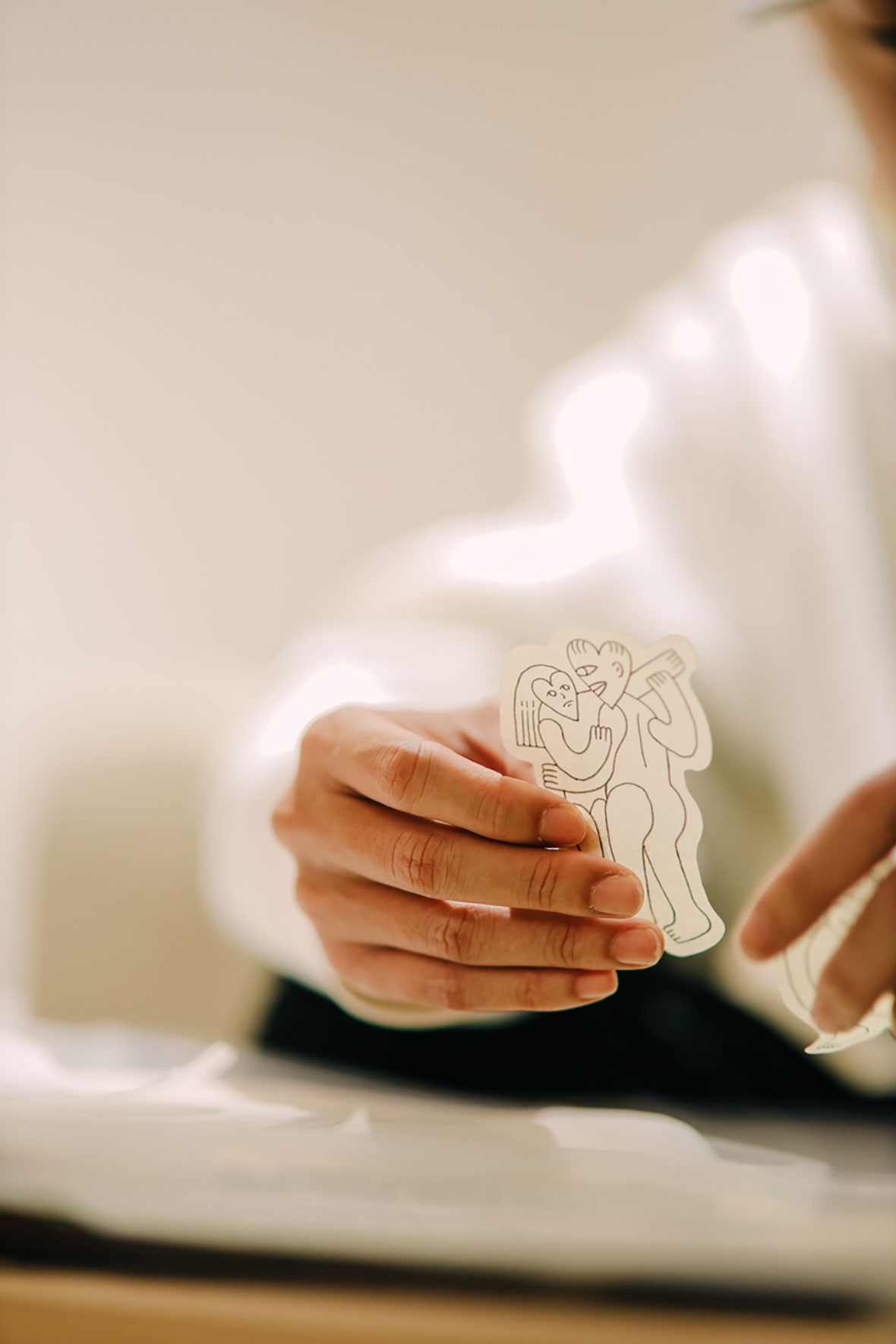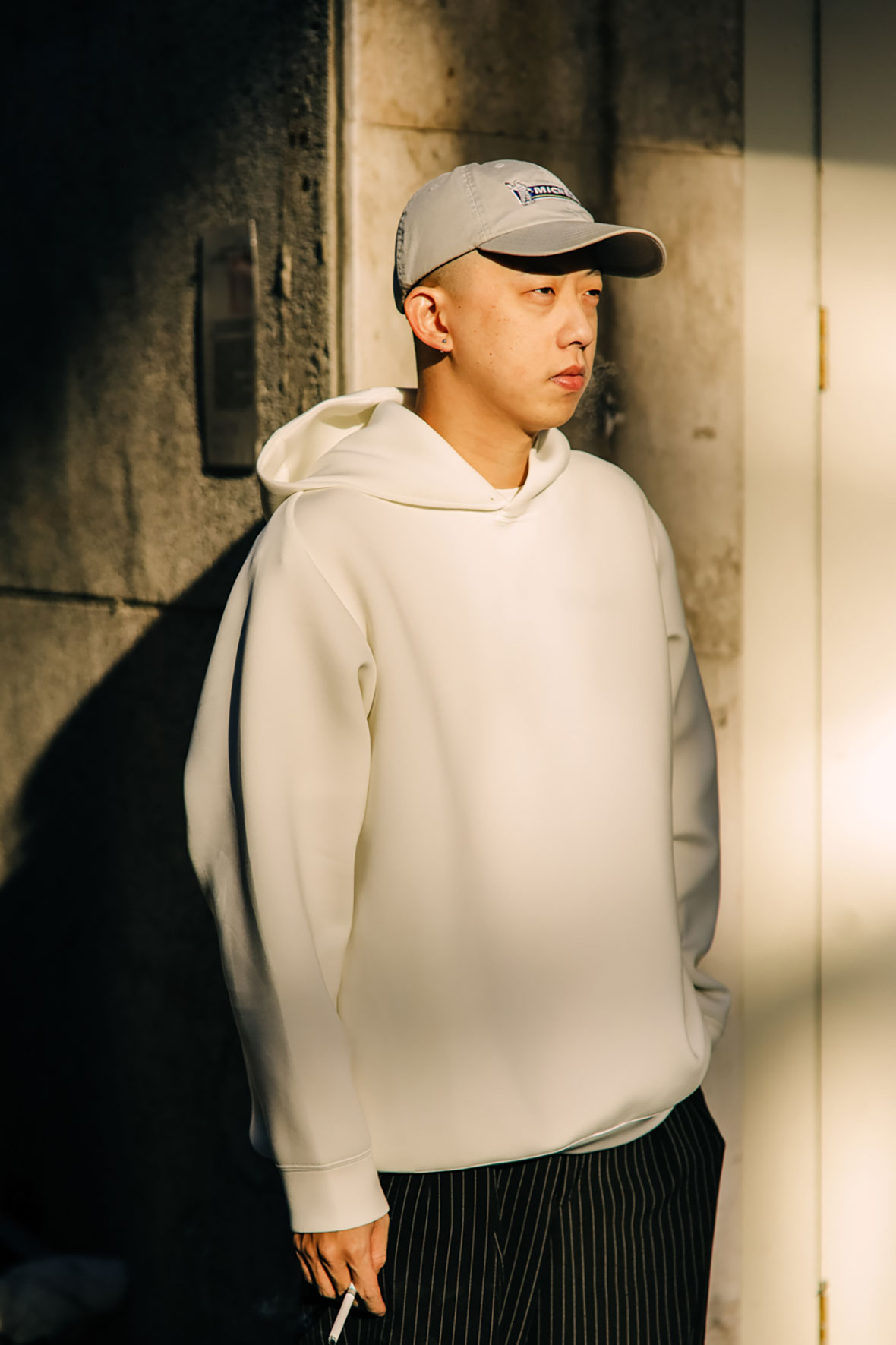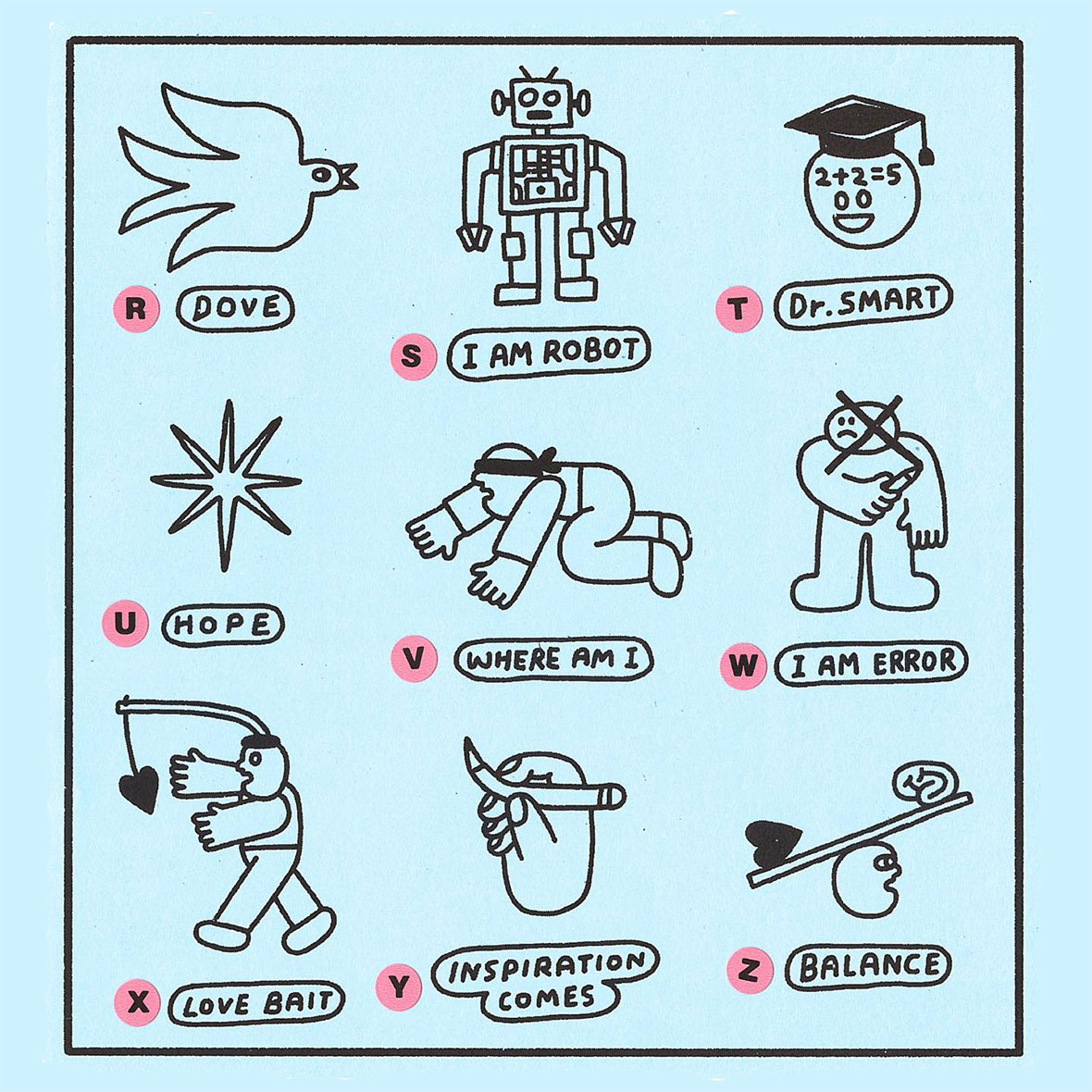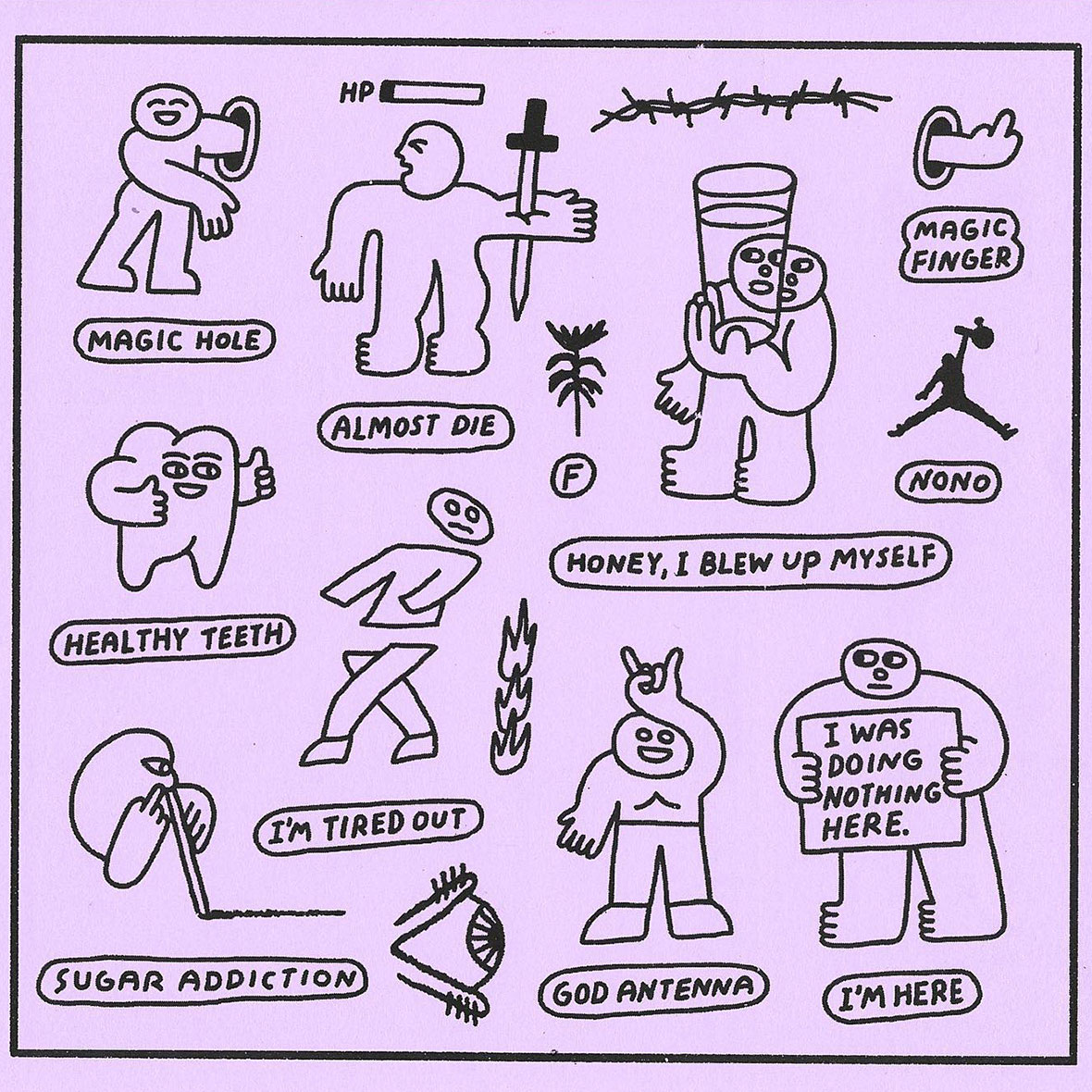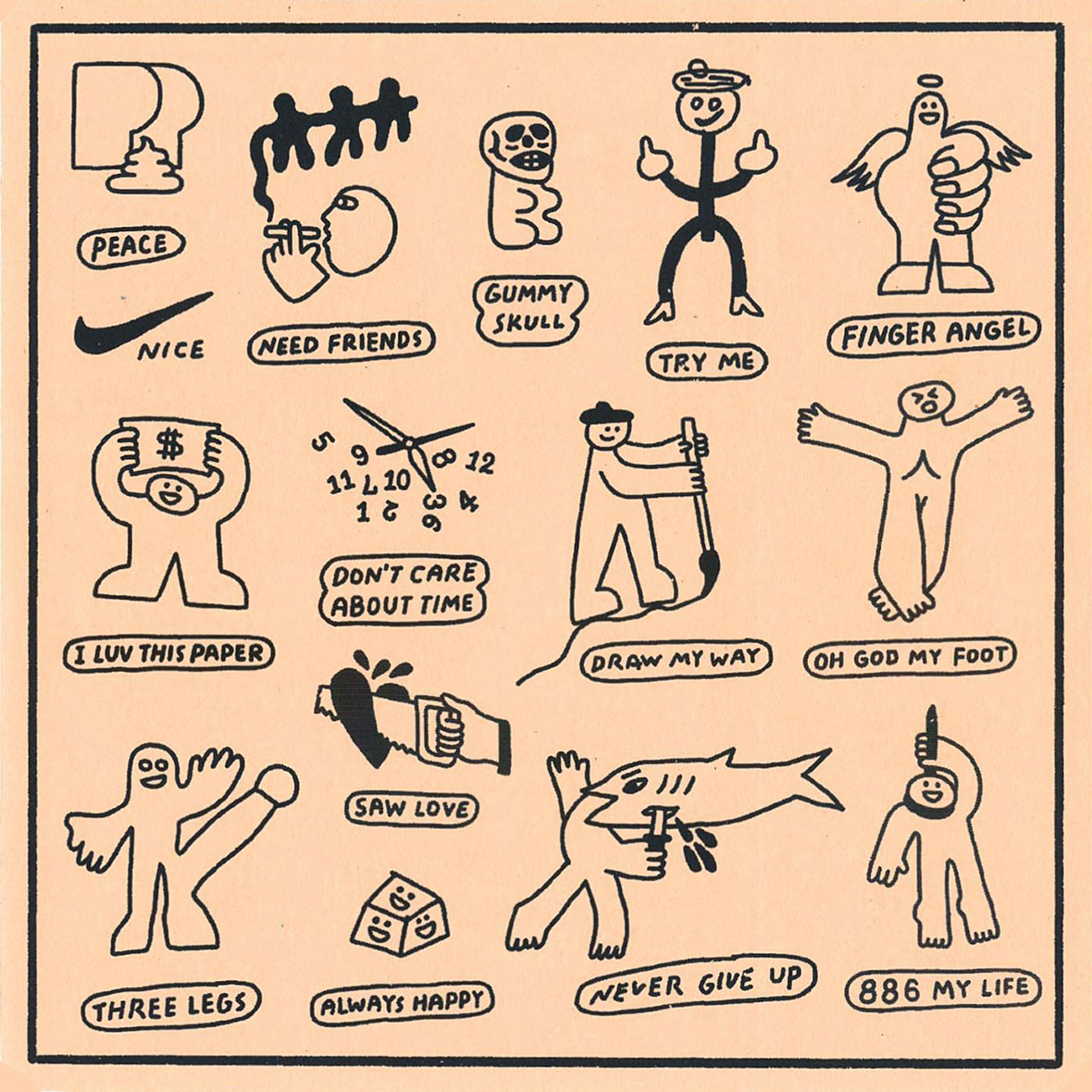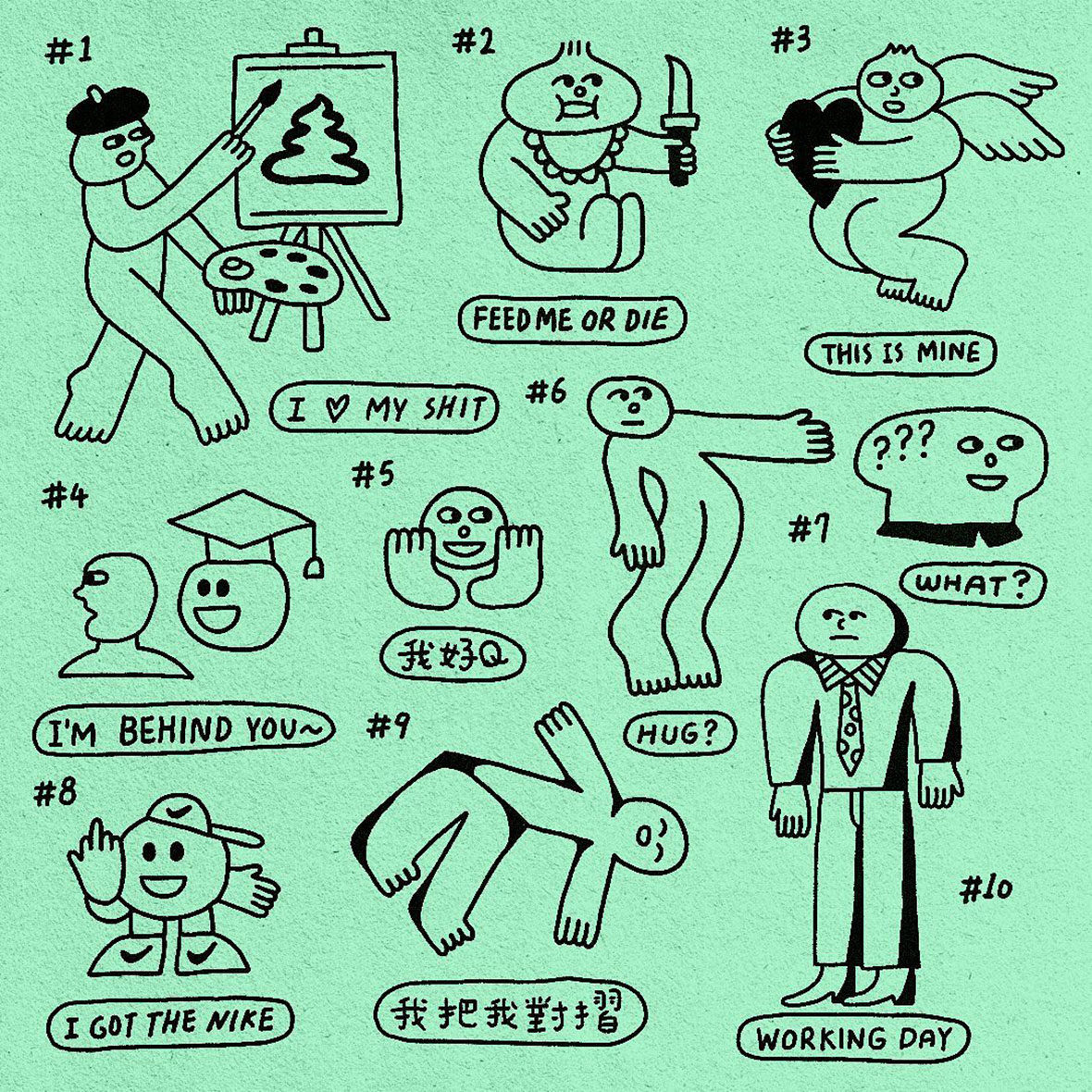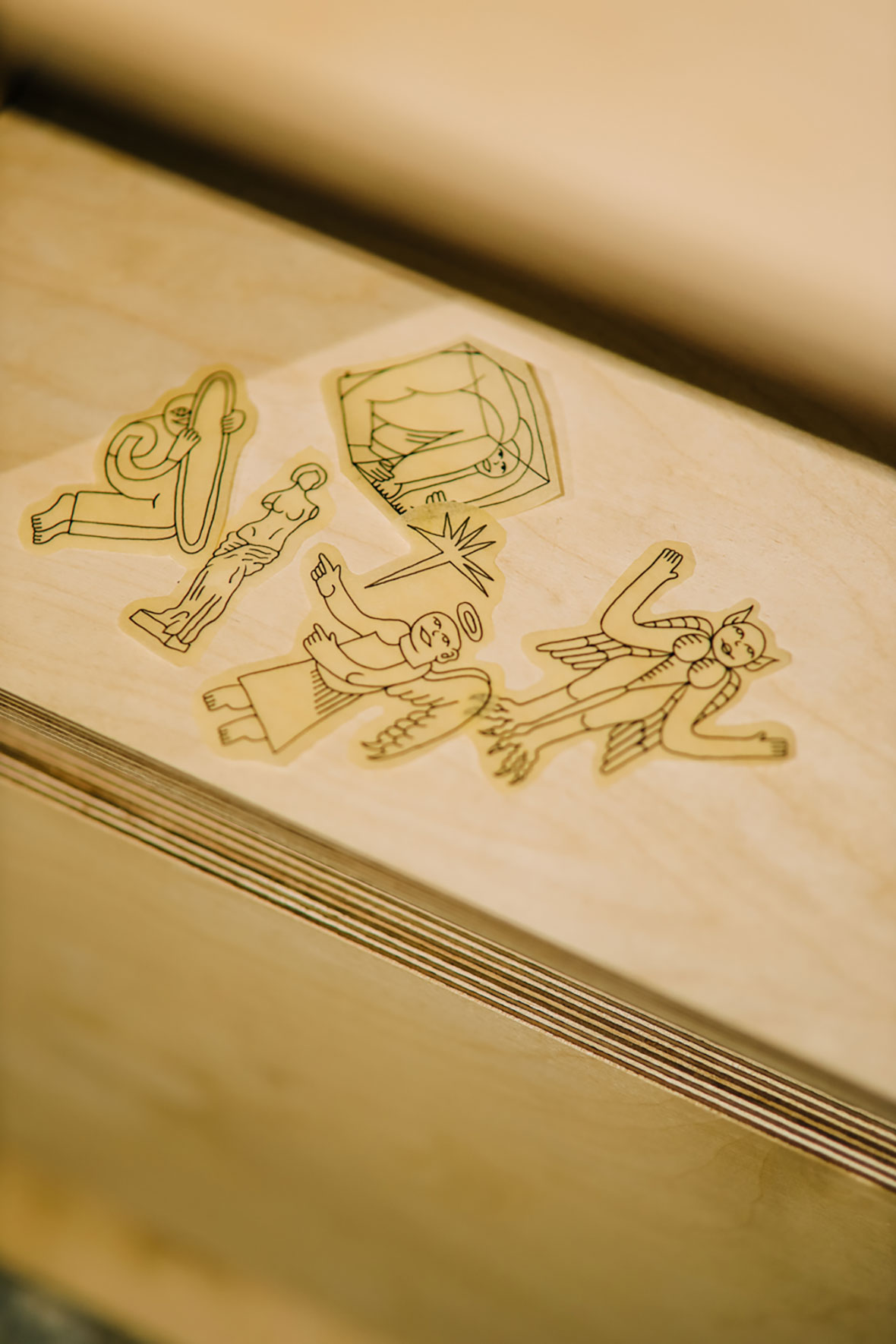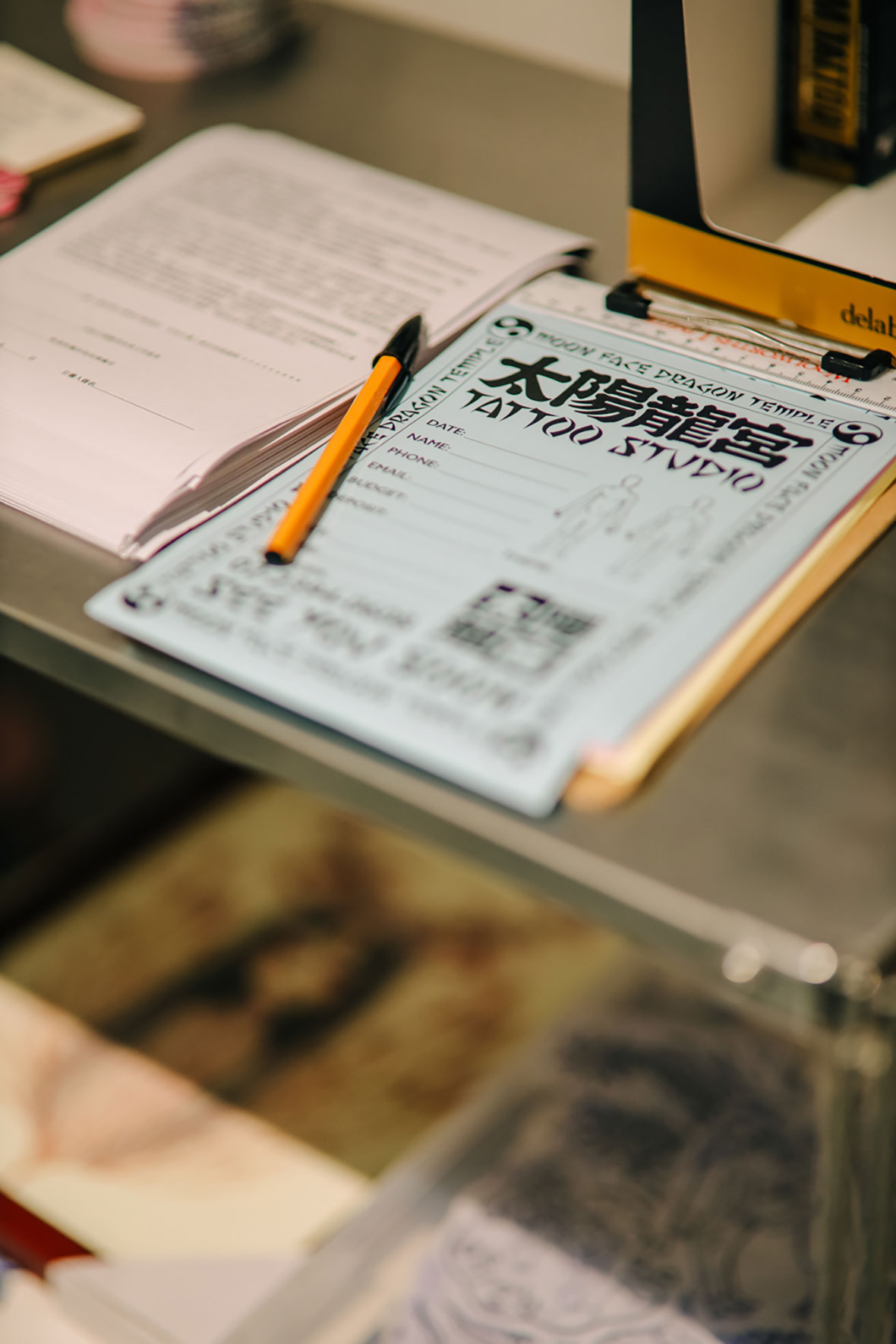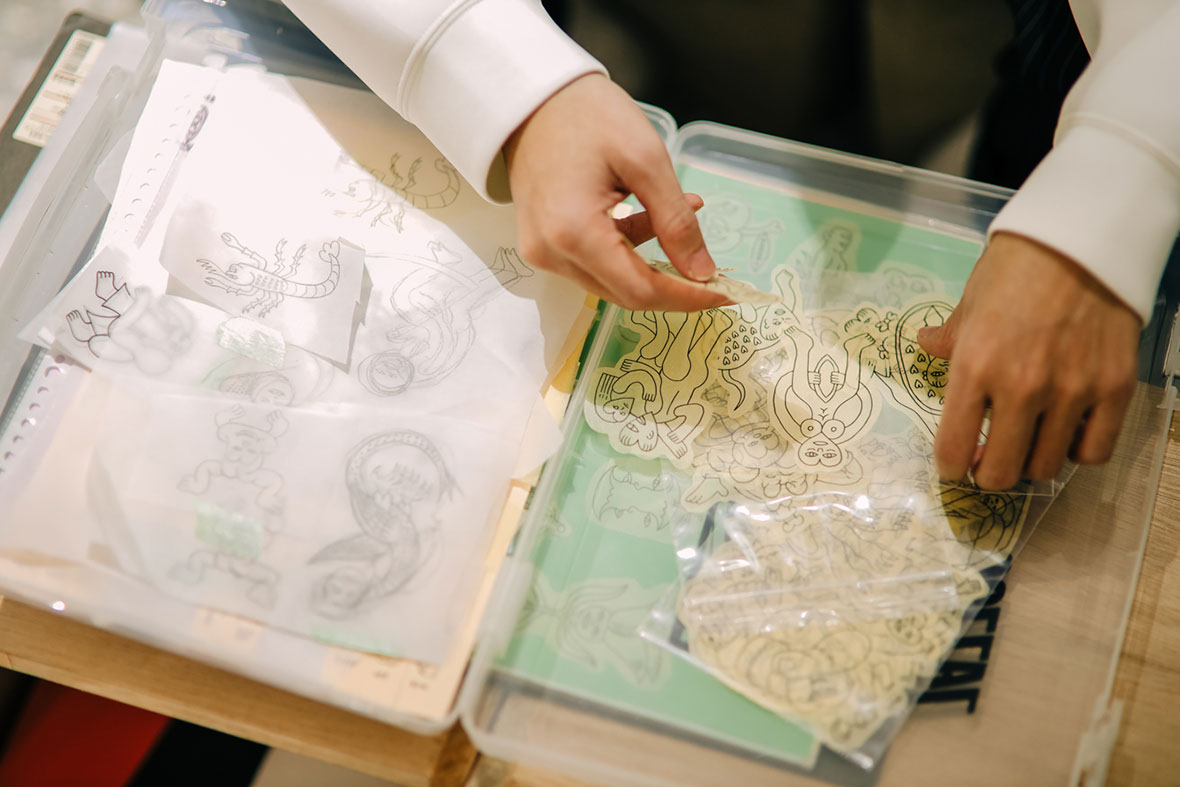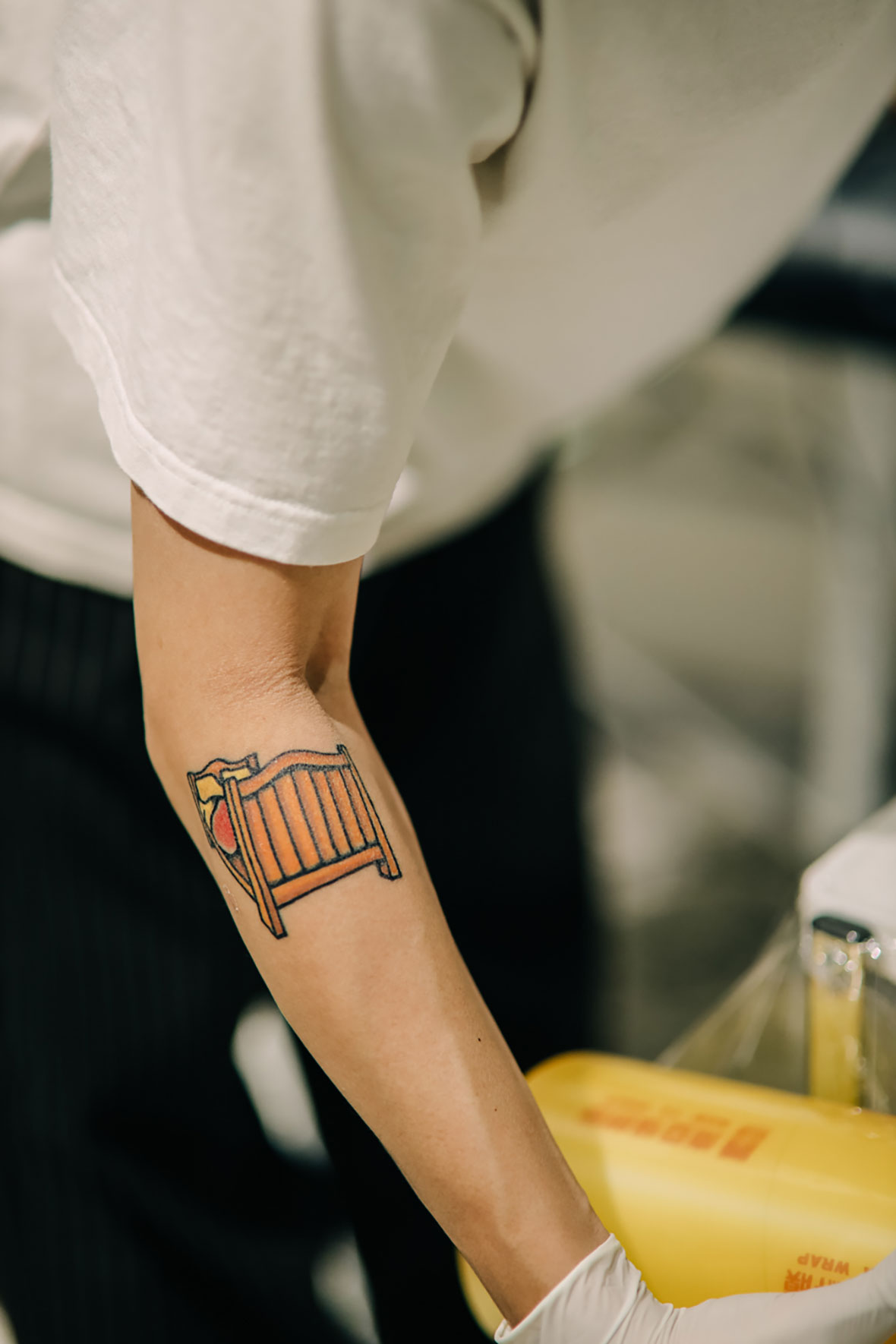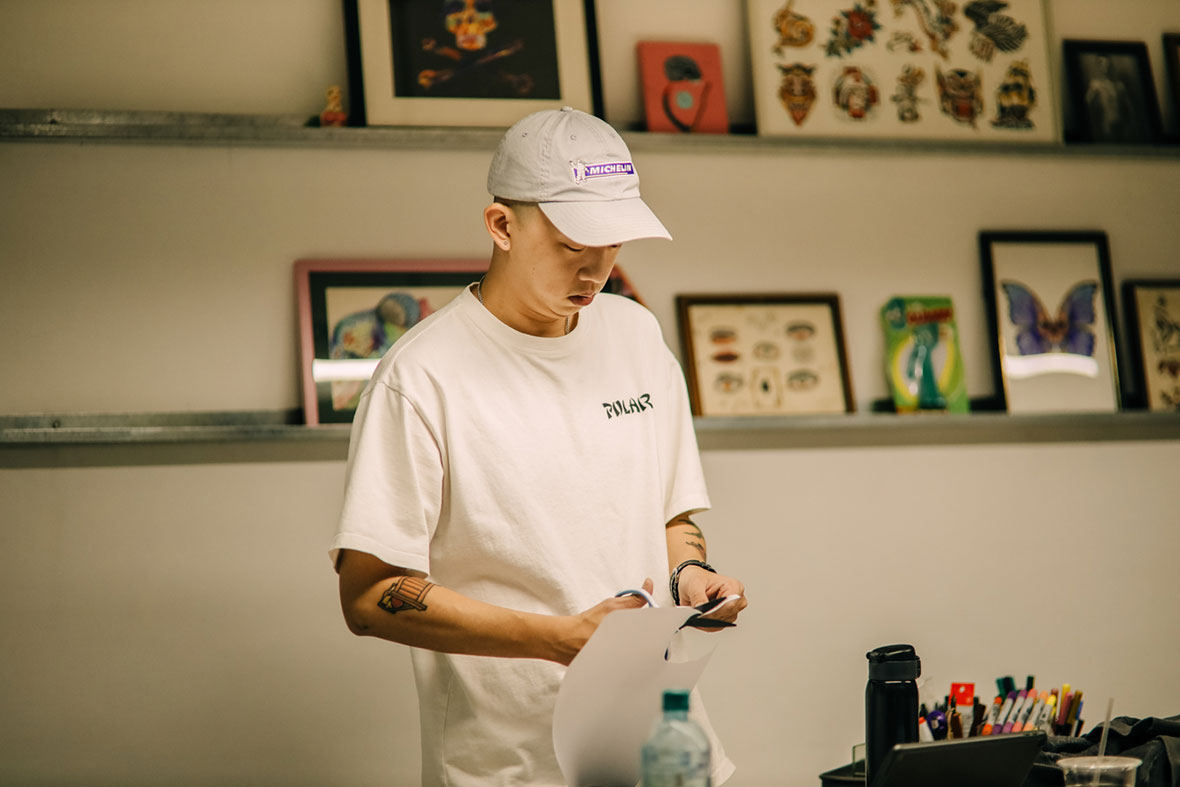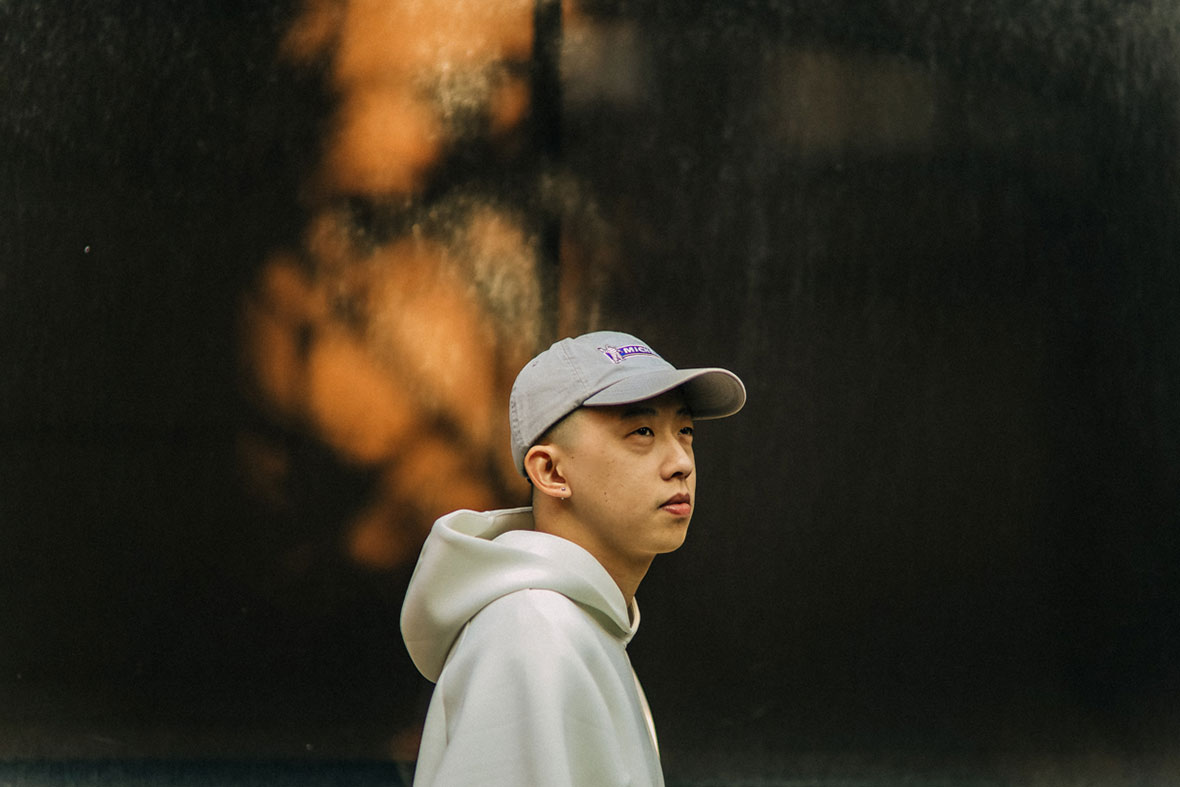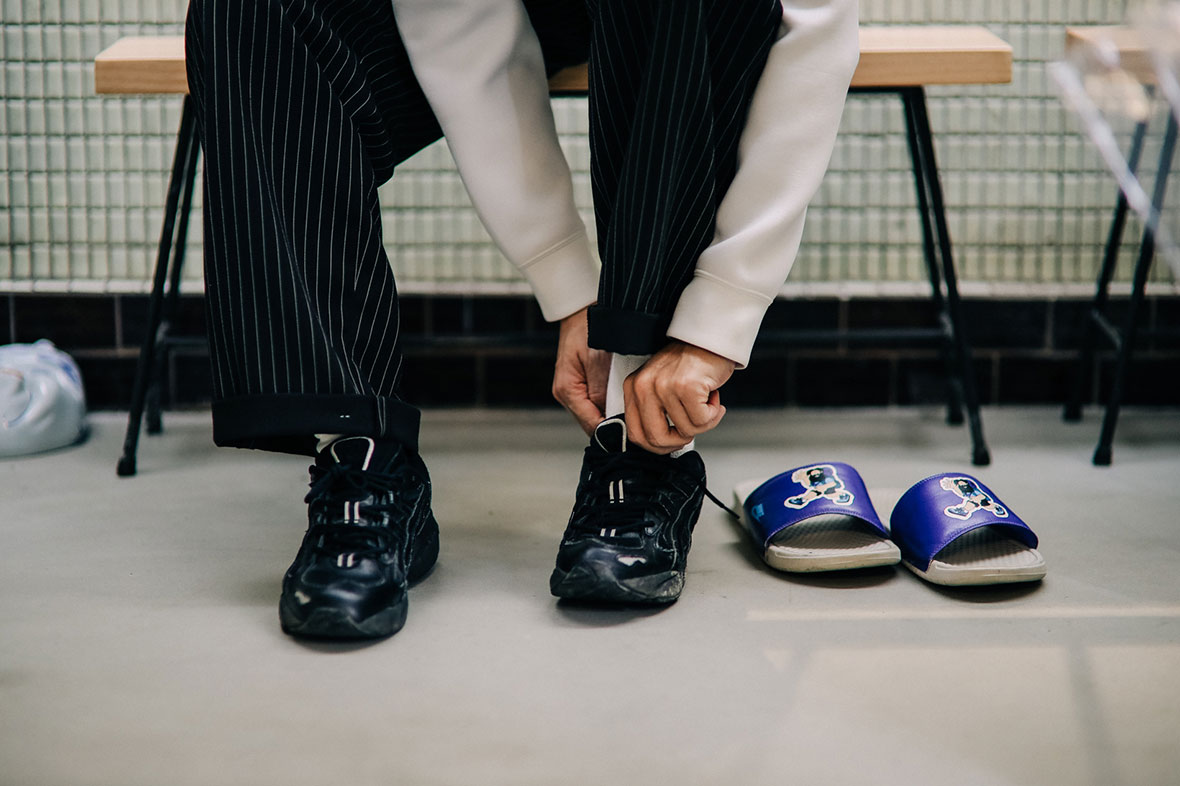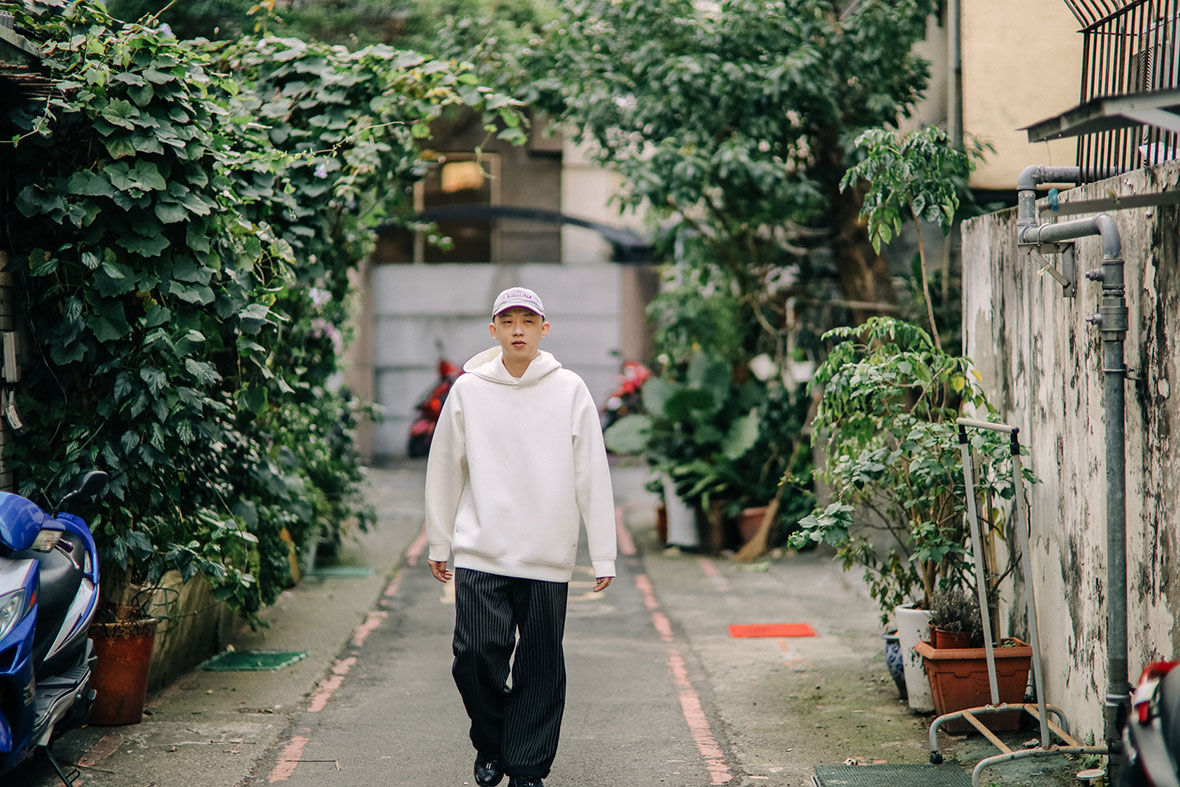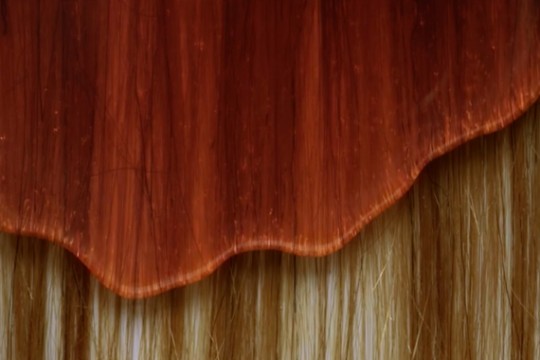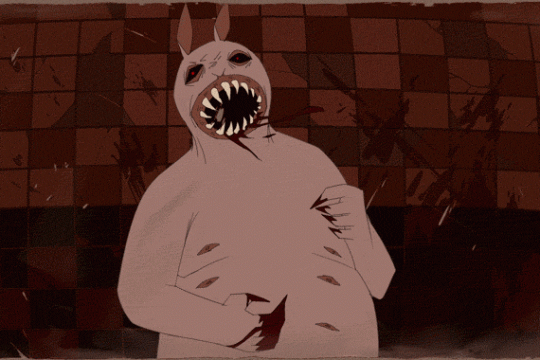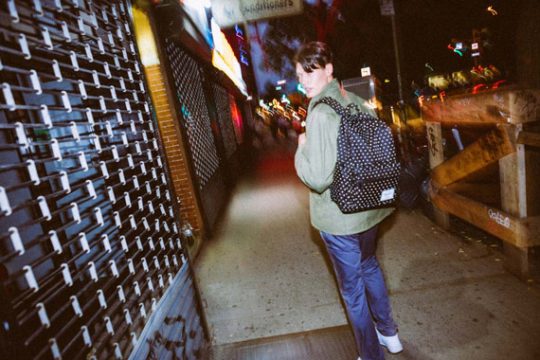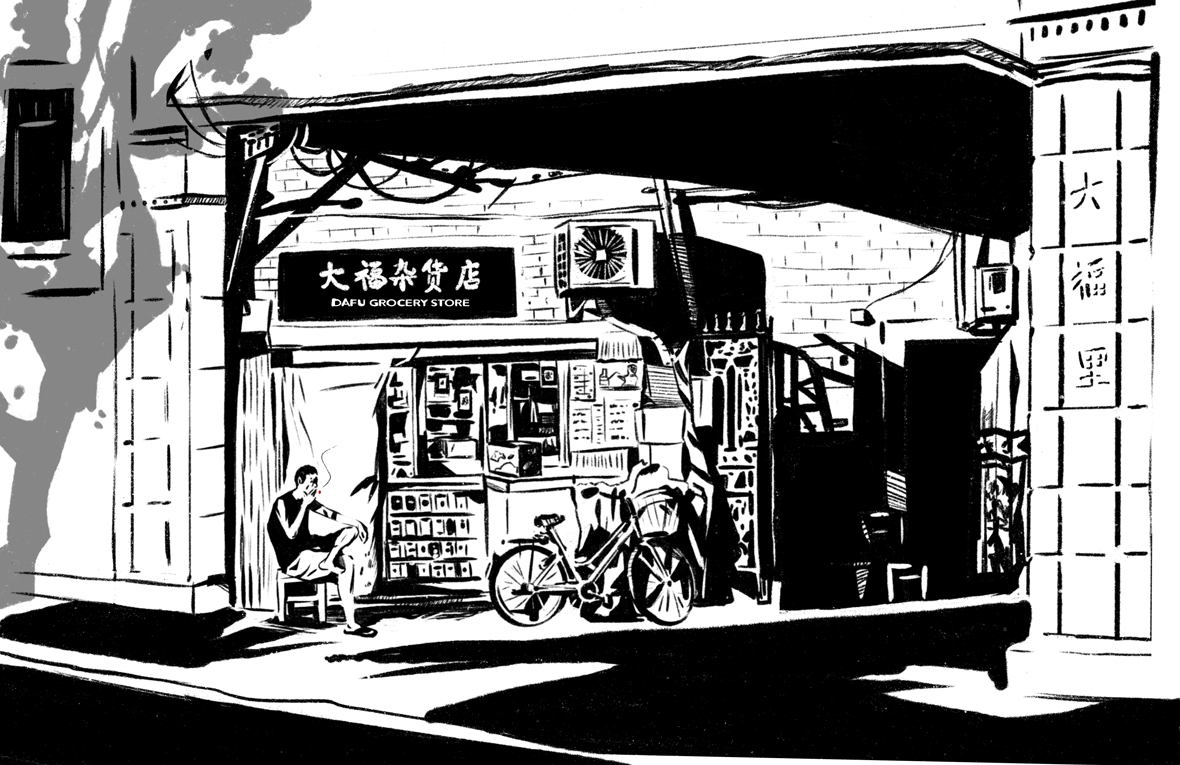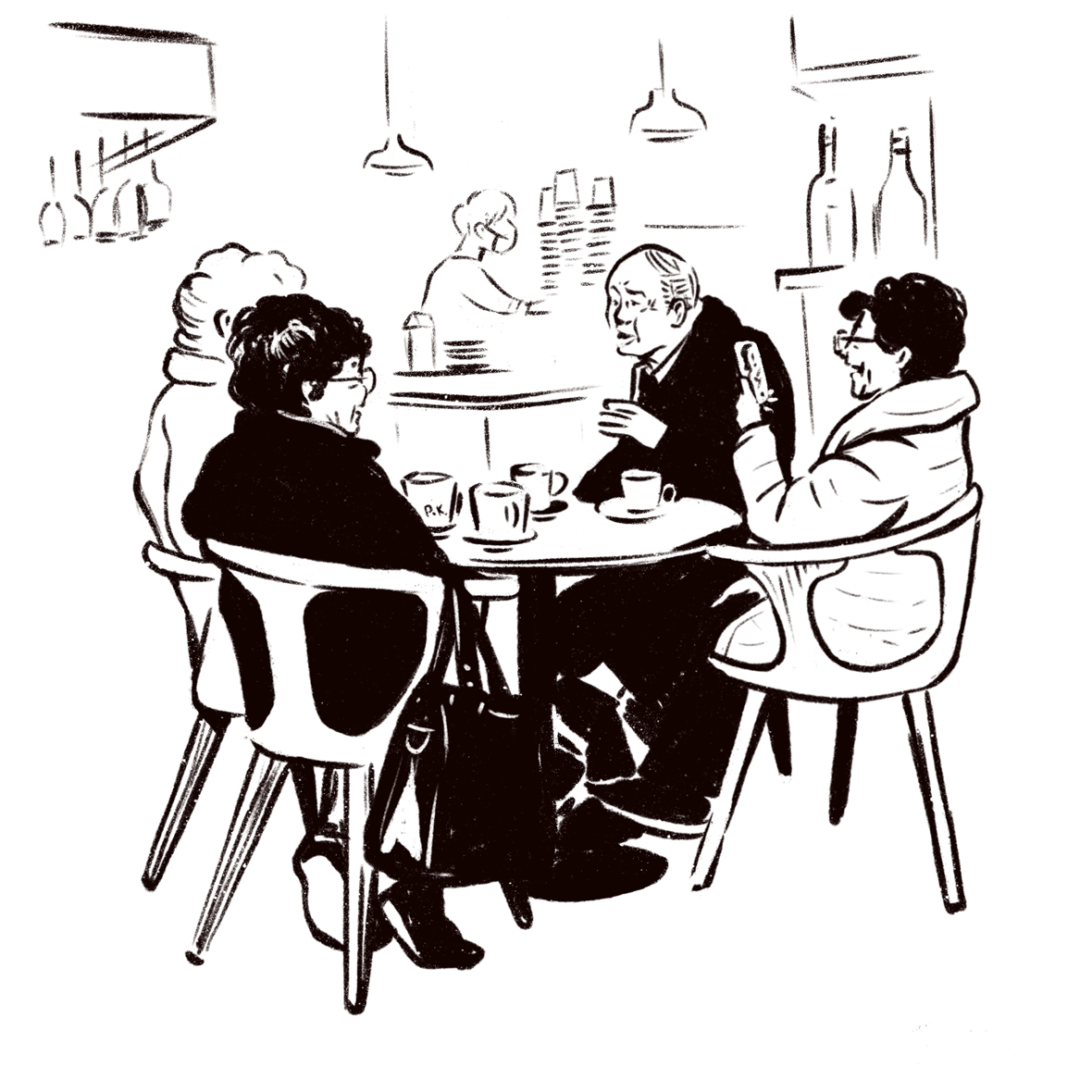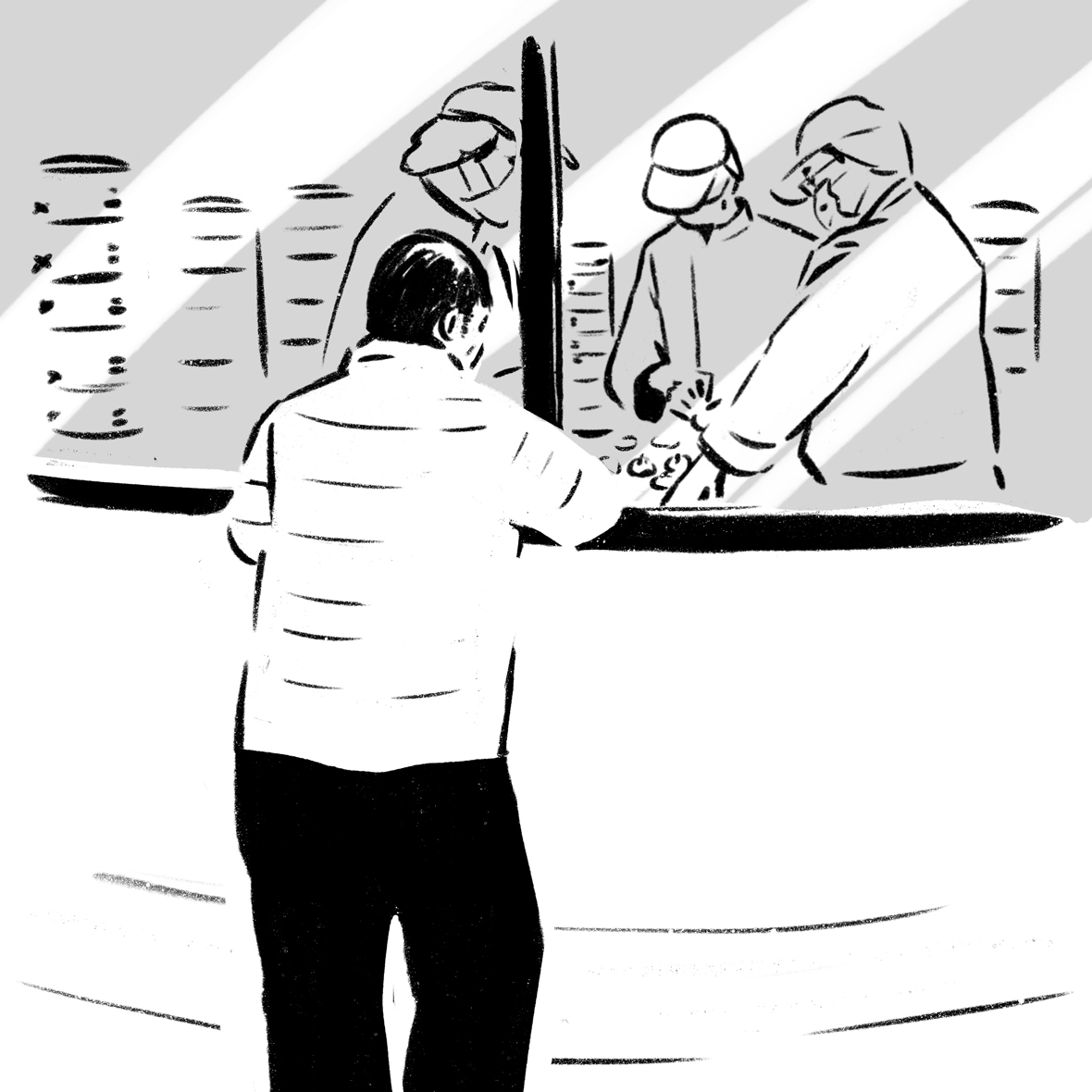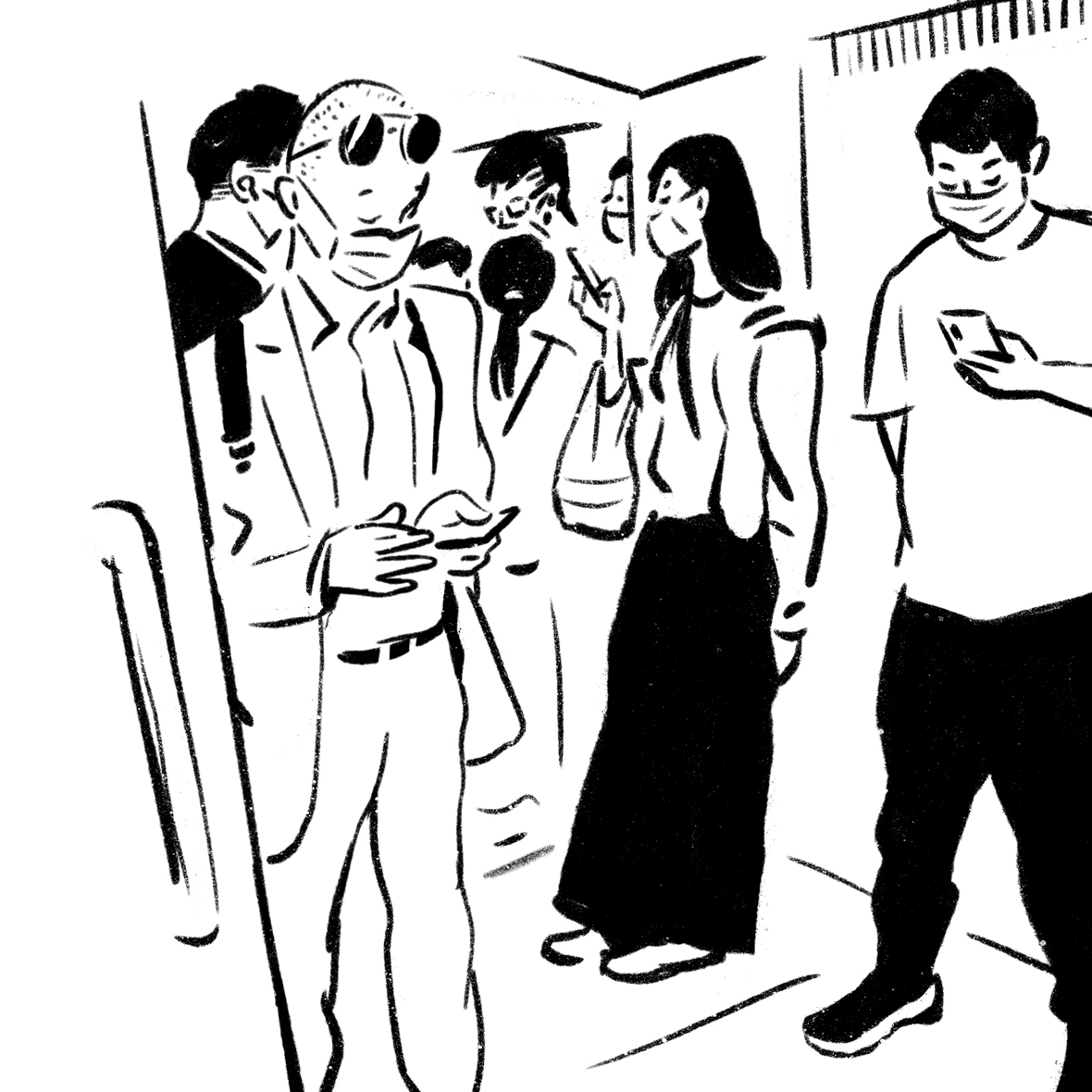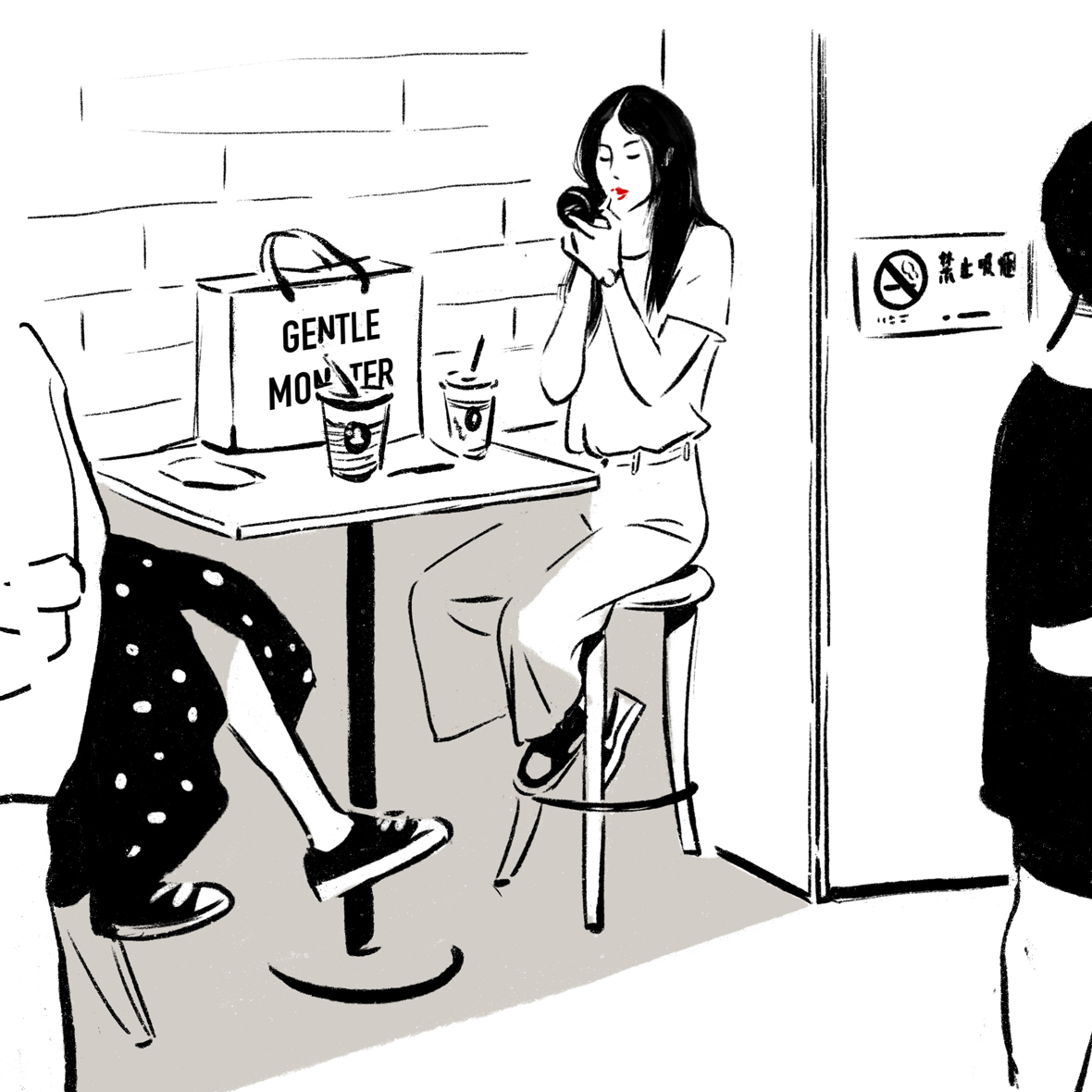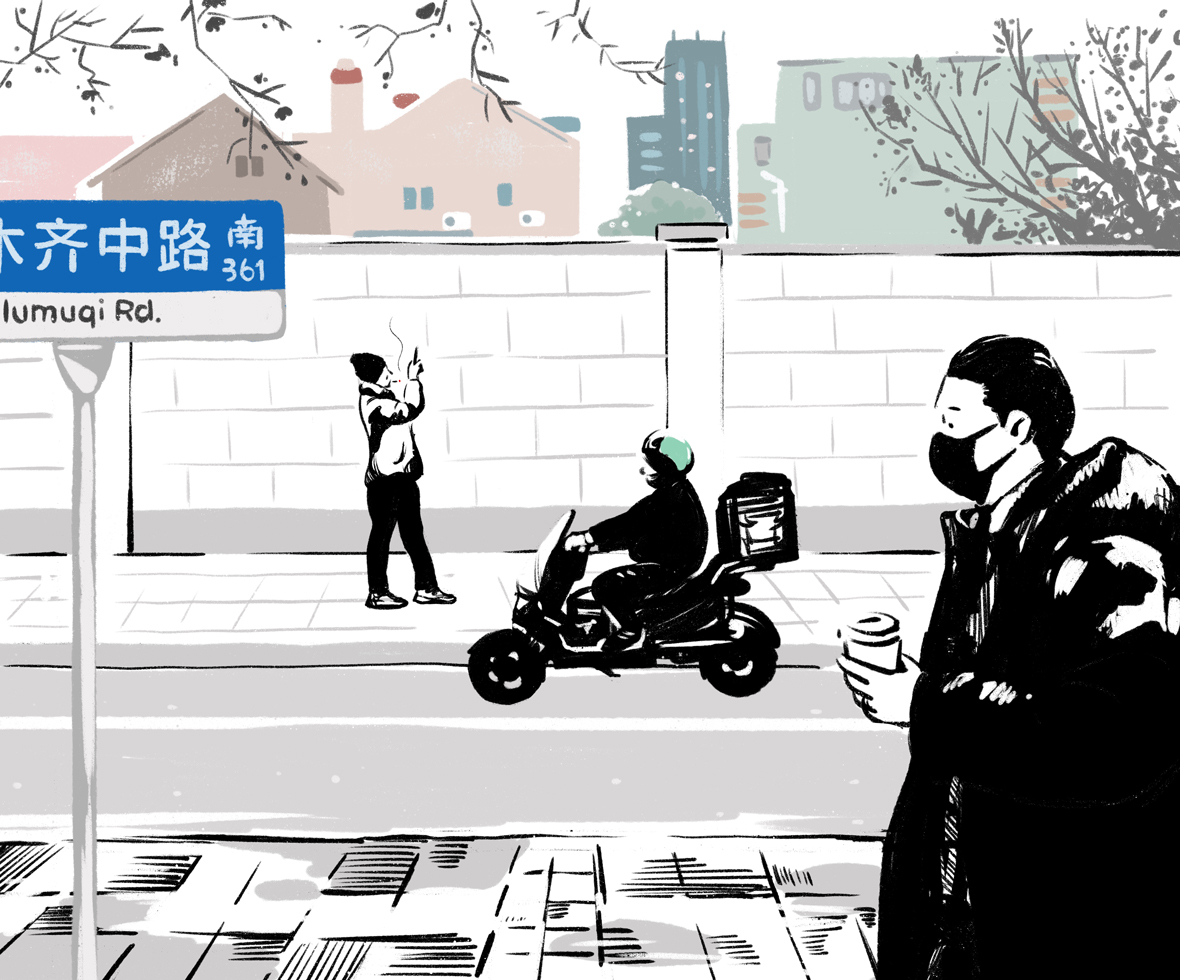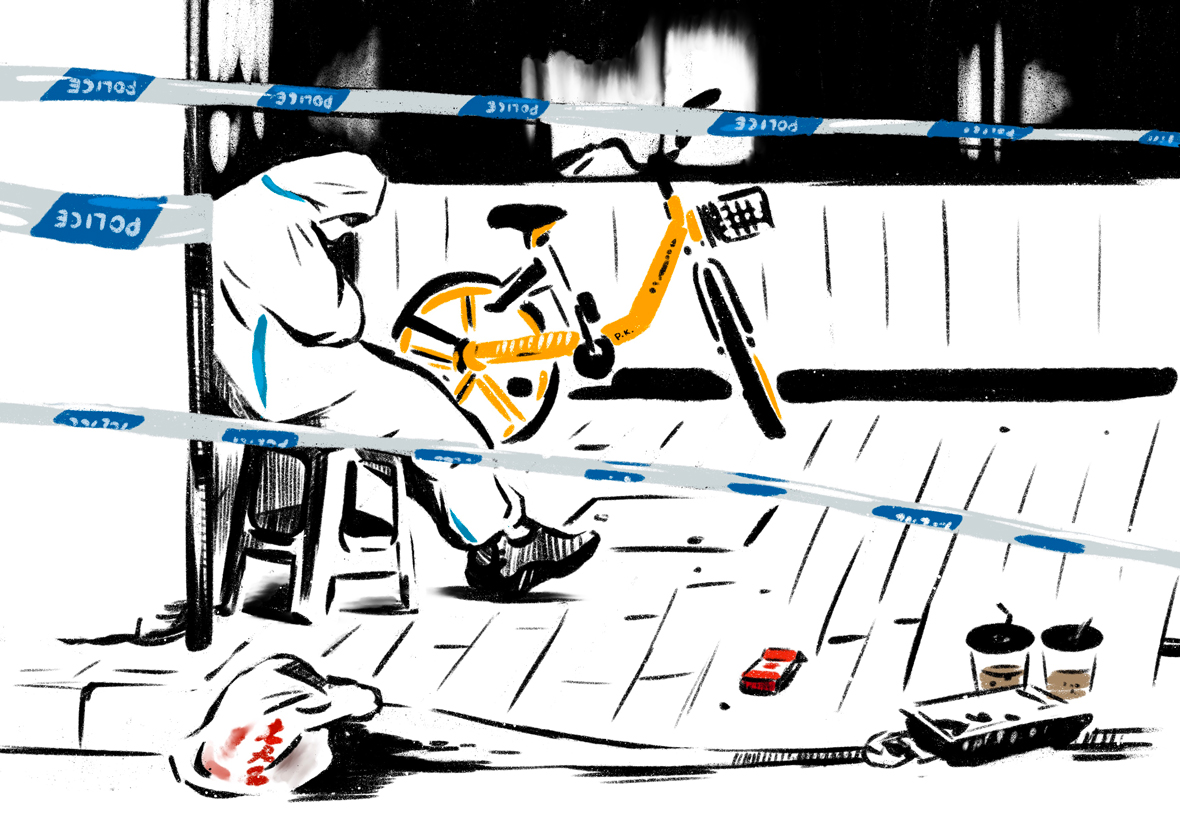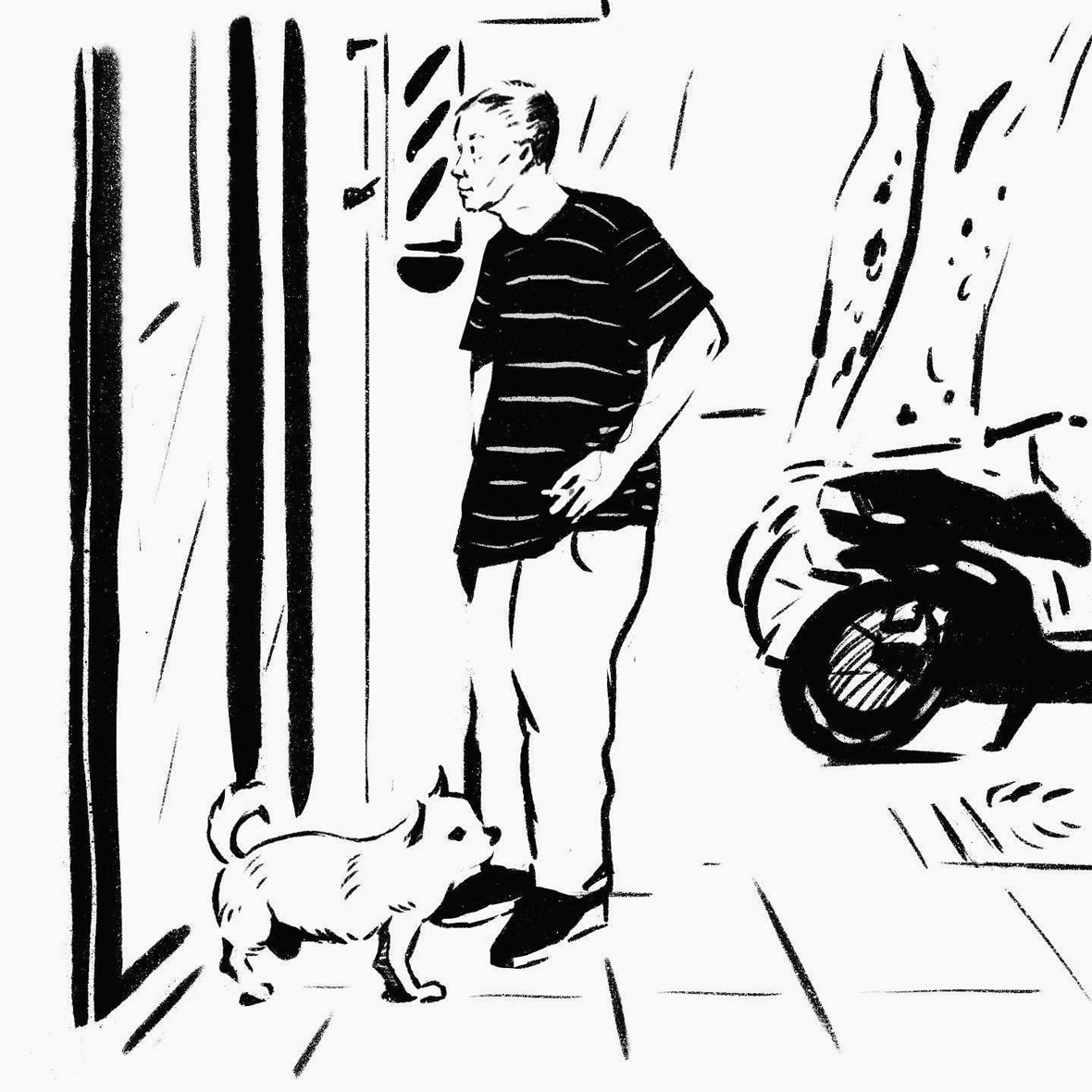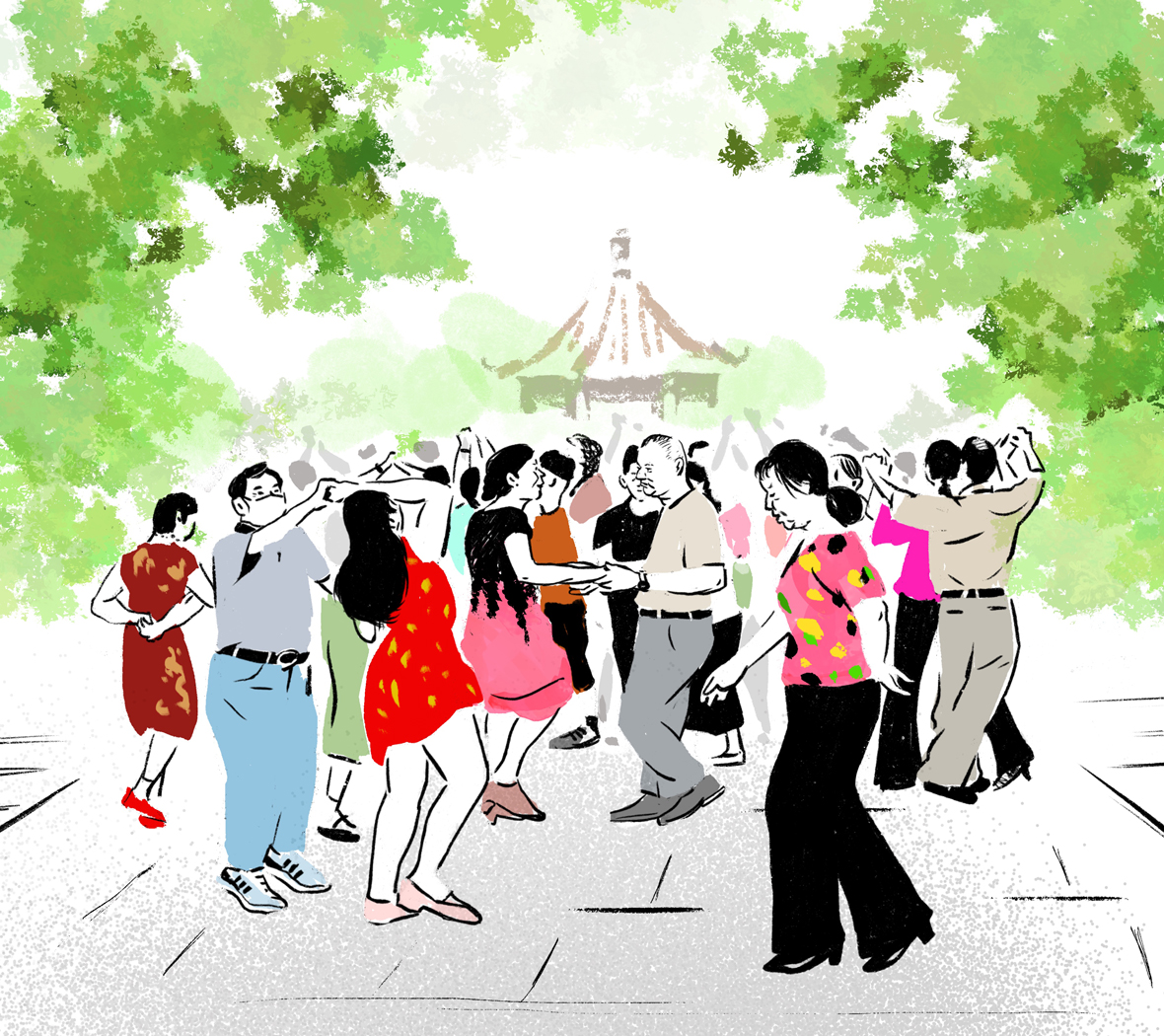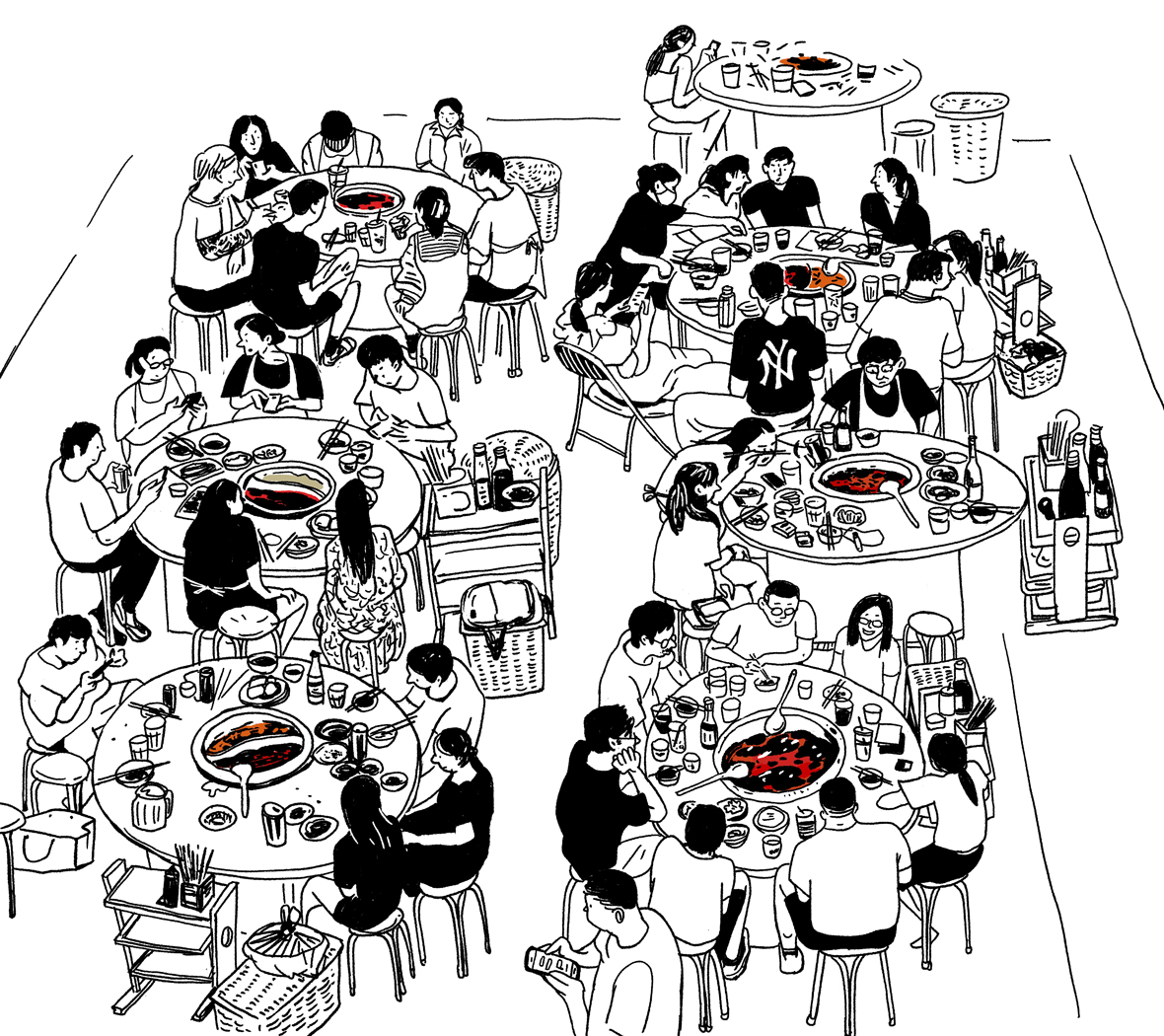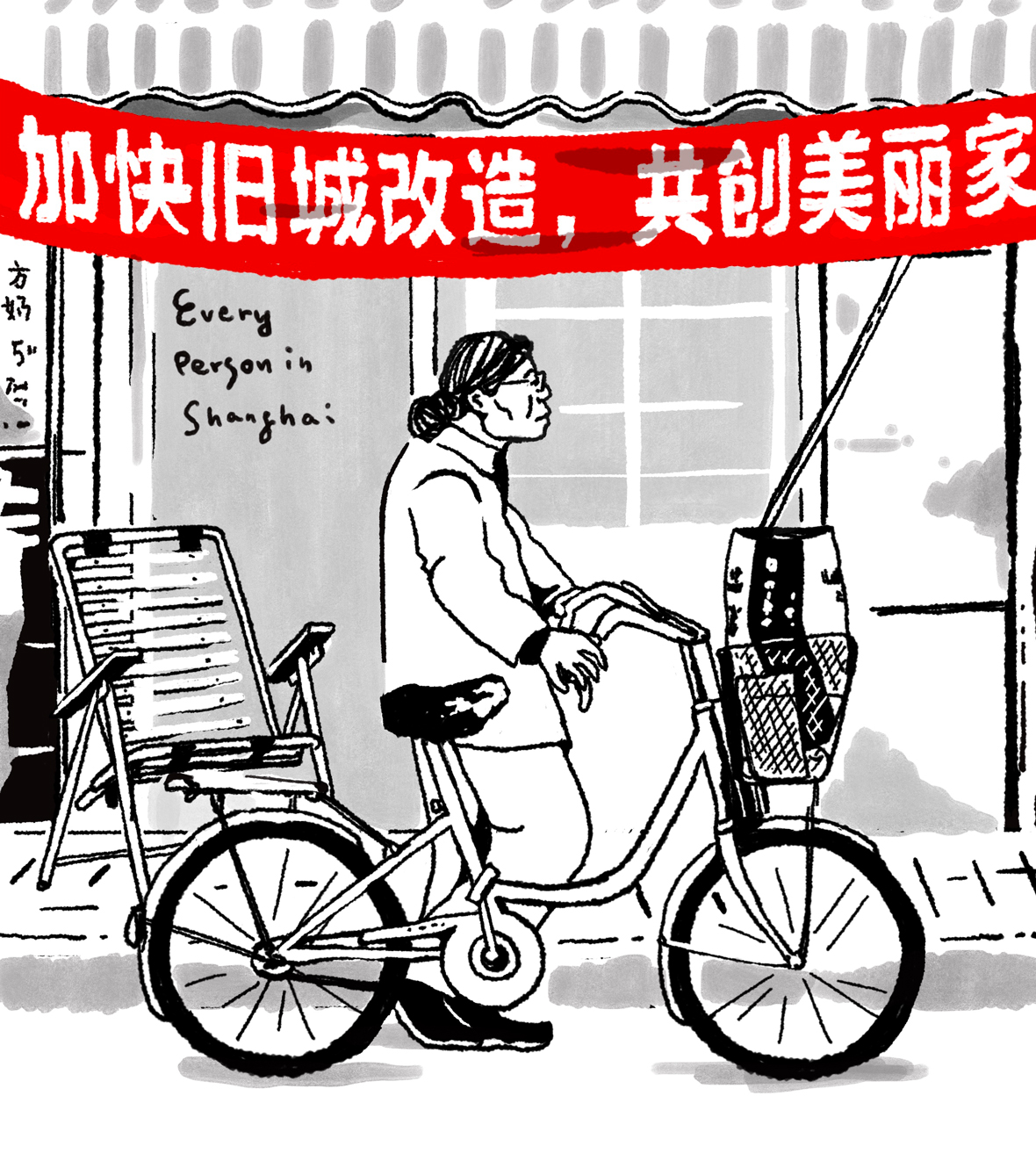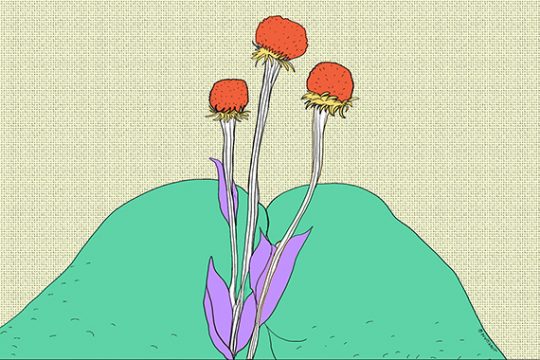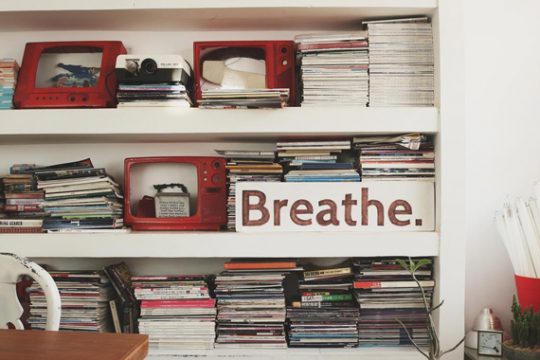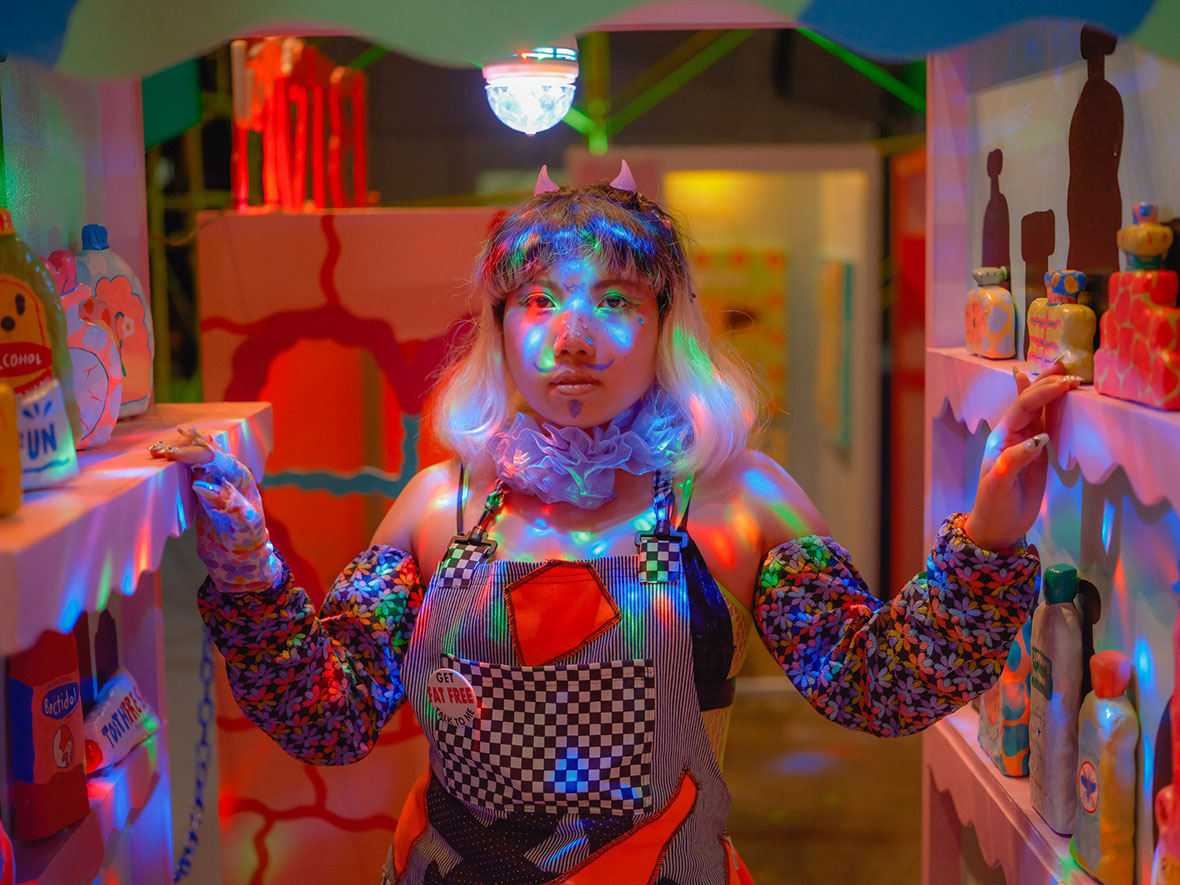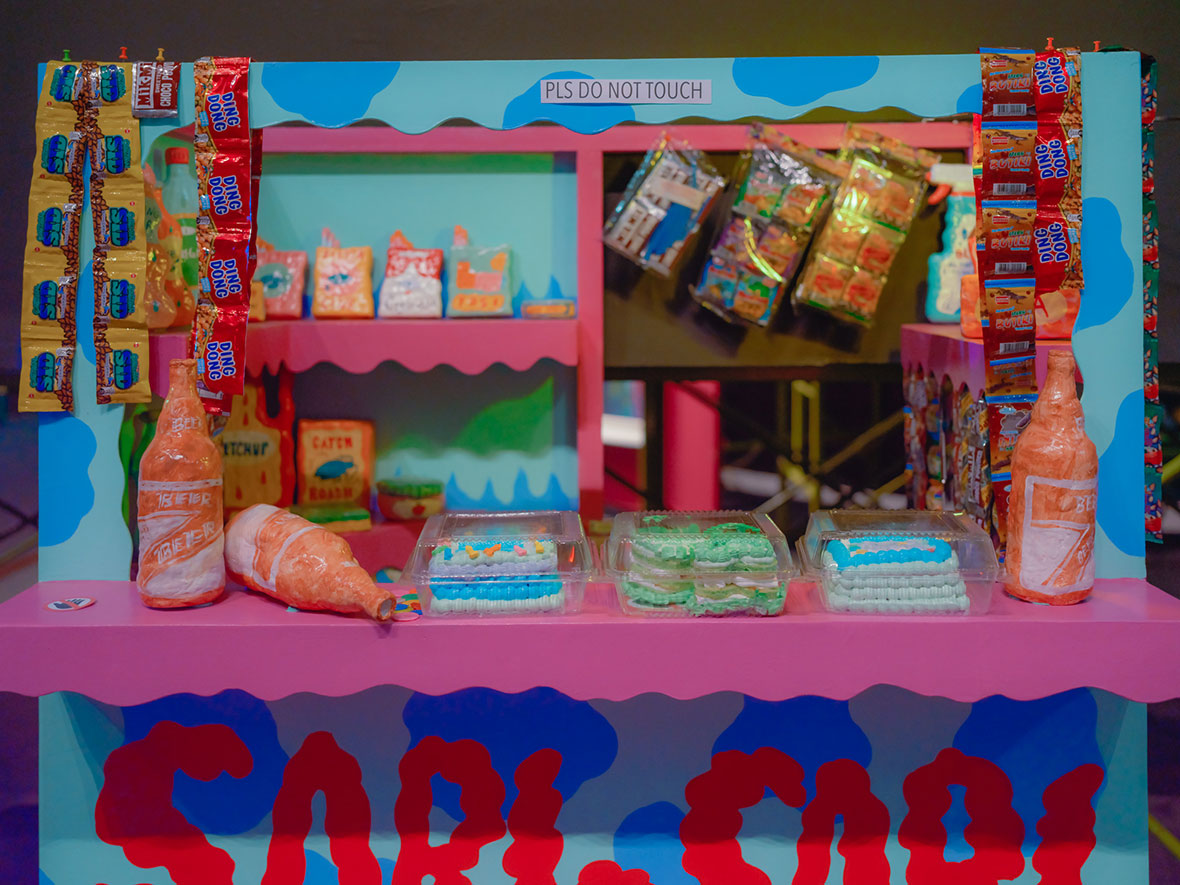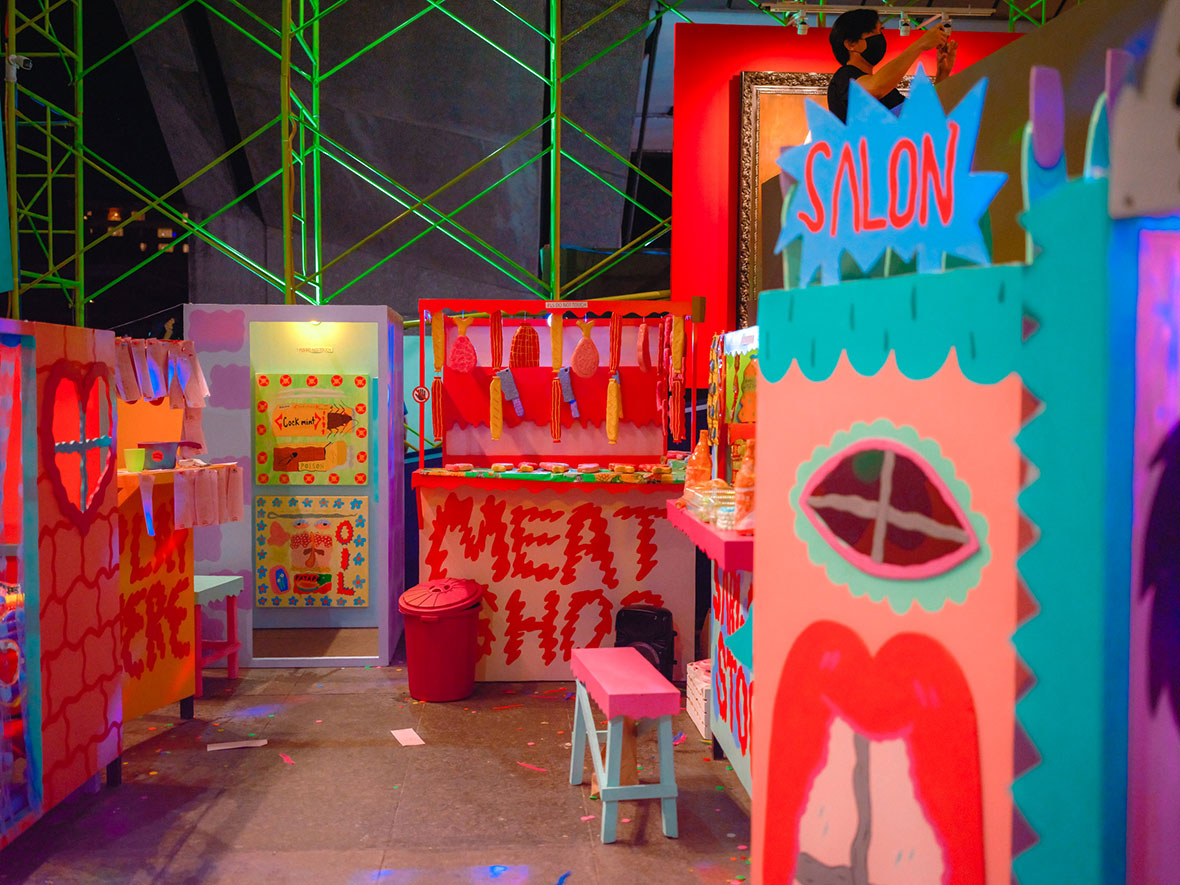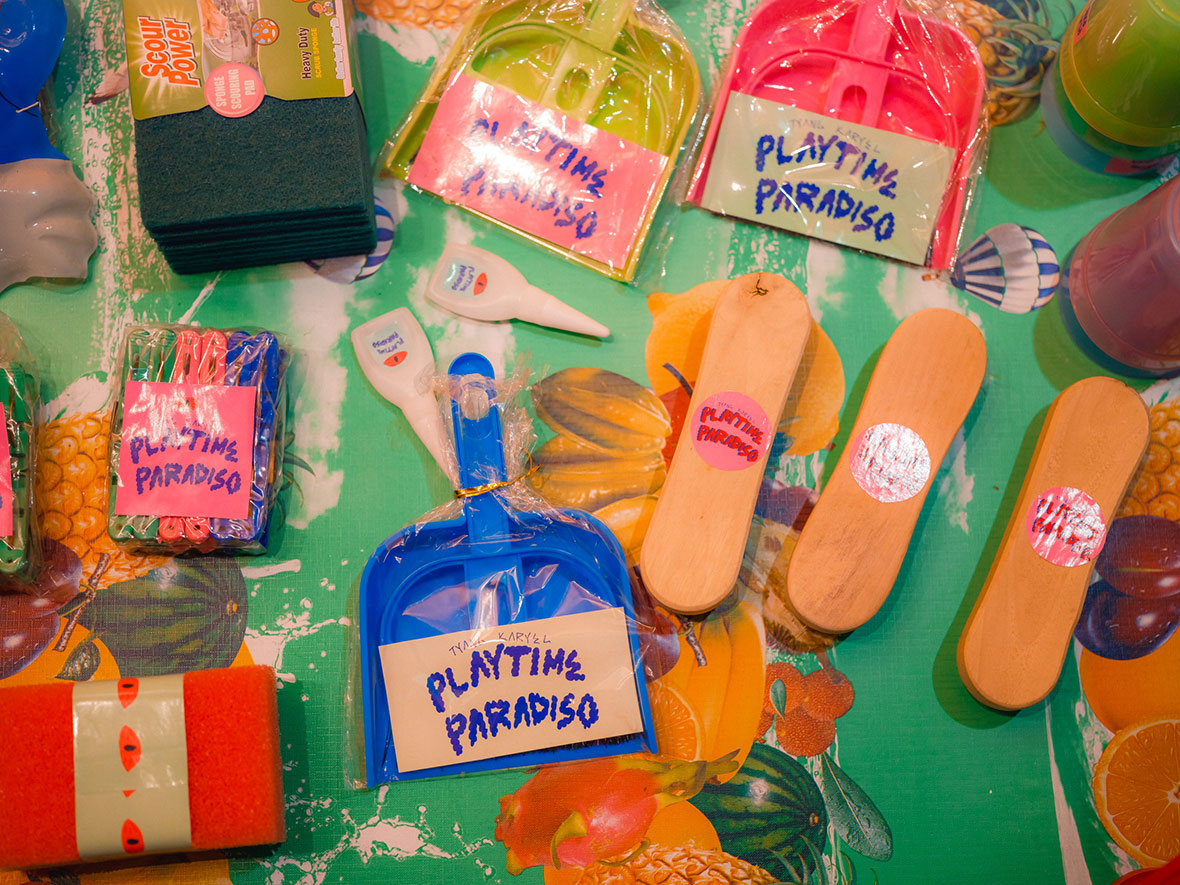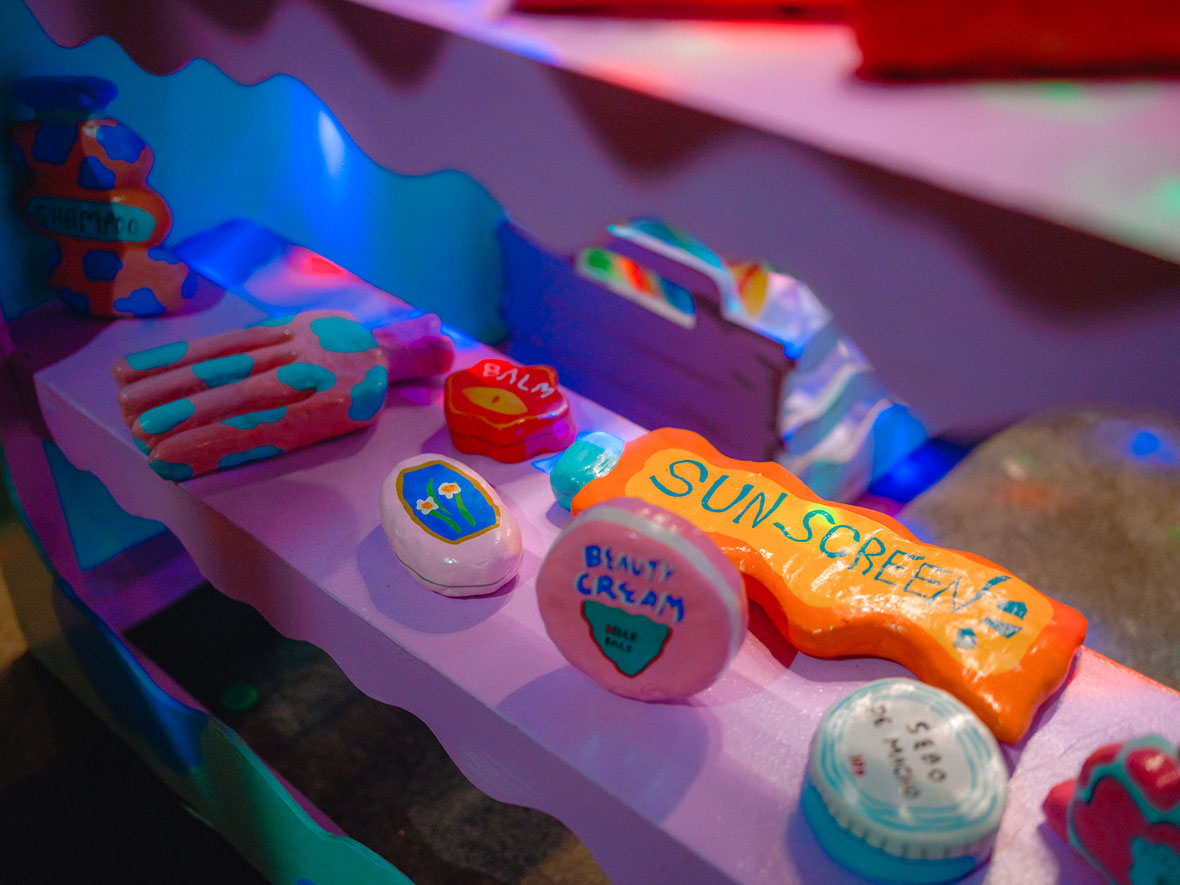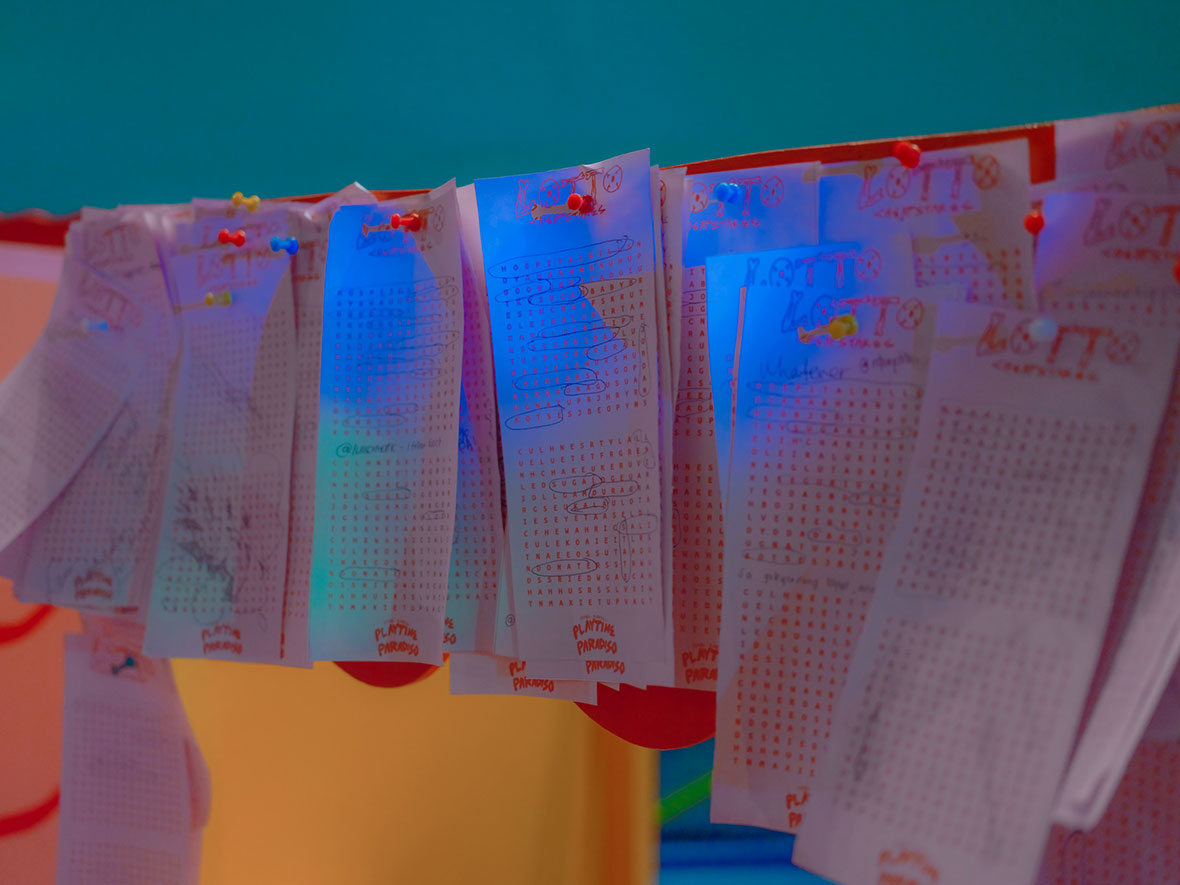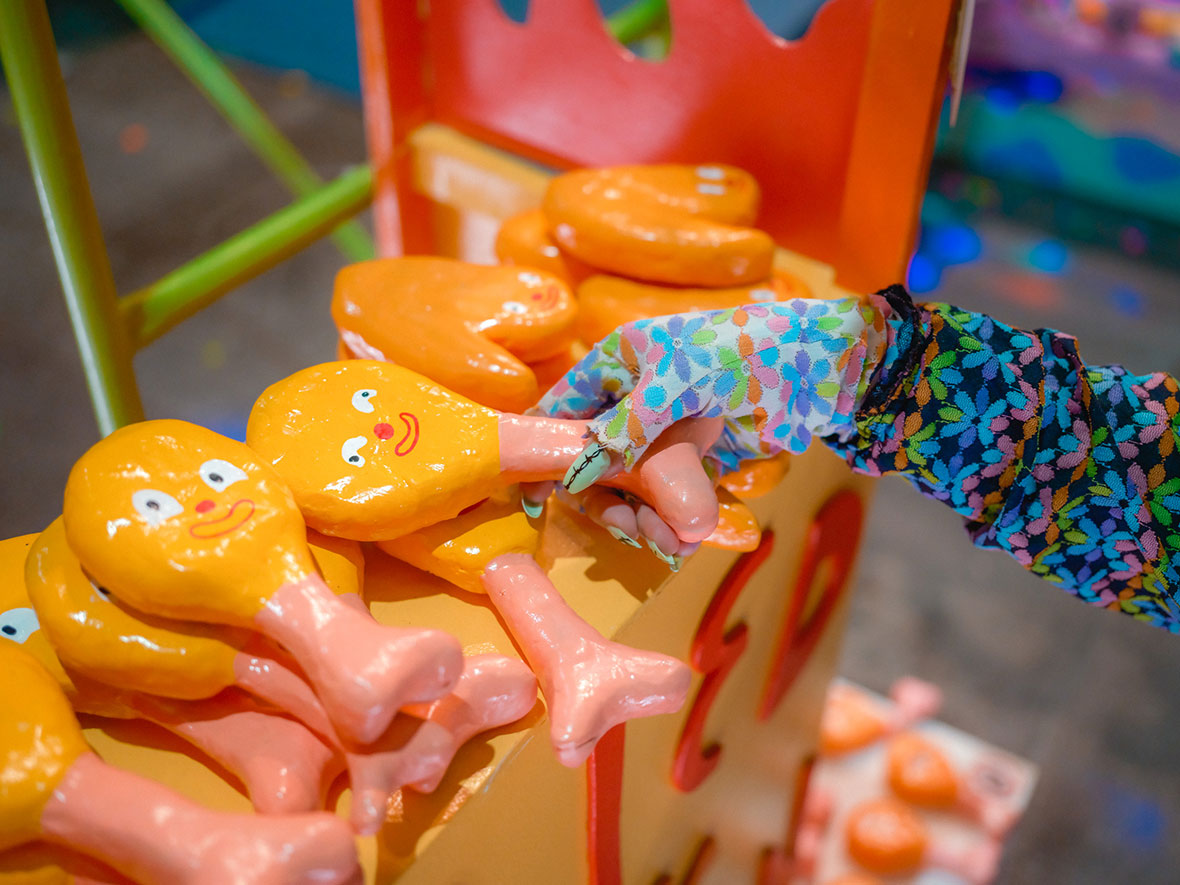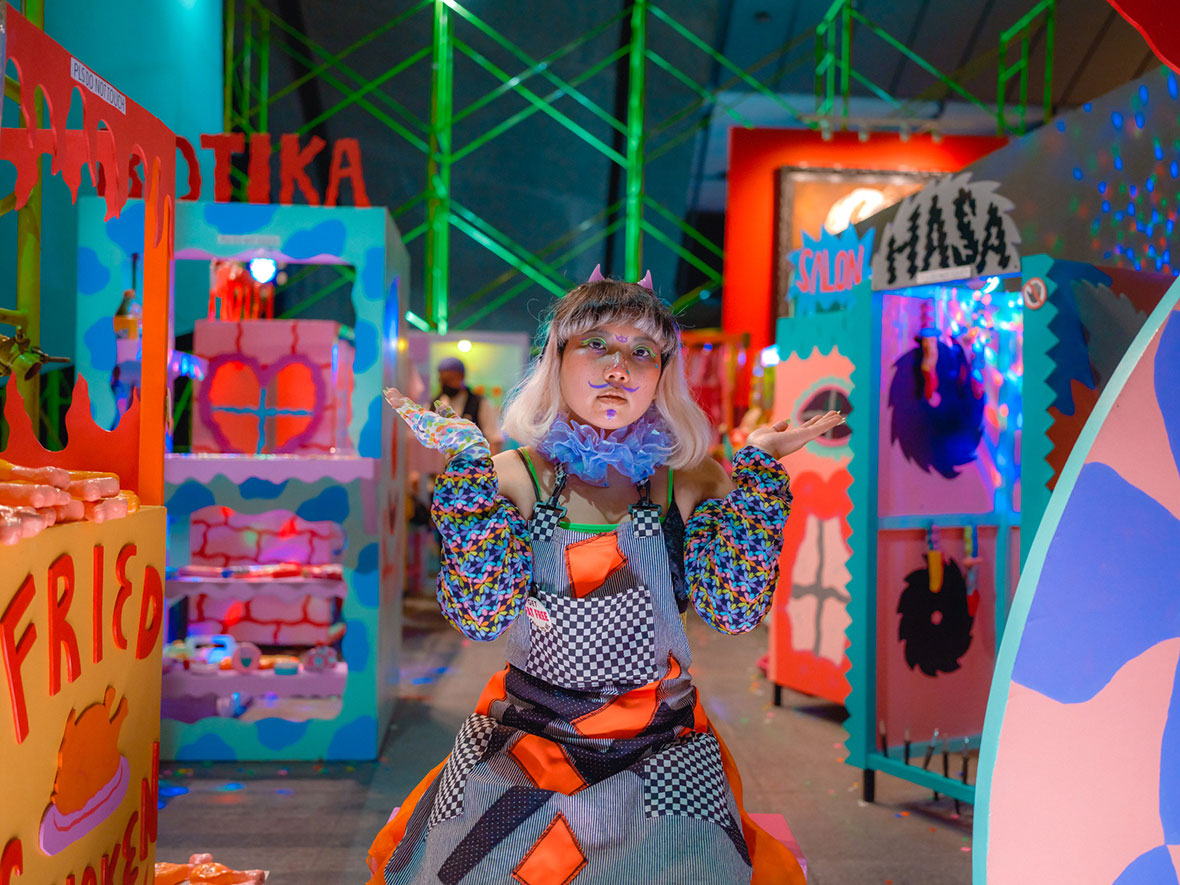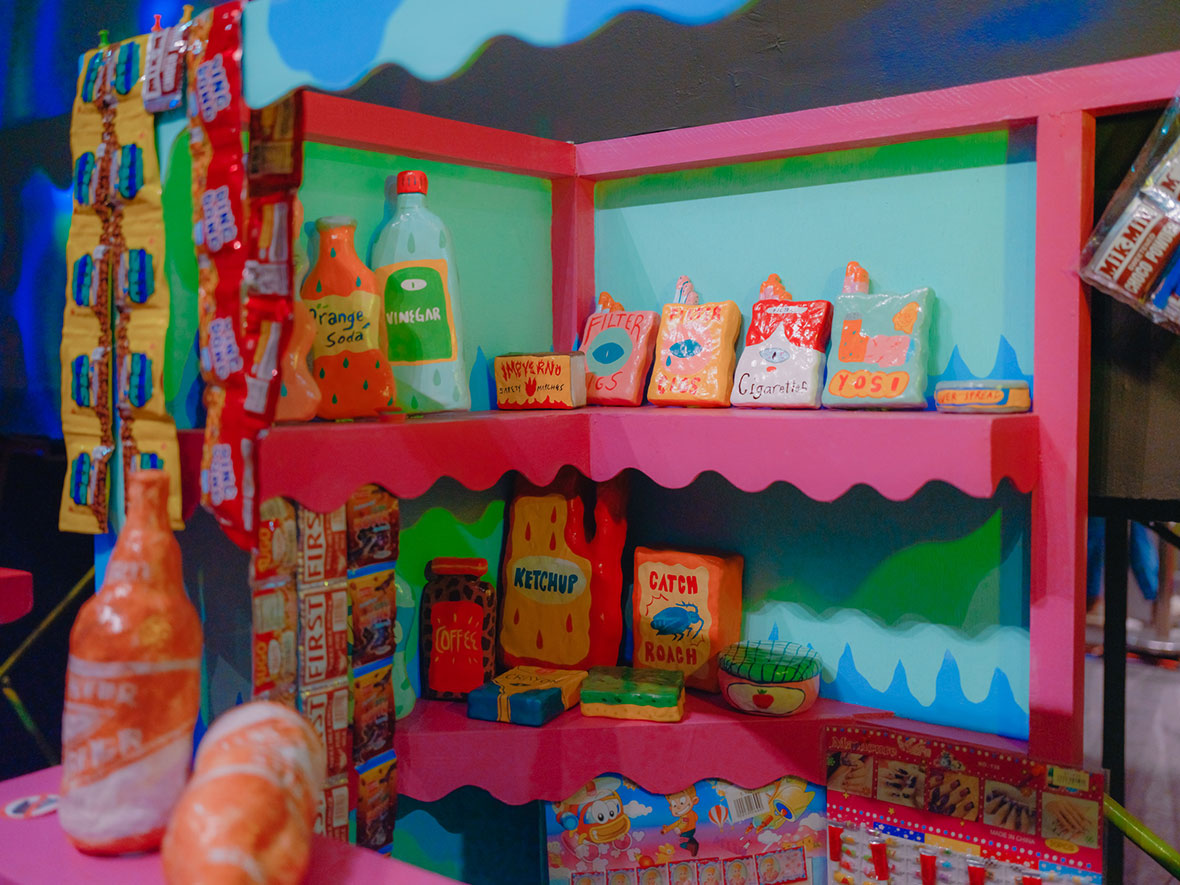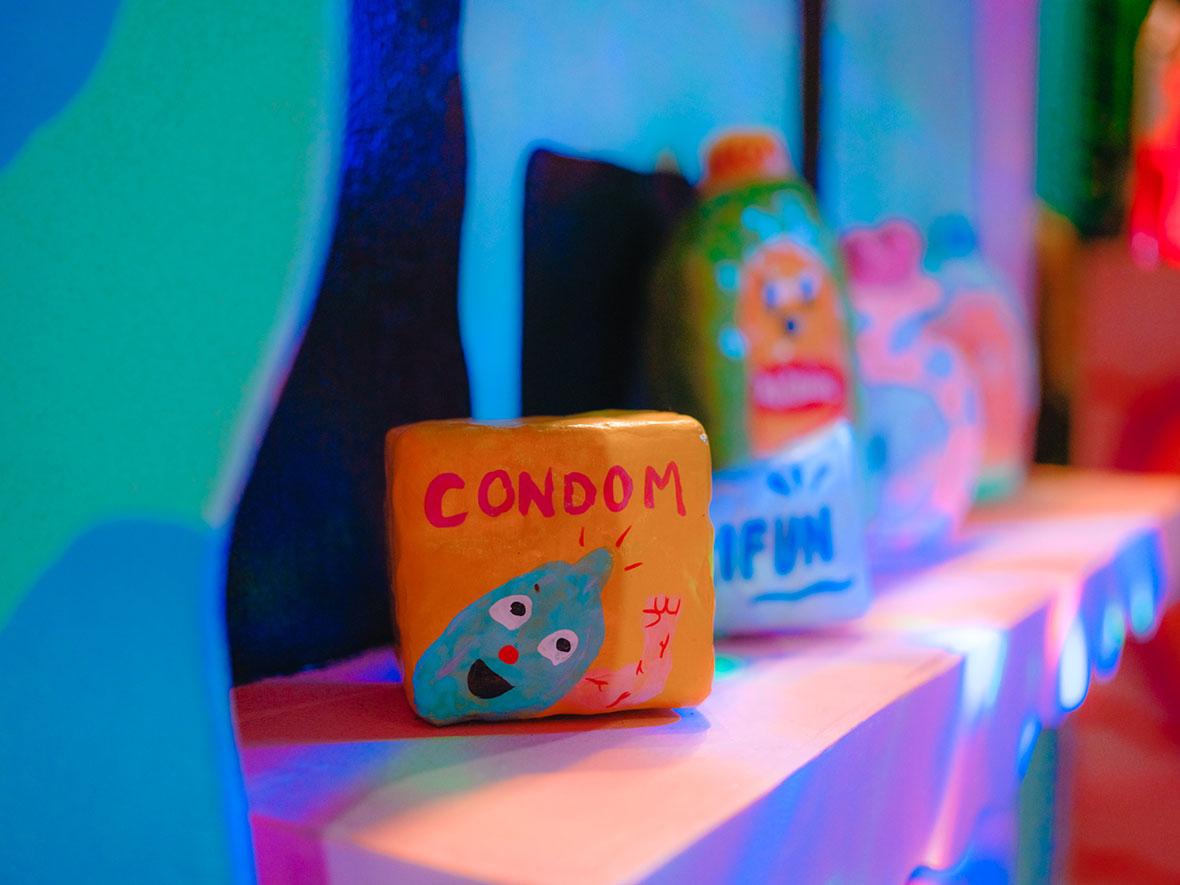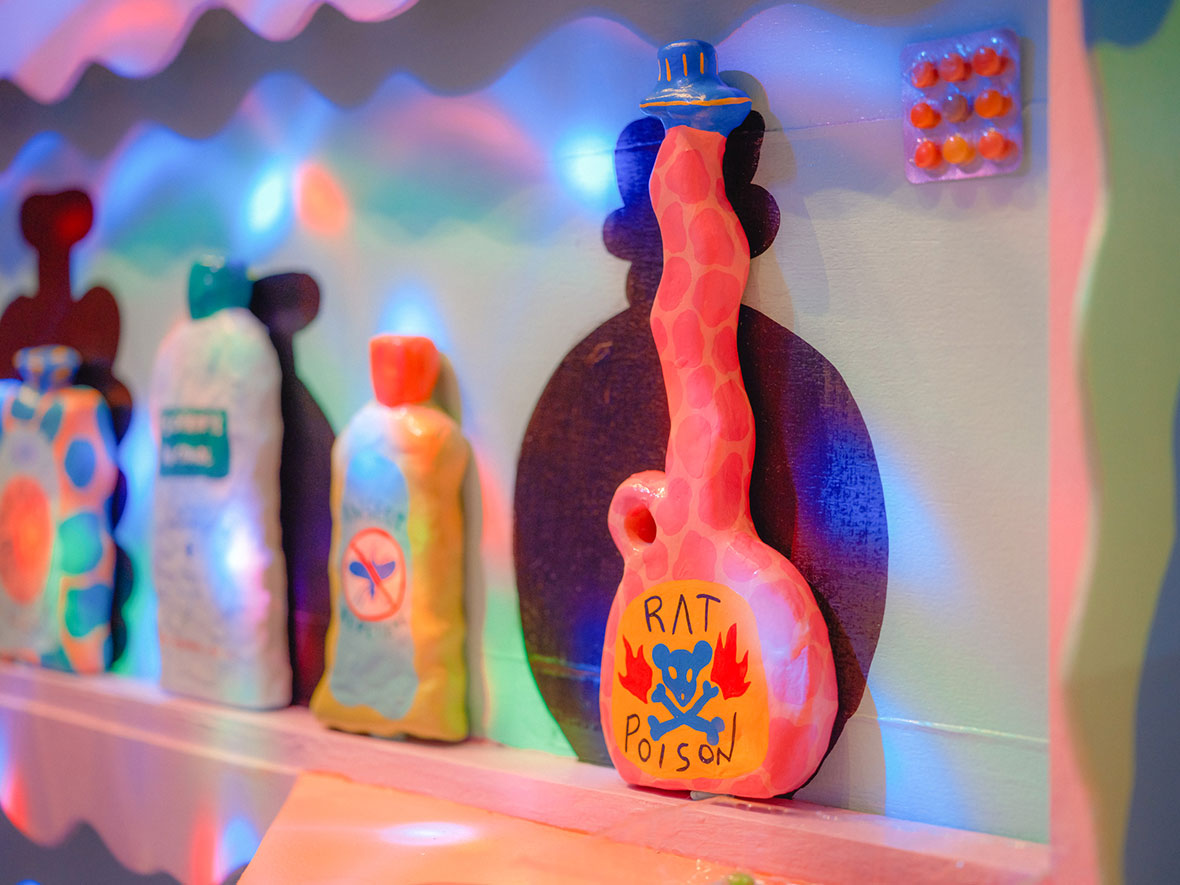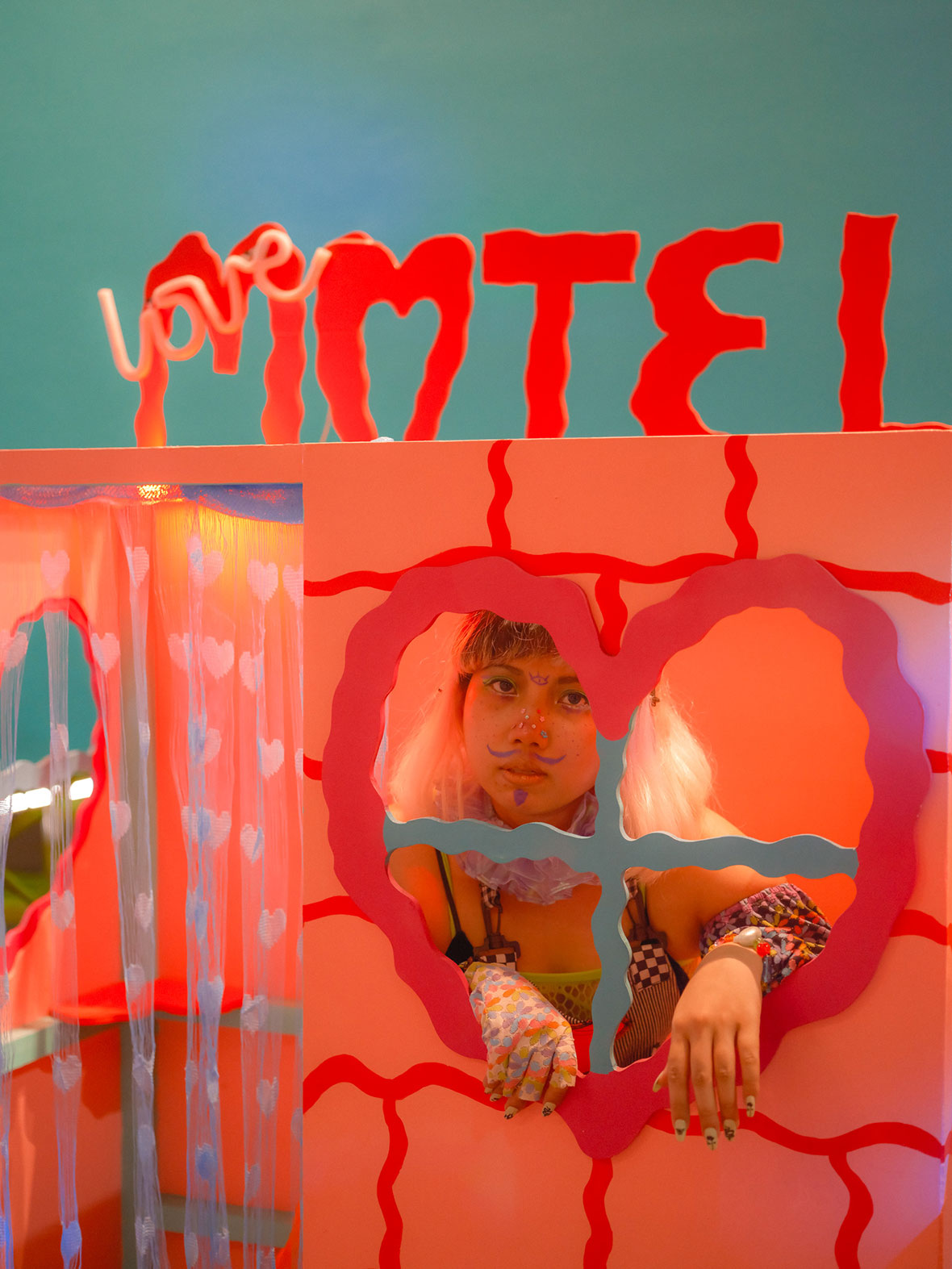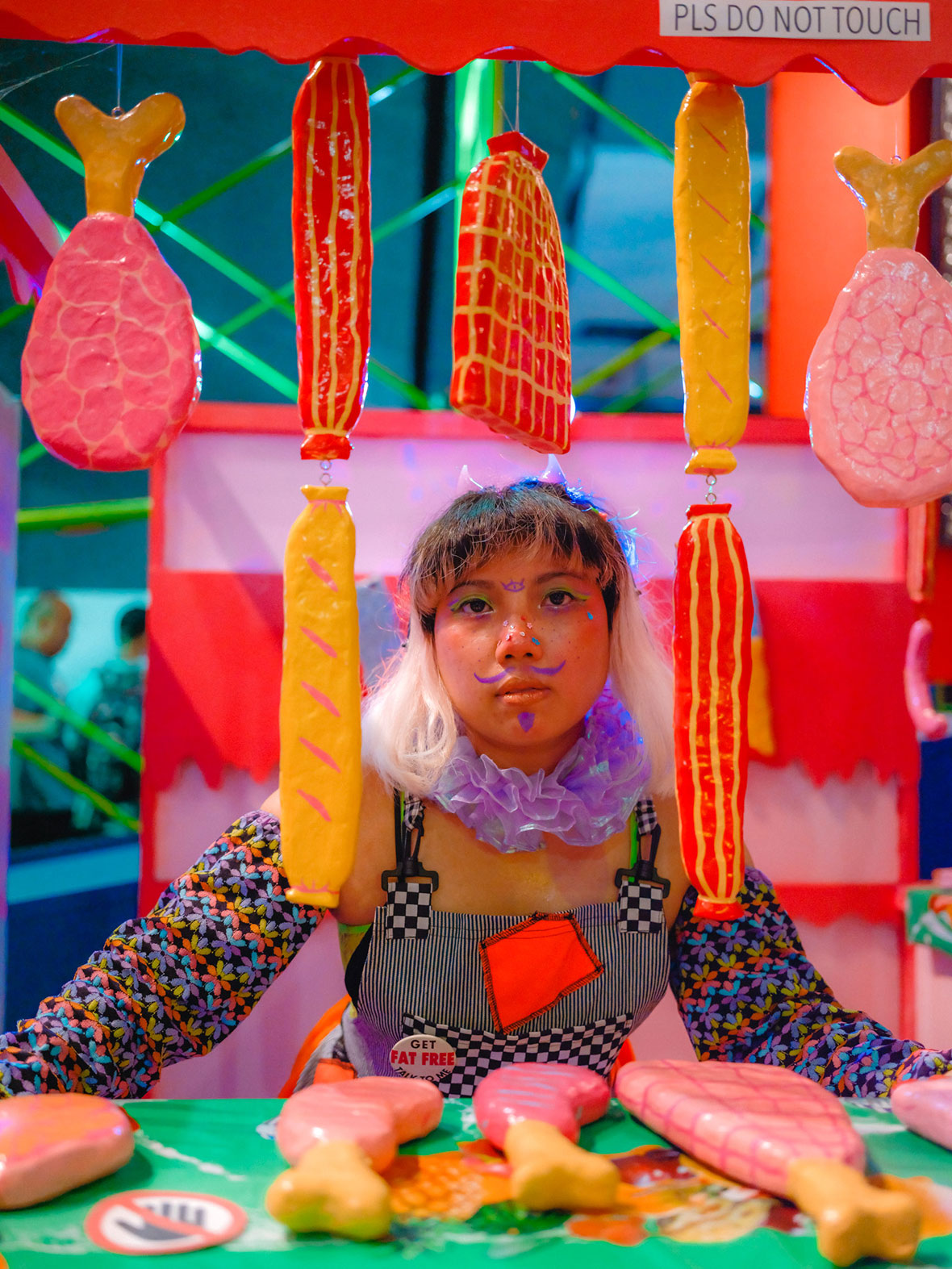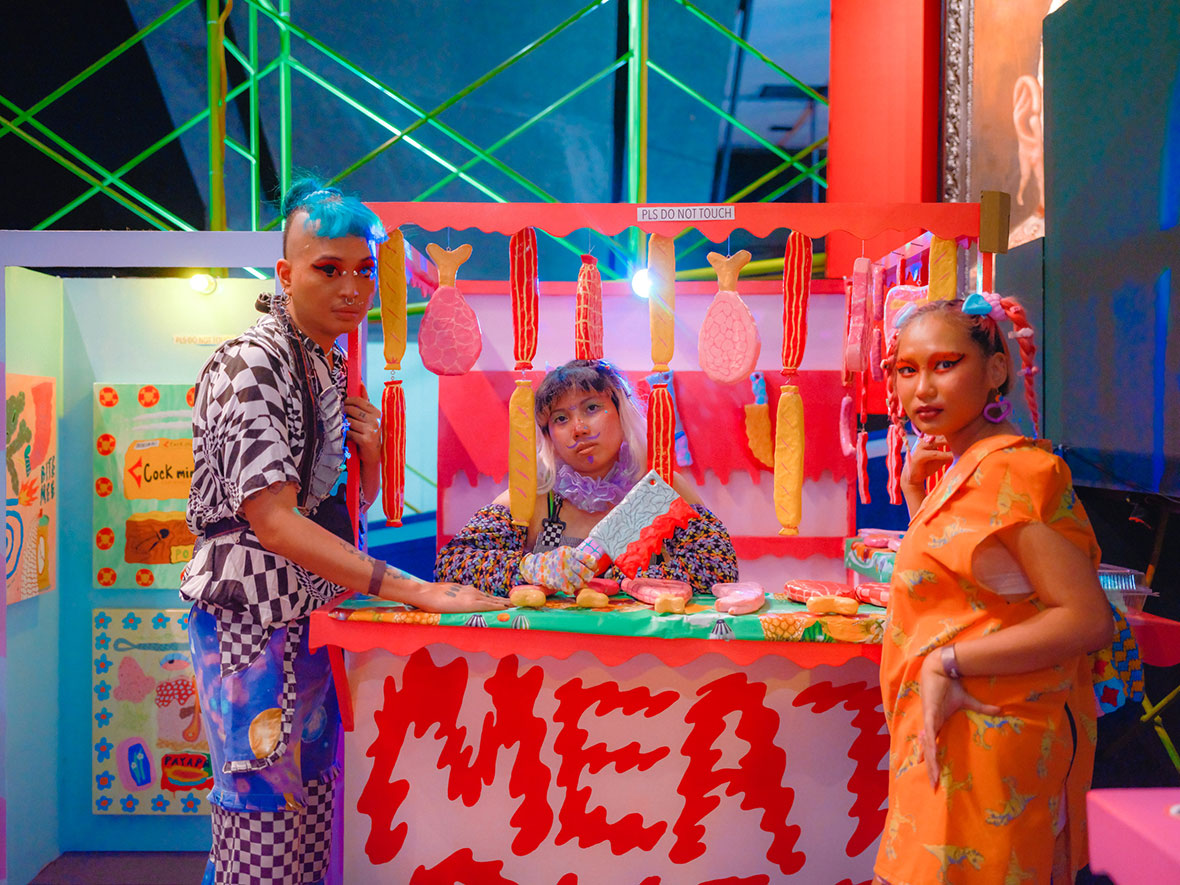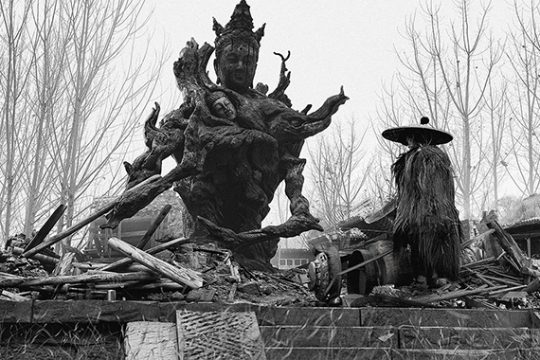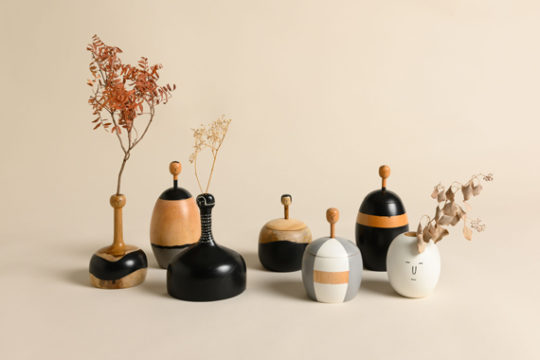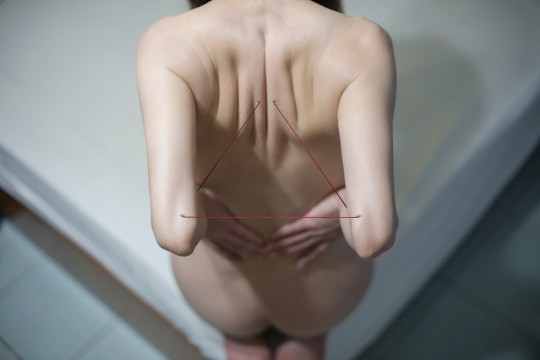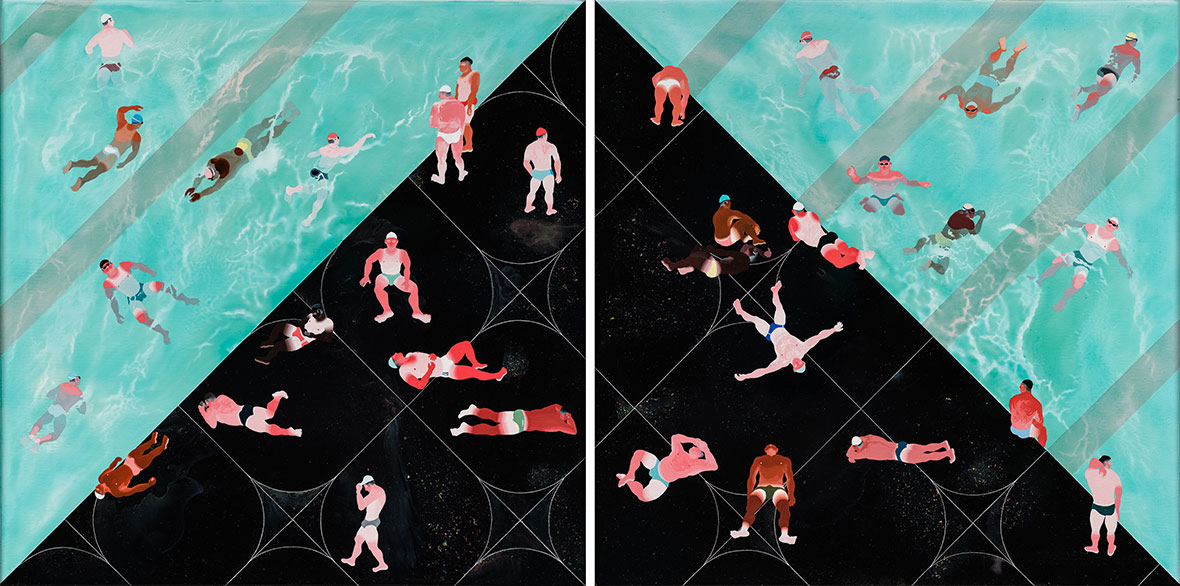
The paintings of Fan Yang-Tsung are technicolor visions of poolside life created with crisp lines and geometric edges. Vacationers lounge along abstract decks, tanning in the sun; others swim weightlessly in hypnotically crystal-blue water or peer out from hidden vantage points behind lush green foliage. The Taiwanese artist’s work seems to balance many alternating views at once: natural and artificial, pleasure and discomfort, cleanliness and filth. And he doesn’t seem too concerned with resolving any of this, which gives his work an uncertainty that’s compelling.
范扬宗的画作以俐落线条、几何轮廓突出泳池的灿烂时光。画中的主角,有的躺在抽象化的池畔沐浴阳光;有人在葱郁的绿叶背后探头张望;还有人则仿如失重状态,飘浮于梦幻般的蔚蓝之上。这位台湾艺术家的笔触似乎在不同角度之间切换:自然与人工、愉悦与不适、纯洁与情色。而这一切却像是他无意而为之,这也让他的作品透露出引人入胜的不确定性。
Some of Fan’s work is painted from a bird’s-eye view, with pool-goers splayed about at random below. Sometimes he gets up close and personal, with a focus on someone’s sunburnt back or calves. Others are painted from an voyeuristic perspective from behind the bushes. There are paintings set inside the pool and below the water as well. All together the variety of angles and viewpoints of the same scene gives his work a , the feel of a photo album of an overzealous cameraman. It’s pretty much all men in his works, and he’s straightforward about the meaning behind this: “It’s because I’m attracted to men.”
在一部分作品中,范扬宗以空中俯瞰的角度来进行绘制,让泳池中玩乐的人物随性地分布于画面之上;时而,他又会拉近距离,从亲密的角度来放大阳光照射下的肌肤;有时,他又好像躲到灌木丛后,偷窥画中之人。除此之外,他还会潜入游泳池内部,从水下的角度来进行创作。同一场景的各种角度和视角,令其作品看上去就像是一个狂热摄影师的相册。他作品中的人物几乎无一例外全是男性,而他也直截了当地揭晓了背后的原因:“因为我会被男人迷住。”
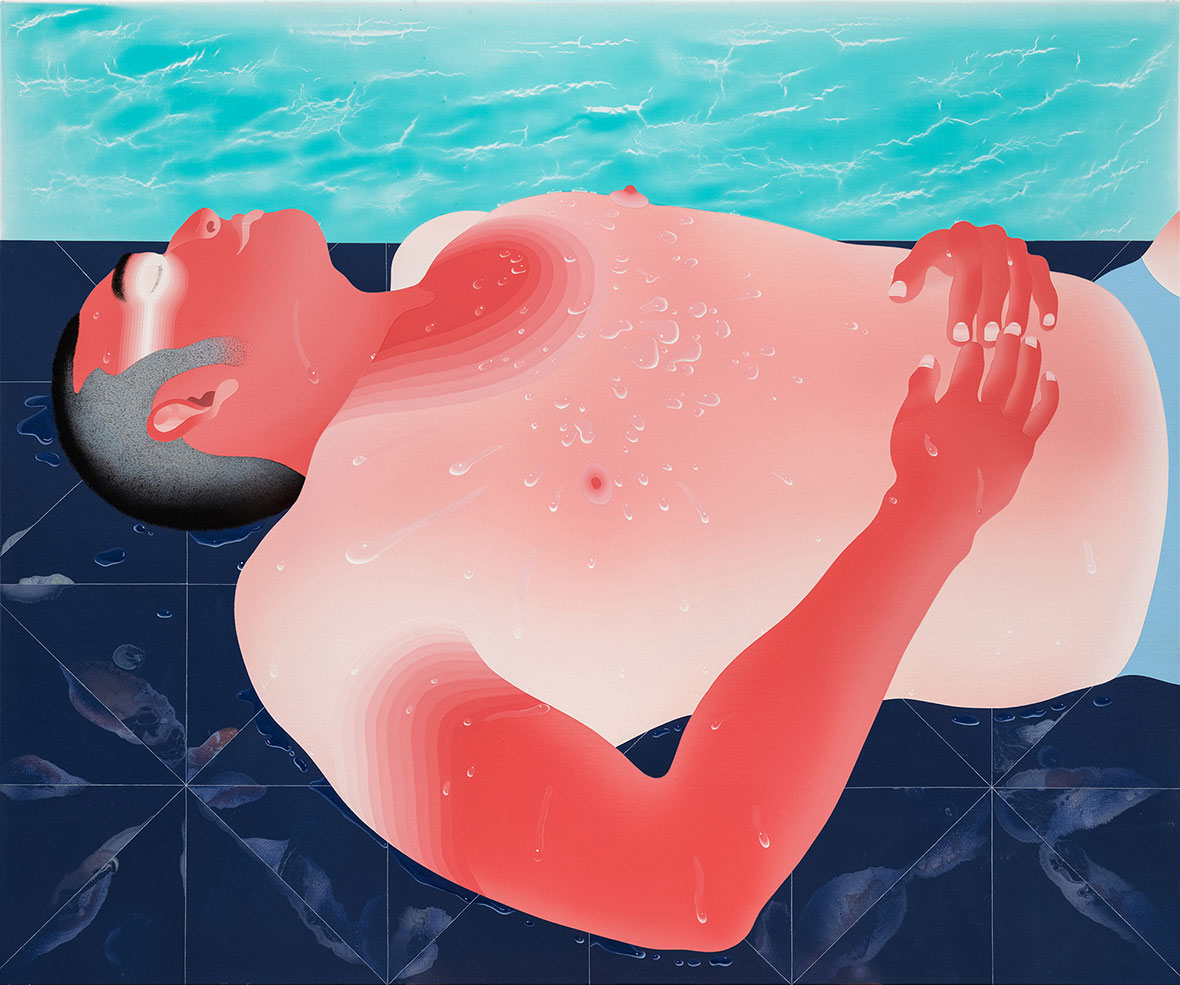
Fan was born and raised in Hsinchu, a province about an hour southwest of Taipei where he still lives and works. Outdoor pools aren’t very common there, but in the capital, they’re regular and affordable. Fascinated by public pools, he realized they would make for great subject material about ten years ago. “Swimming pools are a public space where everyone can show off their bodies and express themselves,” the 40-year-old artist says. “People really enjoy being seen and seeing others. The desire of watching others’ bodies is at the same time fulfilled.”
范扬宗在新竹出生和长大,这里距离他现在生活和工作的台北西南部约一小时车程。在新竹,室外游泳池并不常见,但在台北却很普遍,而且费用低廉。他对公共游泳池很感兴趣,早在大约十年前就发现这是一个非常不错的创作主题。“作为一个公共场所,每个人都可以在游泳池展示自己的身体,表达自己,”这位时年 40 岁的艺术家说,“泳池的人们喜欢被注视,也喜欢观察他人,他们可以在这里满足观察他人身体的愿望。”
Sometimes nature is prominent in Fan’s paintings, with vibrant green trees scaling high or large verdant leaves taking up most of the foreground. But it’s always contrasted with the built environment. Sterile blue water, unnaturally green-painted surfaces, bright towering spotlights. Even his style of linear gradient shading seems to refer to the artificial, the digital. This is contrasted with a swirling paint effect used for foliage and waves. Geometric patterns are paired with curvy bubbles and wavy leaves. The pool is, after all, a human recreation of something we’re drawn to in the natural world: “People are trying to recreate this environment where they relax and interact with each other,” he says. The results are not always great though, and oftentimes he depicts the pools and surfaces as being dirty and unkempt.
有时,大自然是范扬宗的画作的主要元素,绿植高高延伸,大片青翠绿叶占据着画面大部分前景,但总是与周围的建筑环境形成鲜明对比,譬如蔚蓝色的消毒泳池、非天然的绿色油漆地面、明晃刺眼的聚光灯。就连他的线性渐变色似乎也在暗指人工与数字化,与树叶和波浪的漩涡纹理形成鲜明对比。几何图案与弧形气泡和波浪形叶子相得益彰。毕竟,游泳池是人类对所向往自然界事物的重现:“人们正试图重构这种供他们放松和交流的环境,”他说,但结果往往并不理想,很多时候,他笔下的泳池和地面显得脏乱。
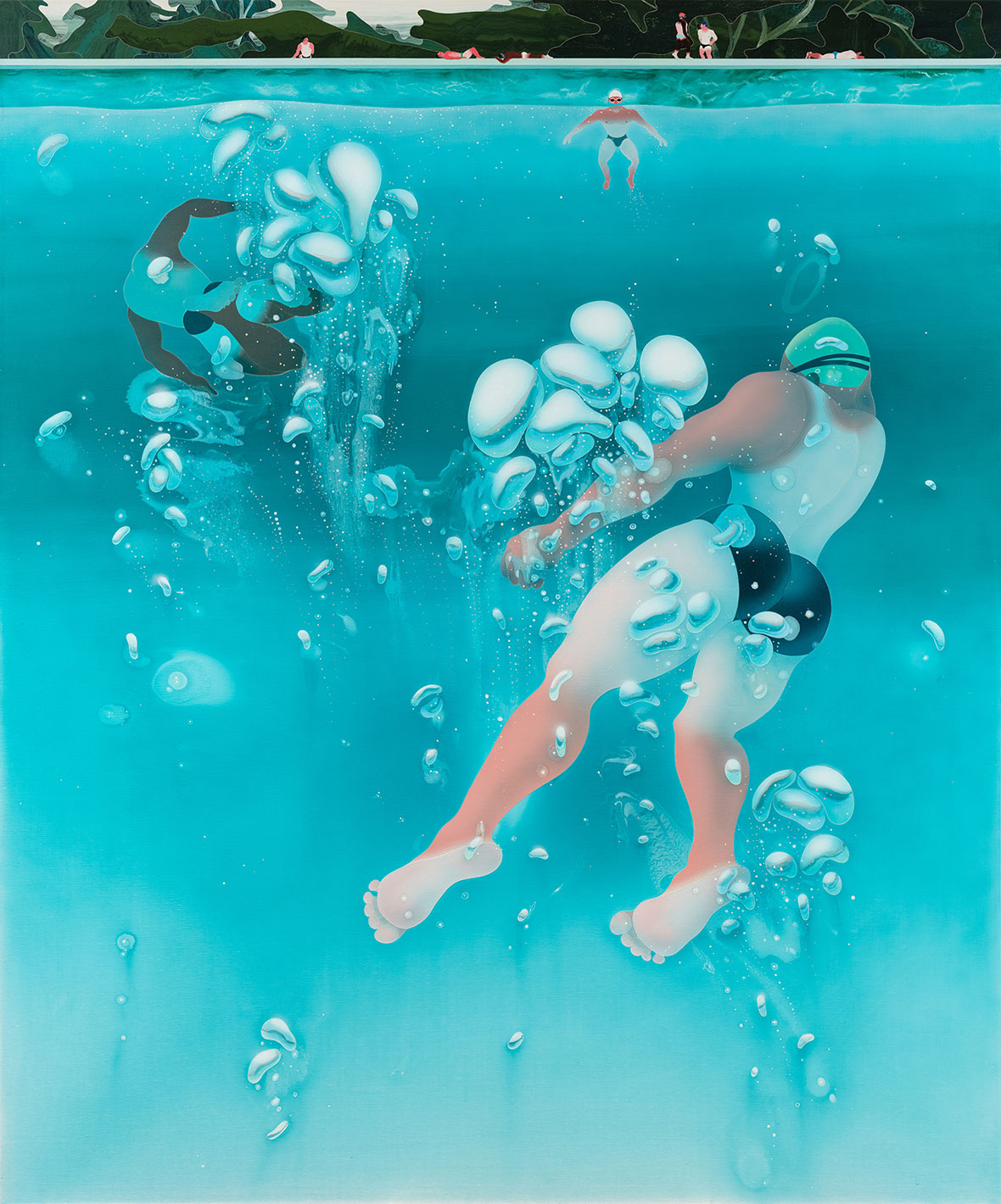
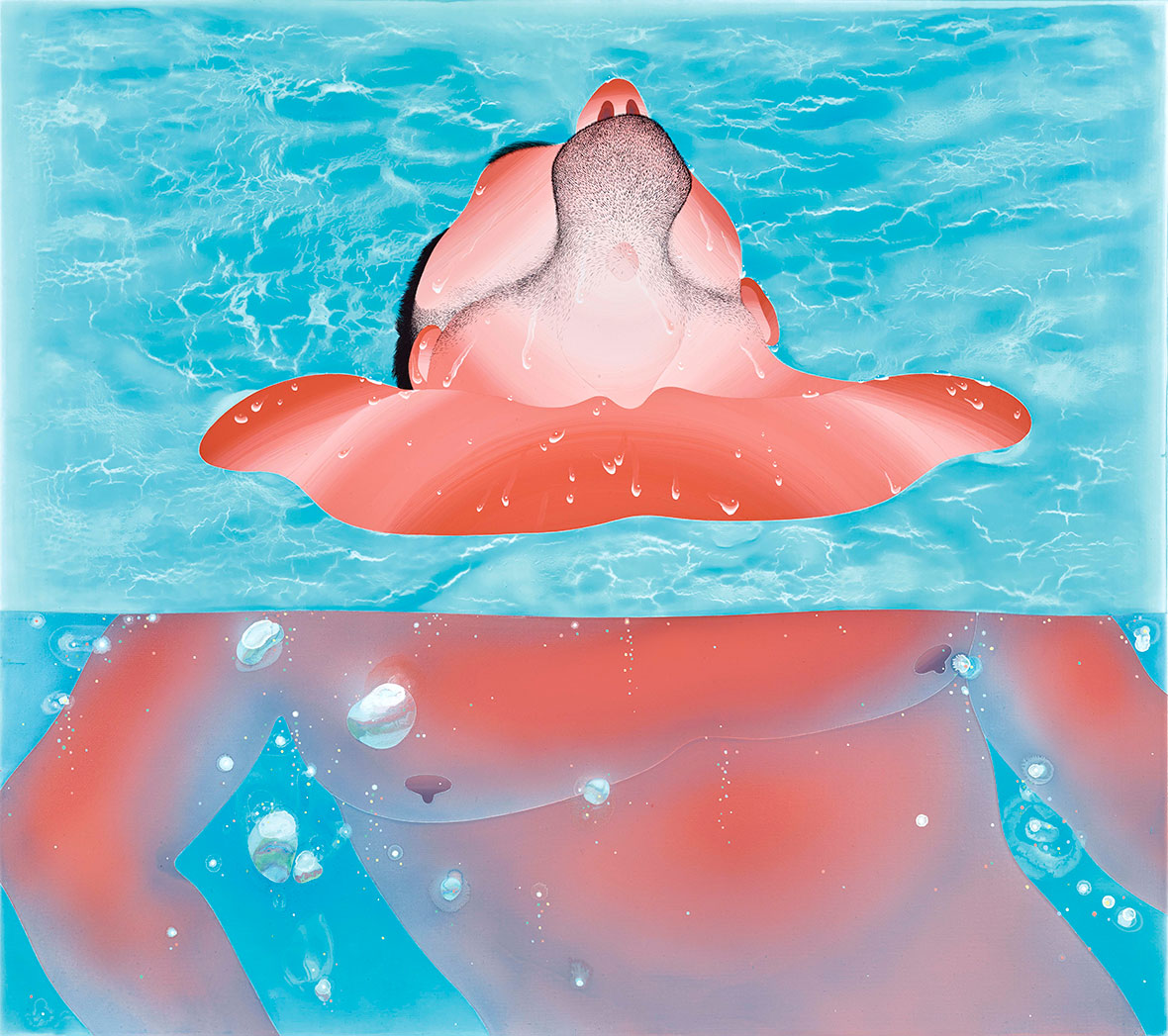
Contrast is central to most of Fan’s work. A sharply delineated horizon line; a pool’s edge in a diptych that switches up colors on each side but shares a common through line; the tanlines. From pale white, to lobster red, to dark umber, he relishes differences in skin tones that he paints. He says that while tanning is often frowned on in East Asia, especially among women, it’s considered healthy and attractive for gay men. He portrays his characters lying prone in every corner of the pool, exhausted by the heady sun or happily relaxed. Awkward tan lines with pasty white flesh starkly juxtaposed alongside freshly burnt skin is a regular feature as well. “This is just a normal feature at the pool, but I try to exaggerate that aspect,” he grins. “Tan lines show off what areas are usually concealed, which suggests a sensual desire of peeking at what’s not usually available.”
在范扬宗大部分作品中,对比是核心。清晰明了的地平线,以游泳池边缘将画面分成两侧,不同的颜色并互并列,但又共享着同一条分界线;从白皙、红润再到黝黑的肤色,他热衷于绘画不同的肤色。他表示,虽然在东亚国家,人们不喜欢晒黑,特别是女性,但对男同性恋者来说,这种肤色代表着健康和吸引力。他笔下的人物俯卧在游泳池的各个角落,沐浴在热烈的阳光,或心情愉快地放松休息。除此之外,黝黑与白皙之间明显的分界线也是其作品中常见的细节。“这在游泳池边很常见,但我喜欢夸大这种效果,”他笑着说道,“这些分界线代表了人们喜欢遮盖的部位,也代表着人们渴望窥看又看不到的地方。”
While Fan paints mainly in cool colors, pastels, and pared-down tones, a sense of warmth still radiates from his canvases. Clear blue skies, dripping sweaty, and well-cooked skin imbues an unmistakable summertime vibe. He also manages to avoid easy categorization, constantly readjusting the way his work could interpreted, all the while remaining laser focused on his subject material. It makes his work instantly accessible while still encouraging deep viewing—a difficult balance that he pulls off with ease.
虽然范扬宗主要以冷色调、粉彩和低饱和度色彩绘画,但其画面上仍然洋溢着温暖感。晴朗的蓝天、汗水和皮肤,提升了画面的温度。他刻意避免作品被简单分类,不断调整作品的解读方式,同时专注于同一个主题,这使得他的作品与观众产生共鸣,又引观众对画面深入解读。他不费吹灰之力,就实现了这种巧妙的平衡。
Like our stories? Follow us on Facebook and Instagram.
Instagram: @xyzfanxyz
Contributor: Mike Steyels
Chinese Translation: Olivia Li


